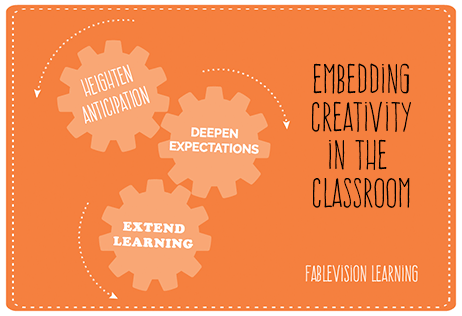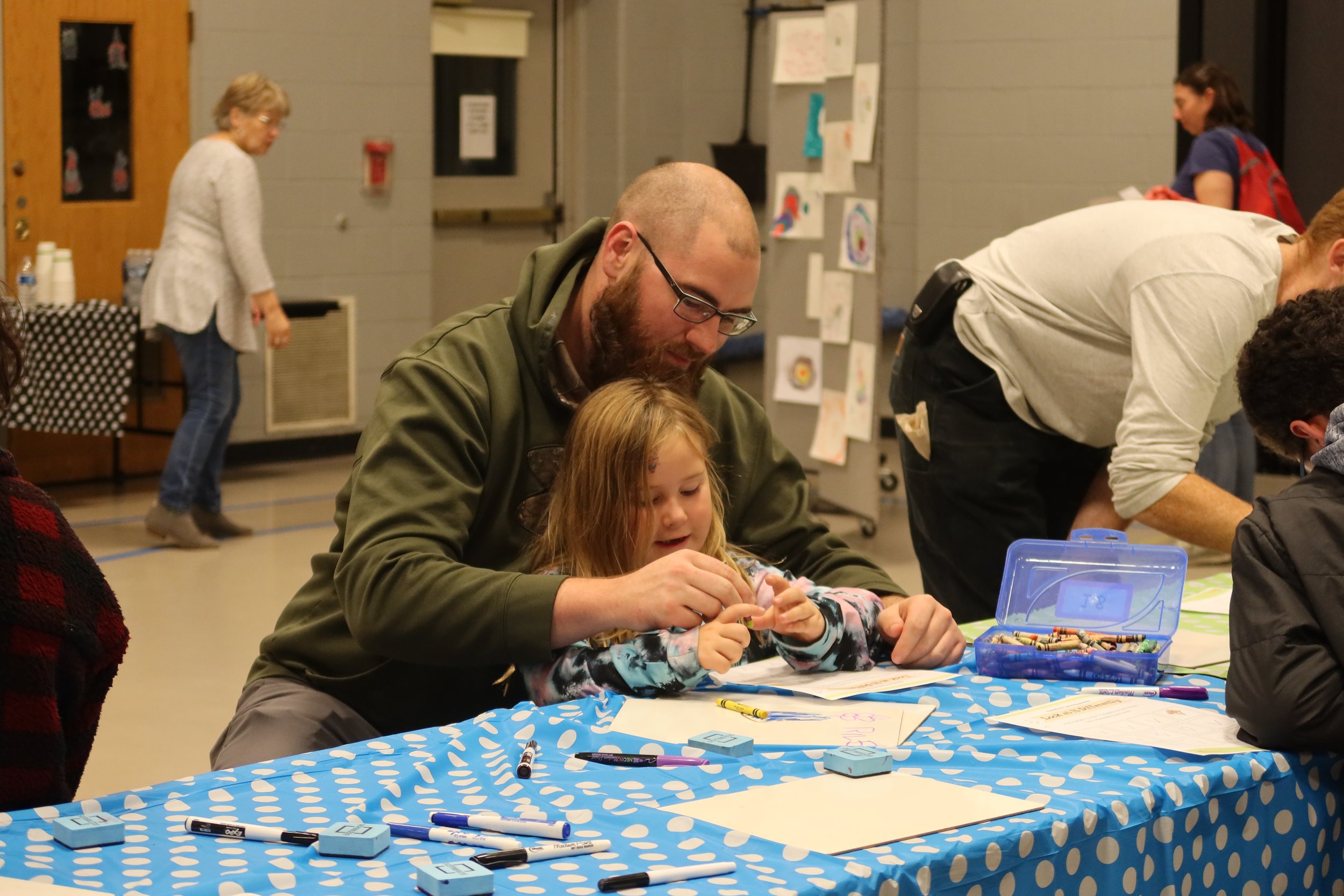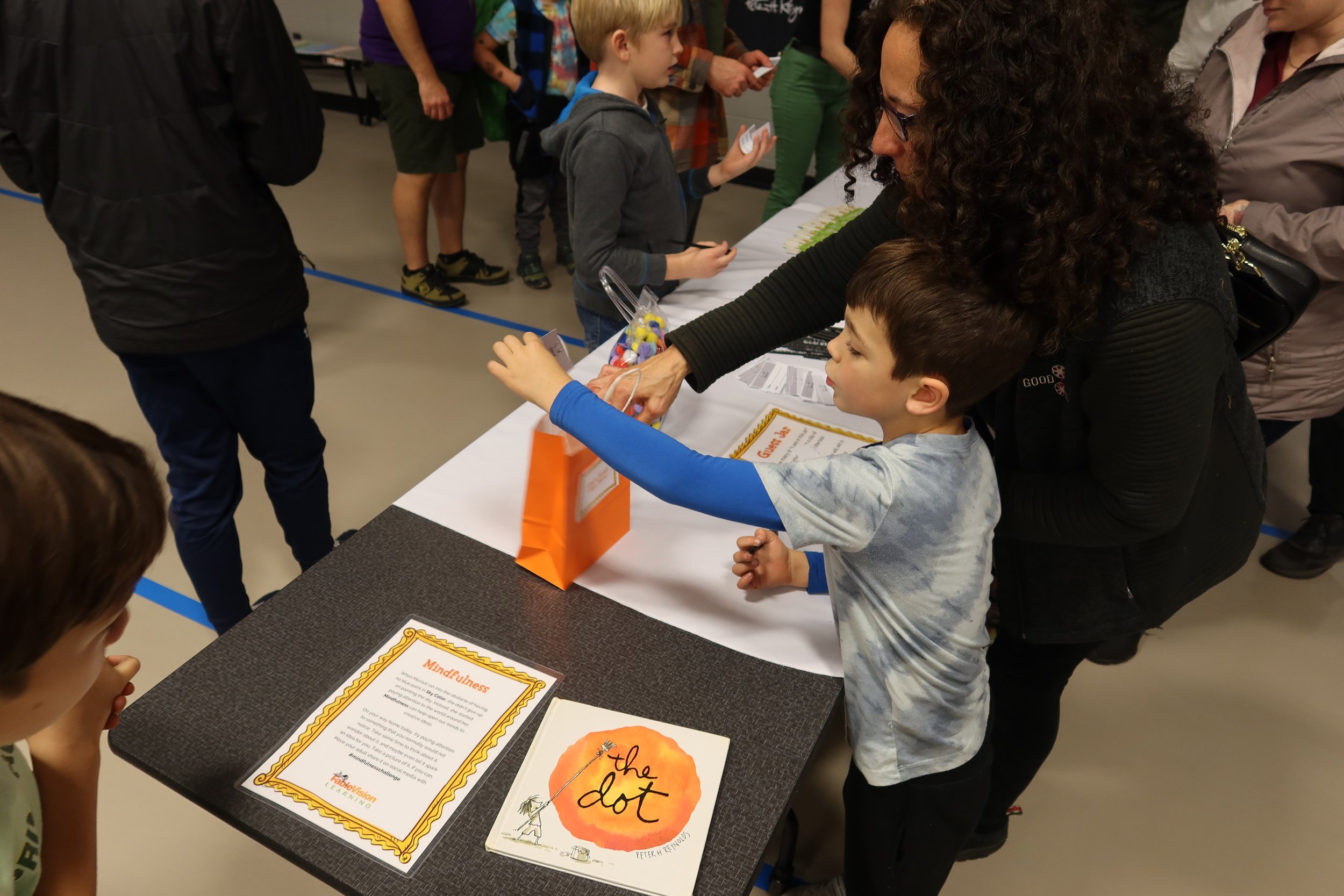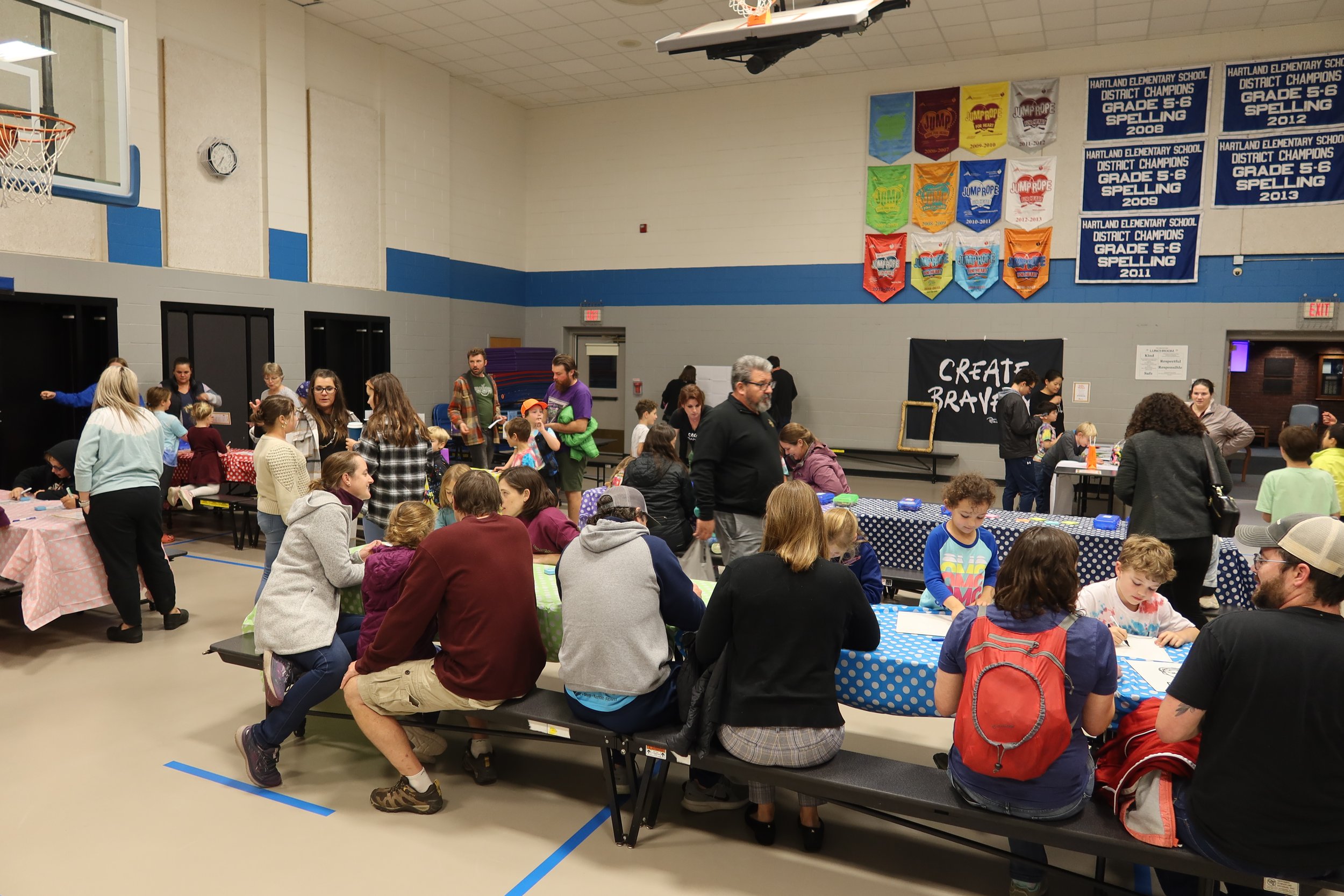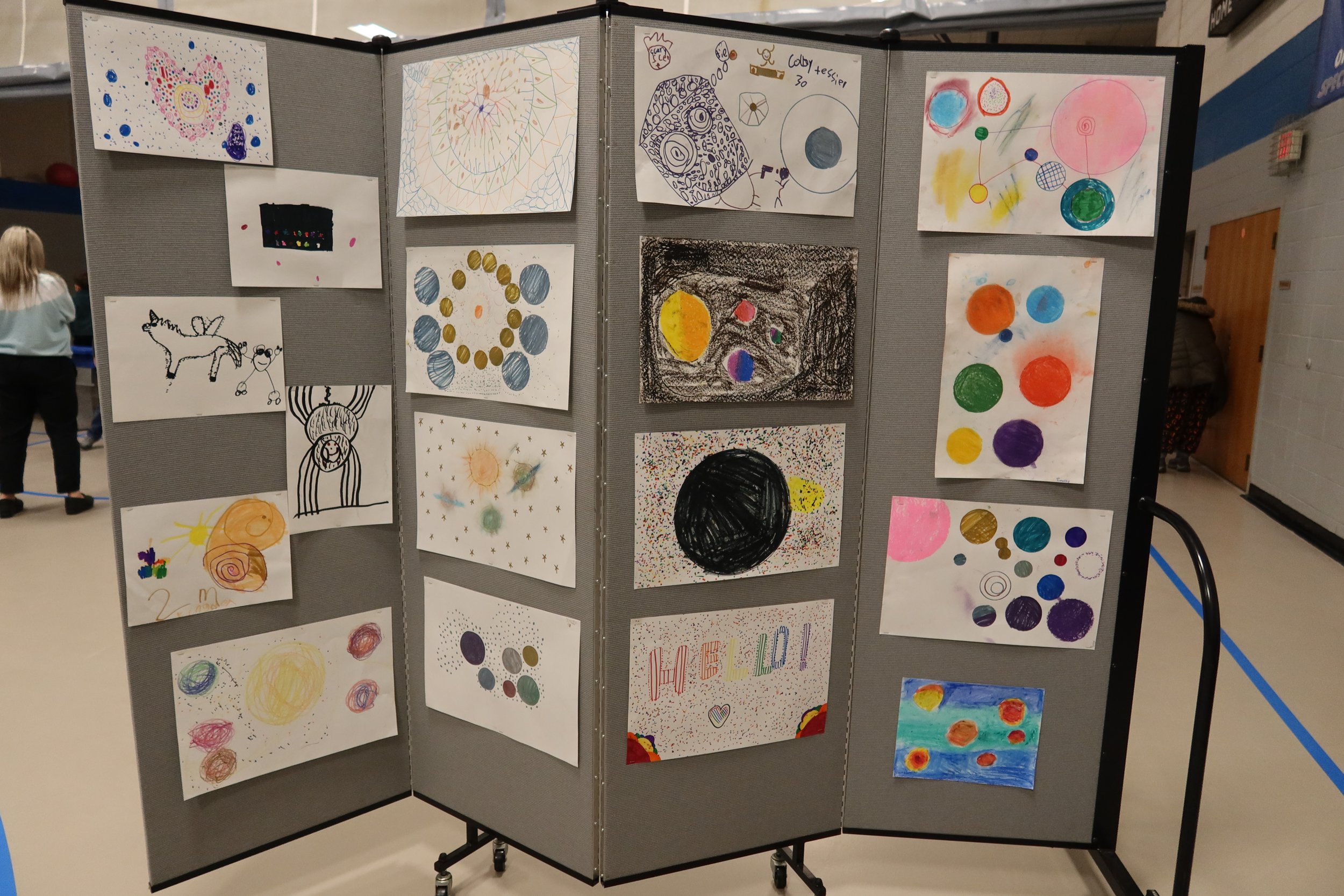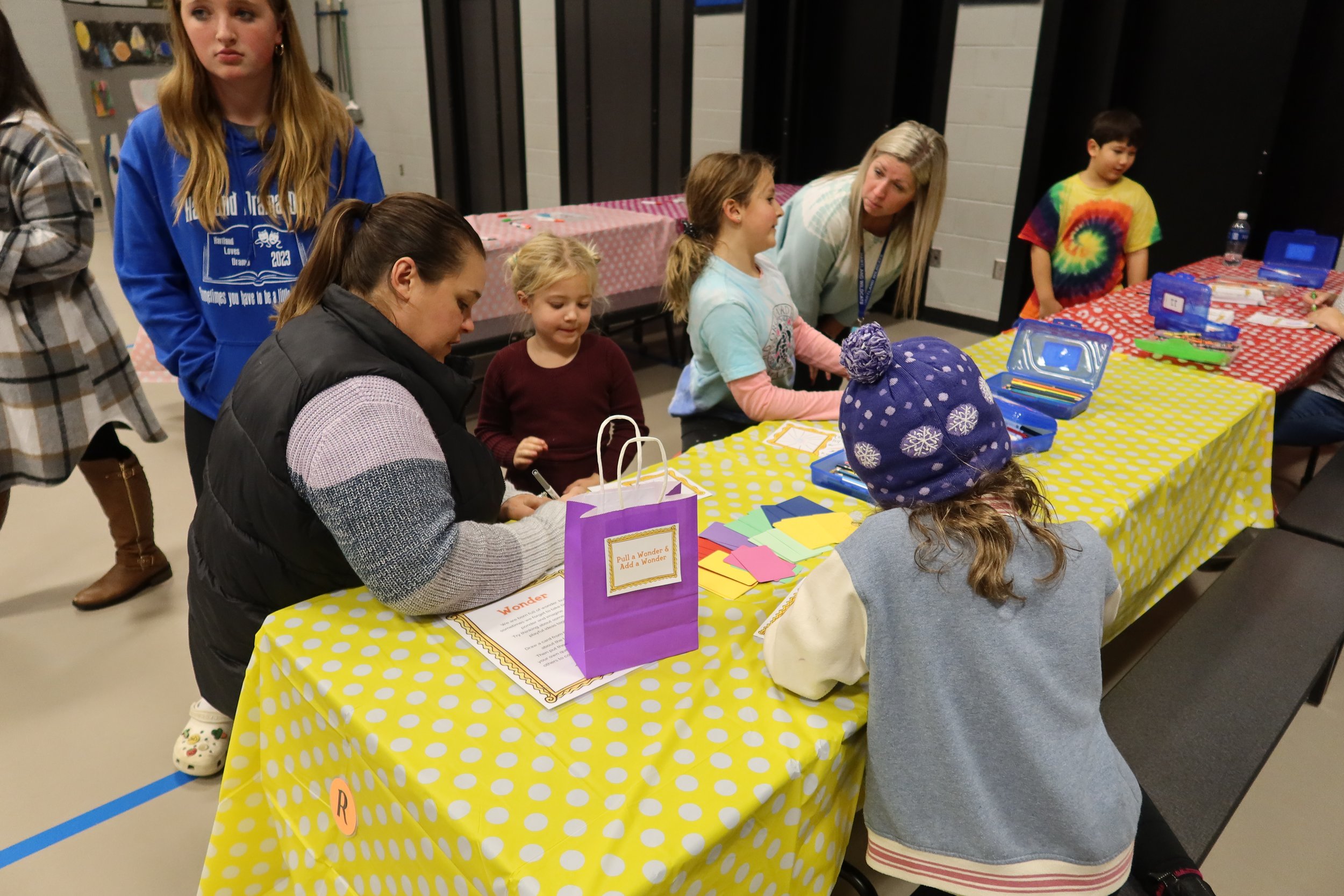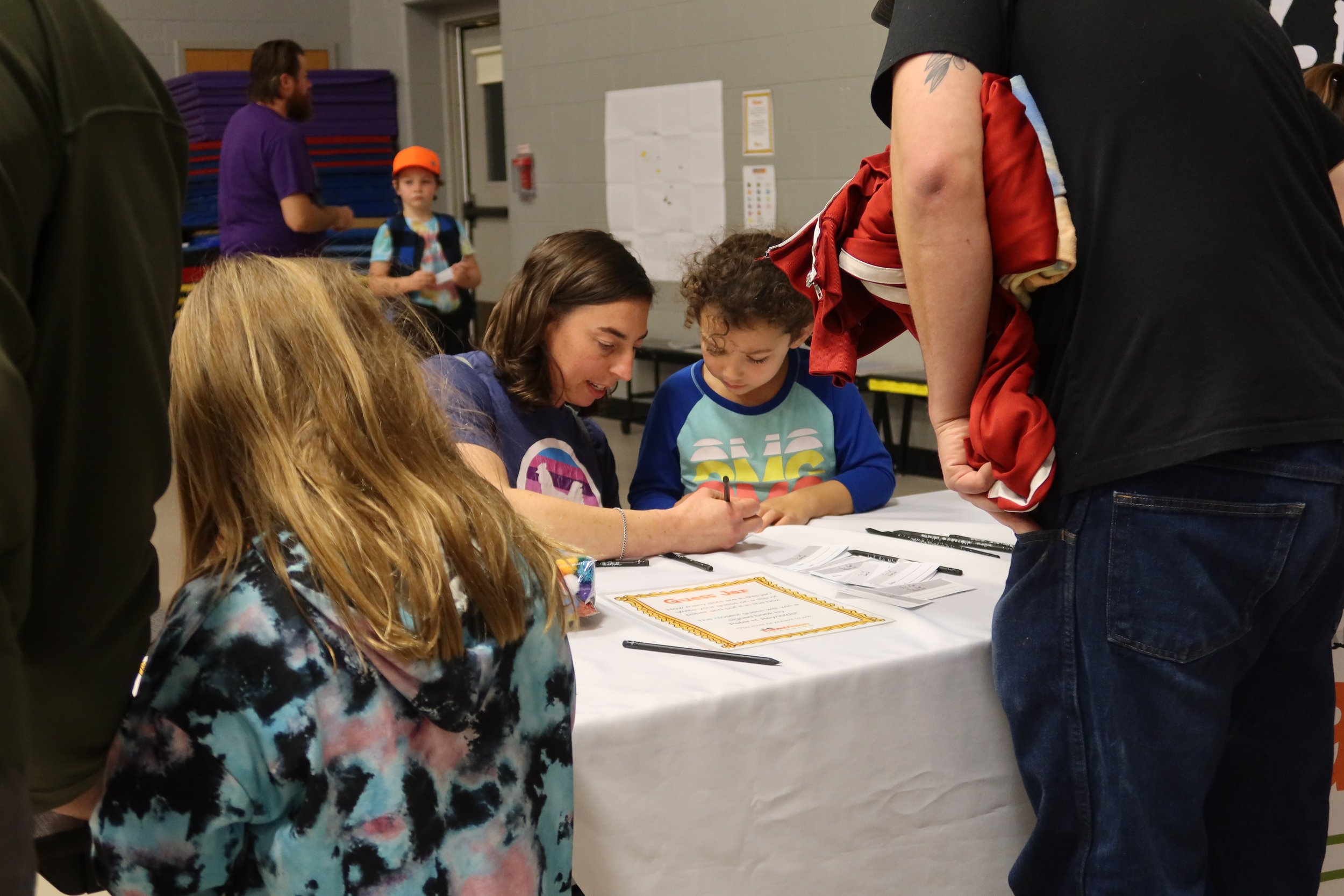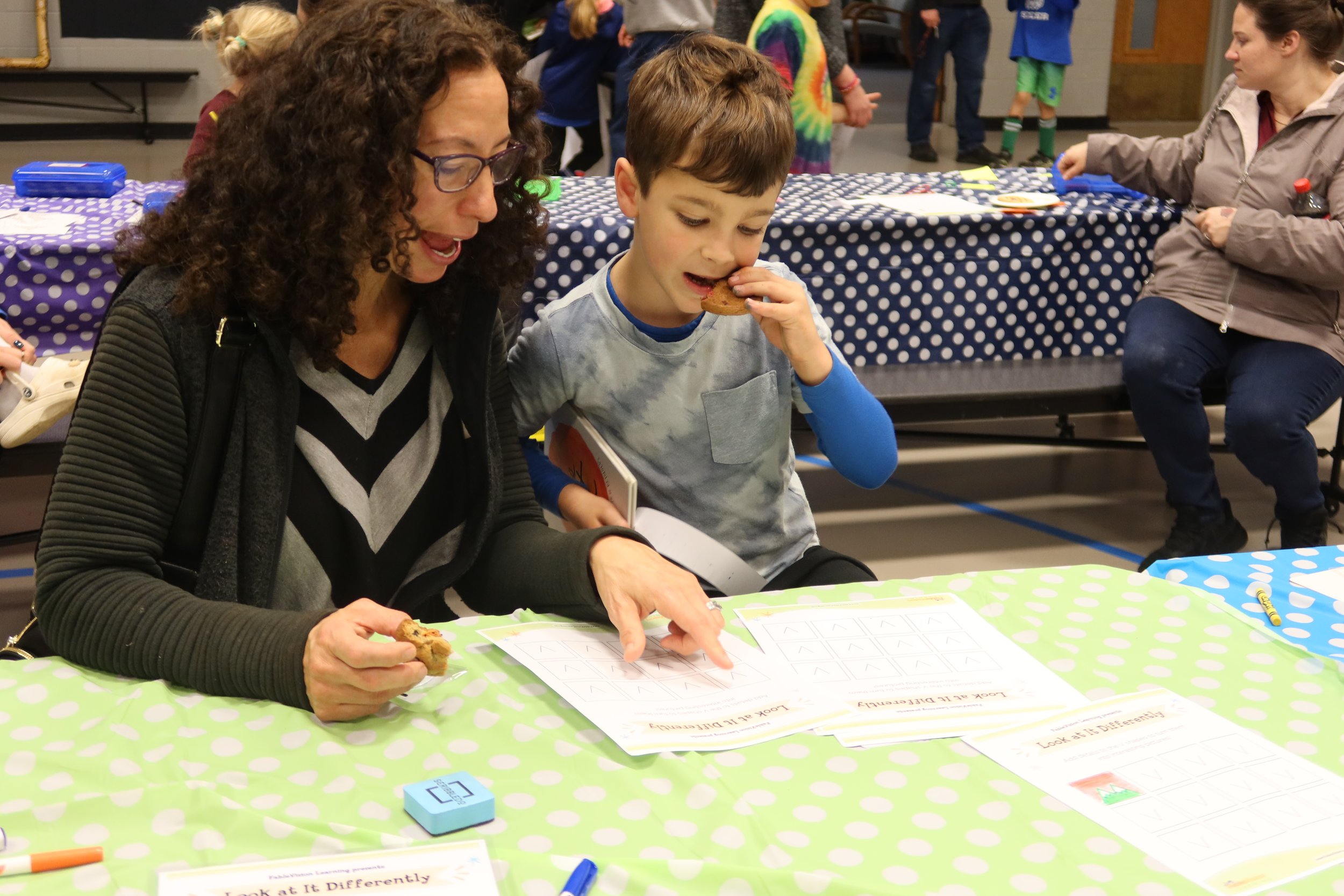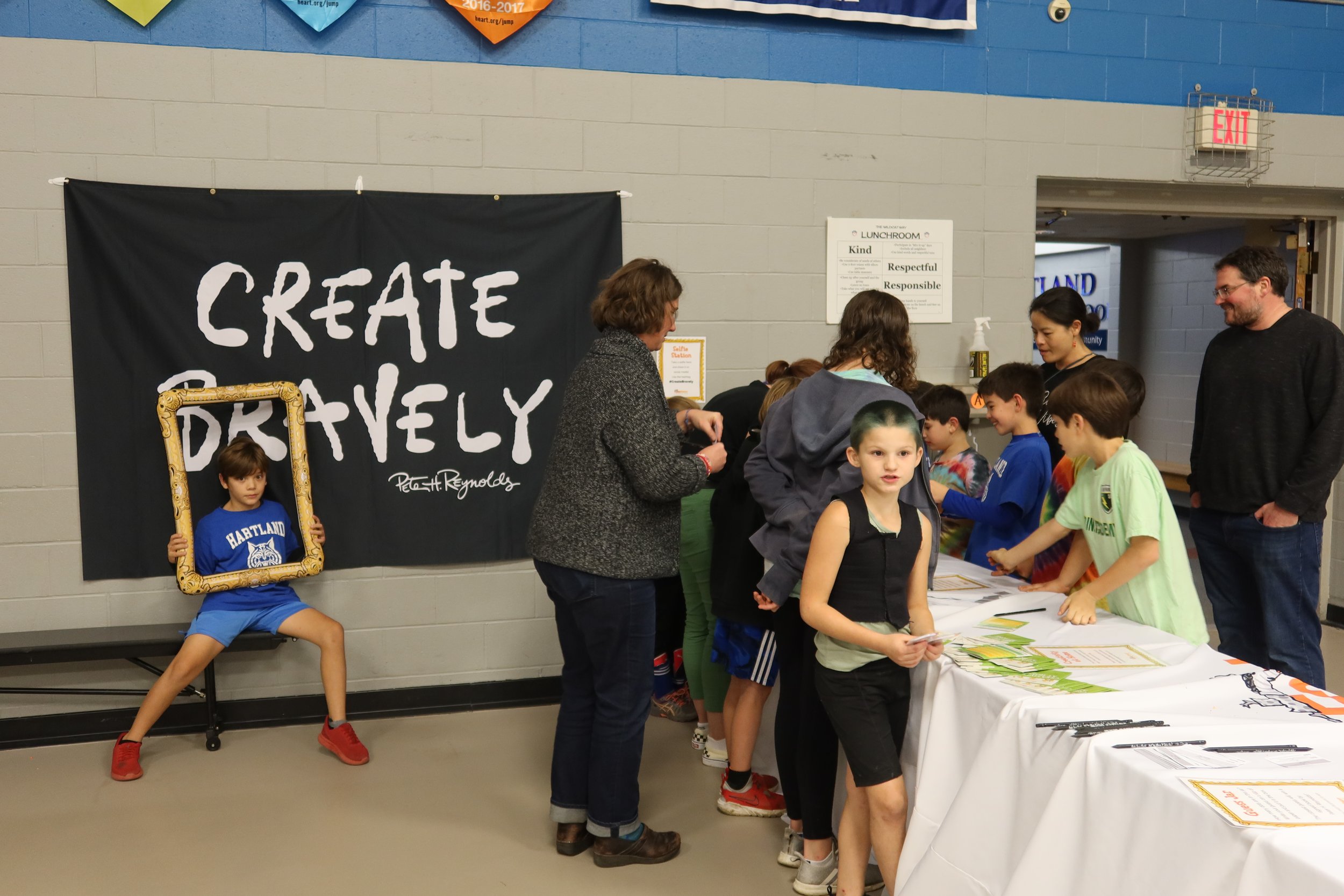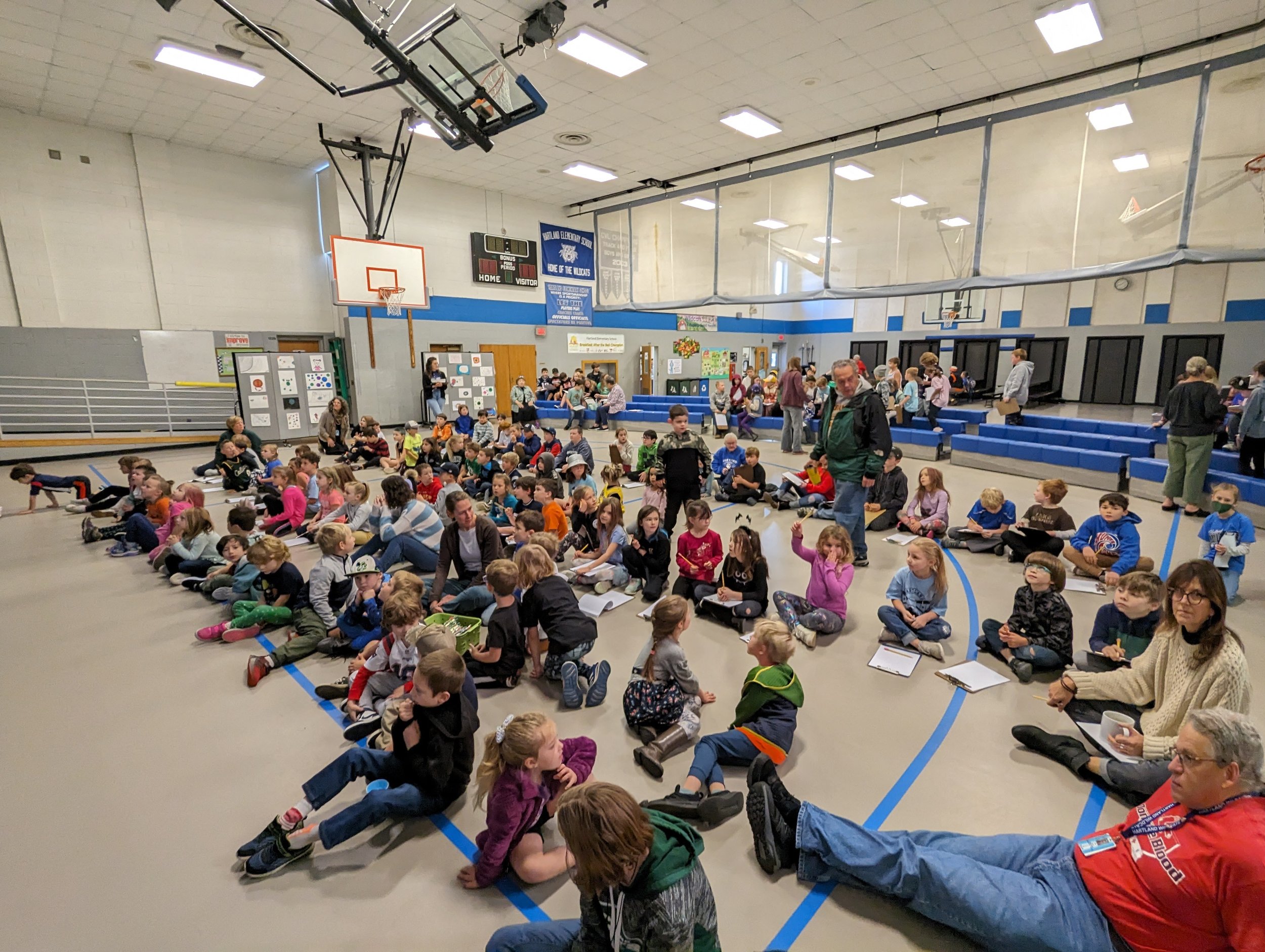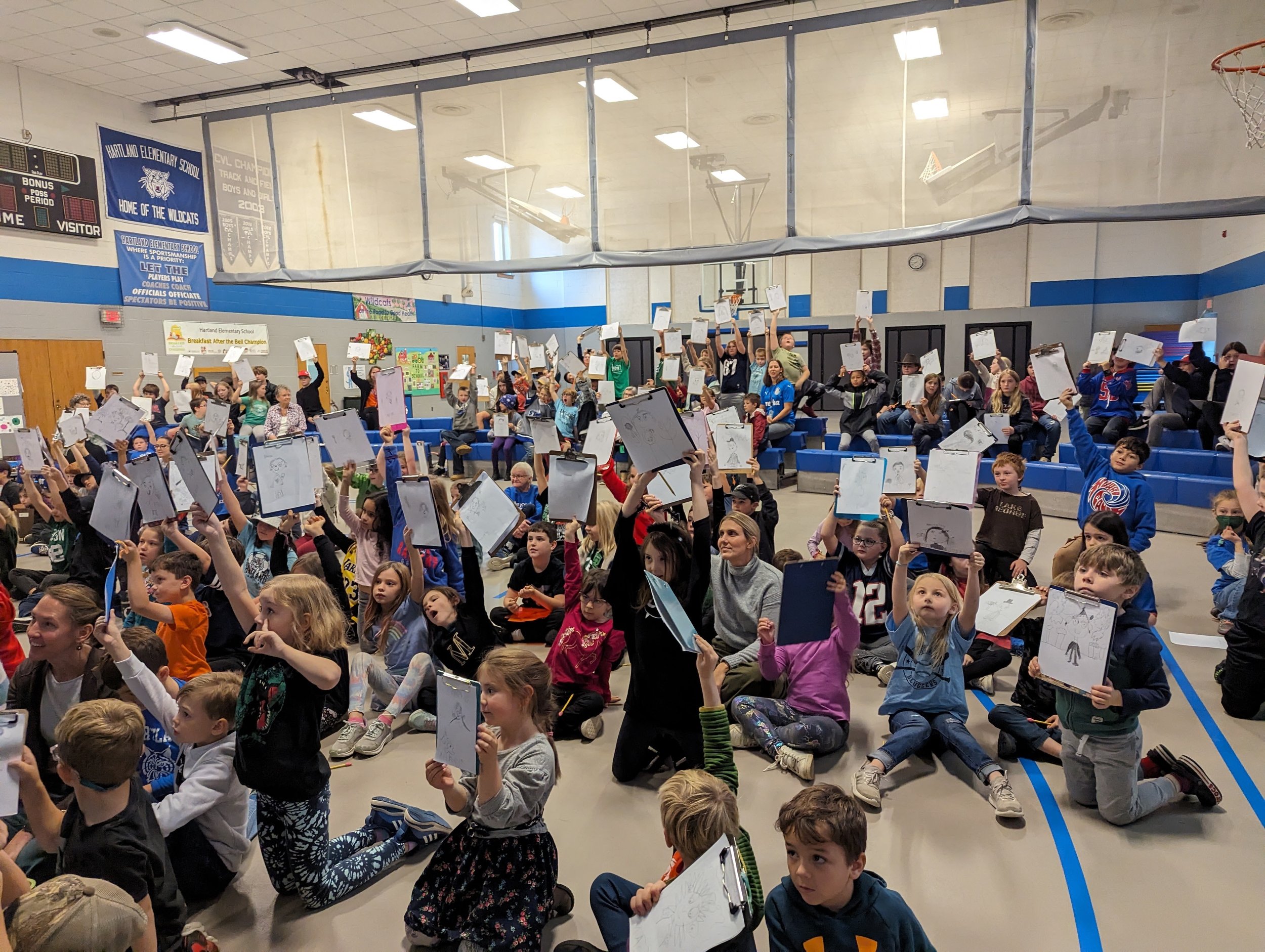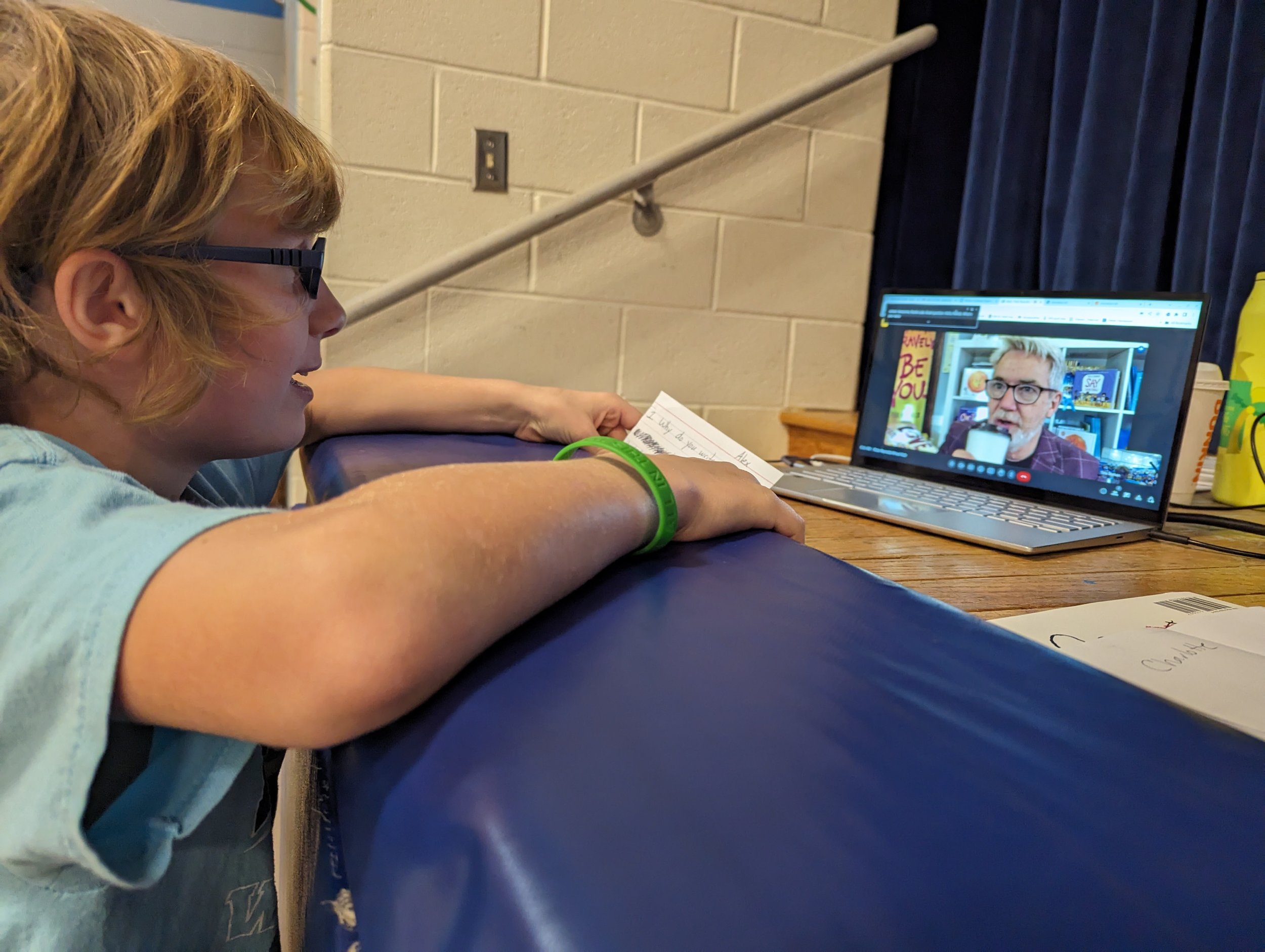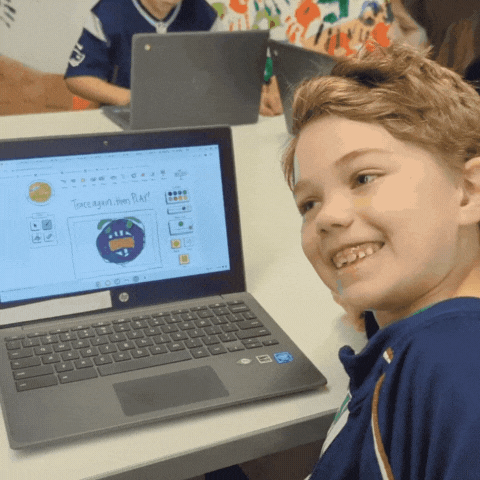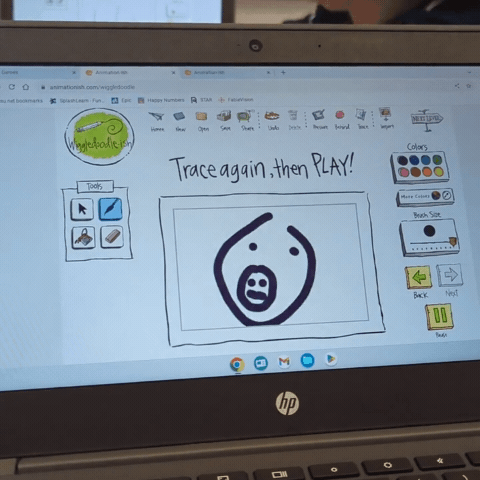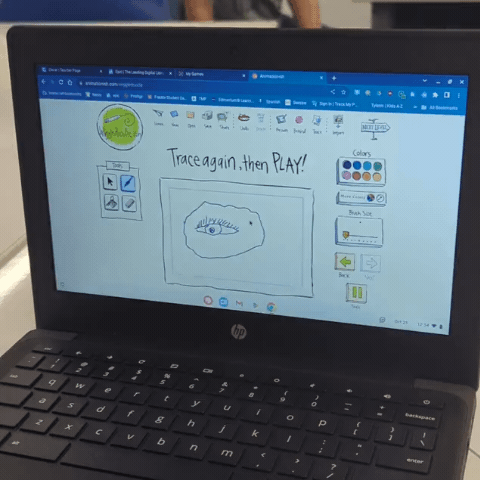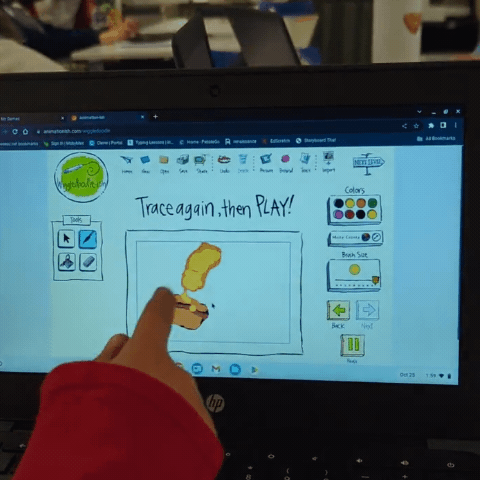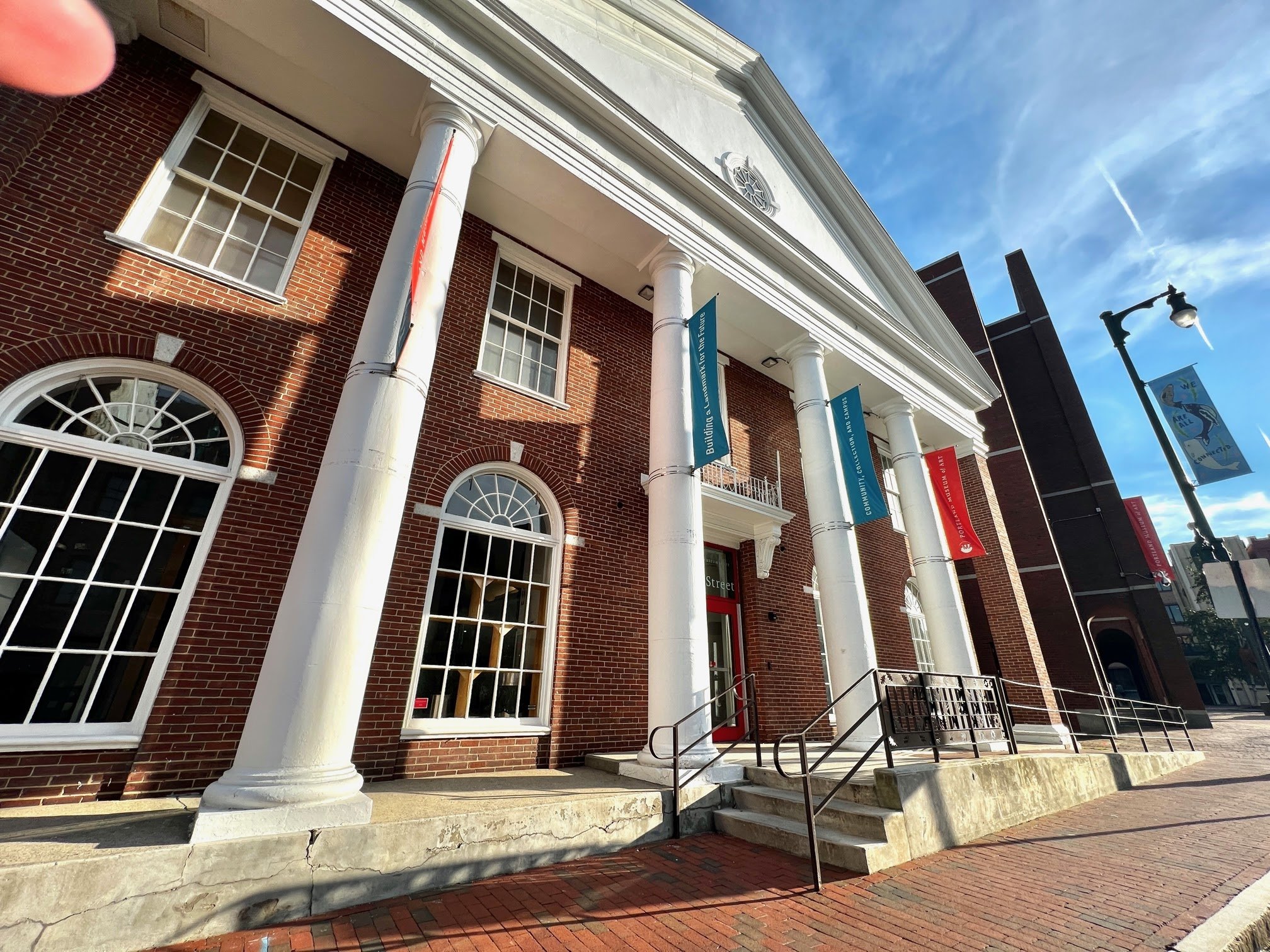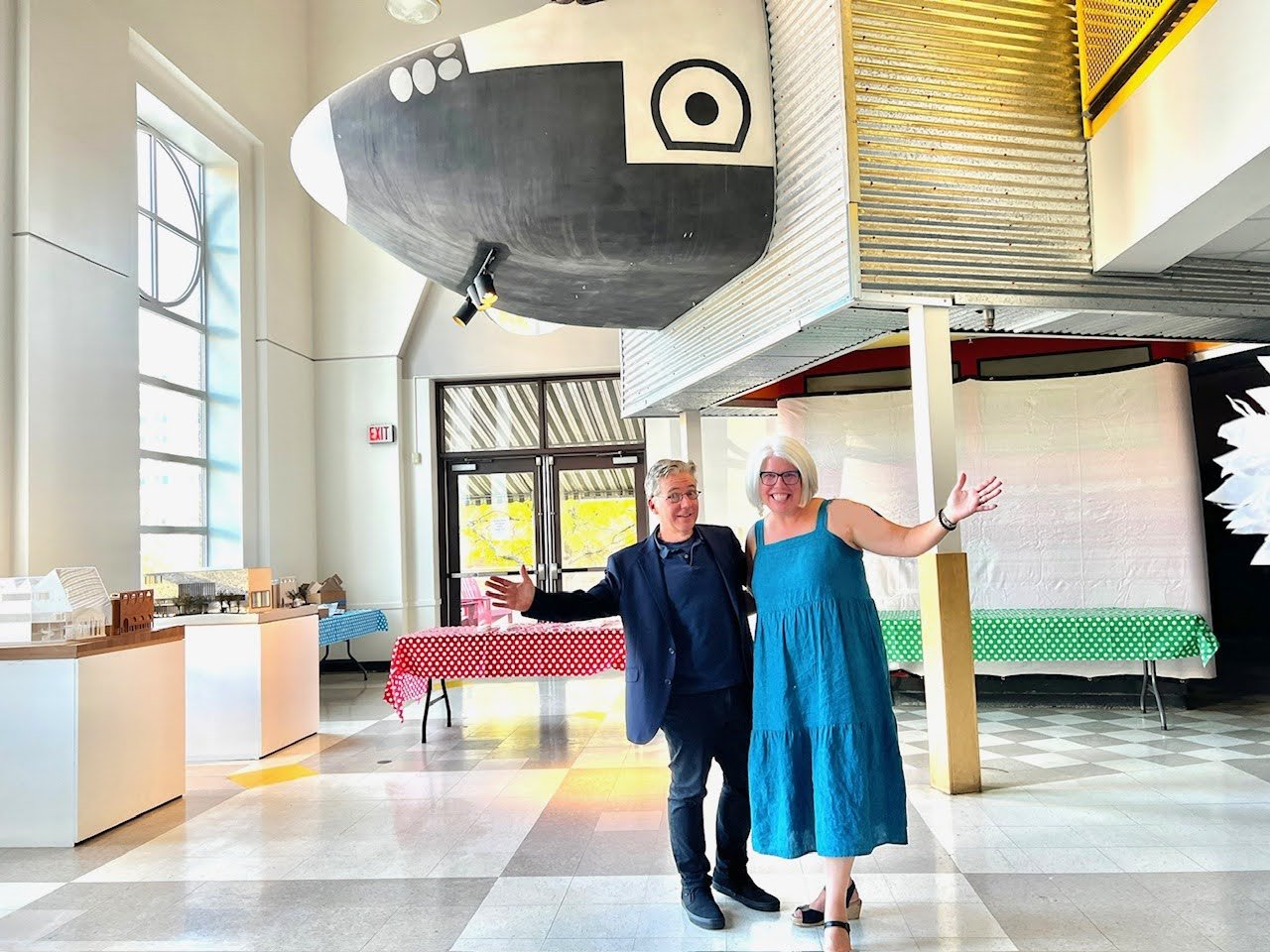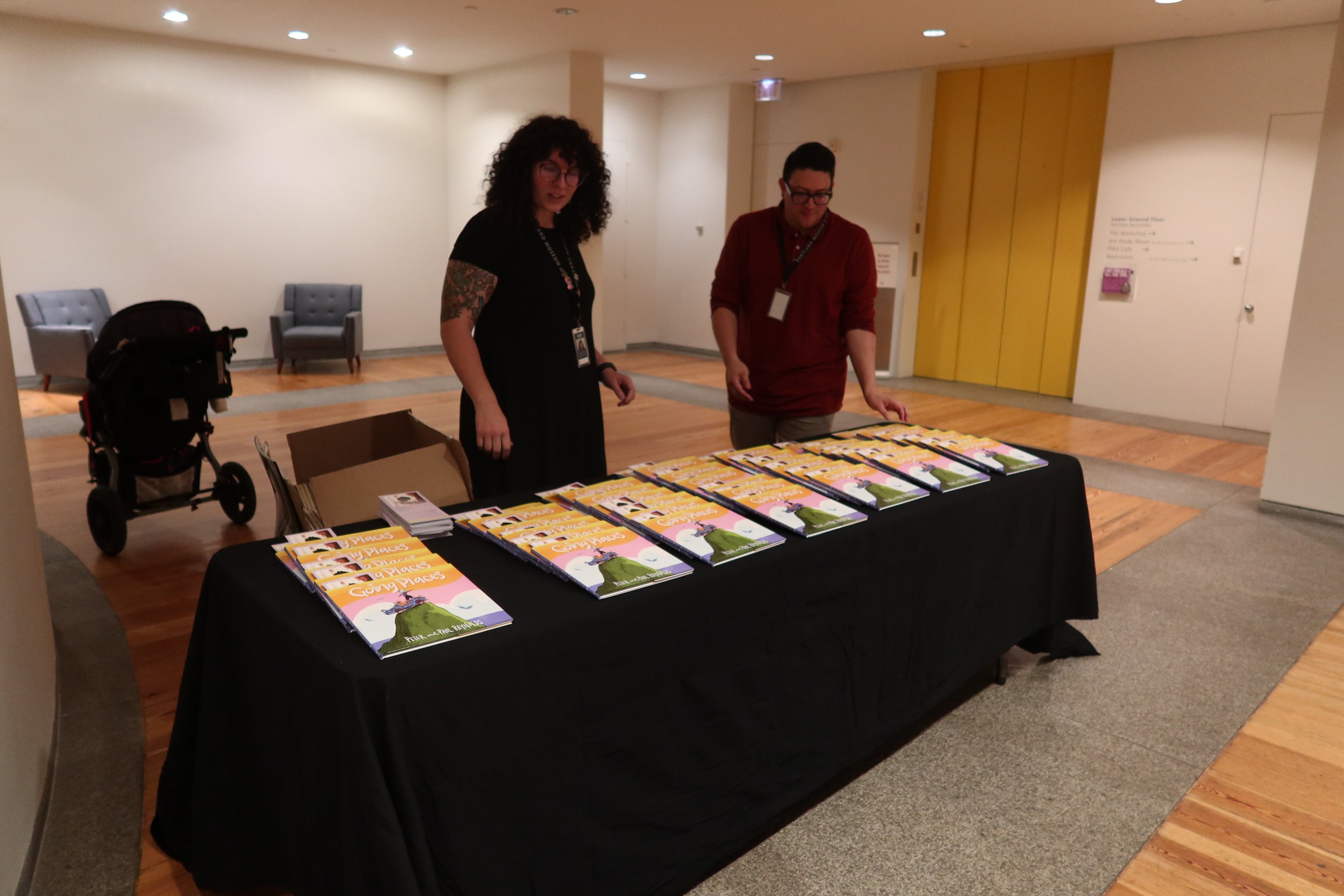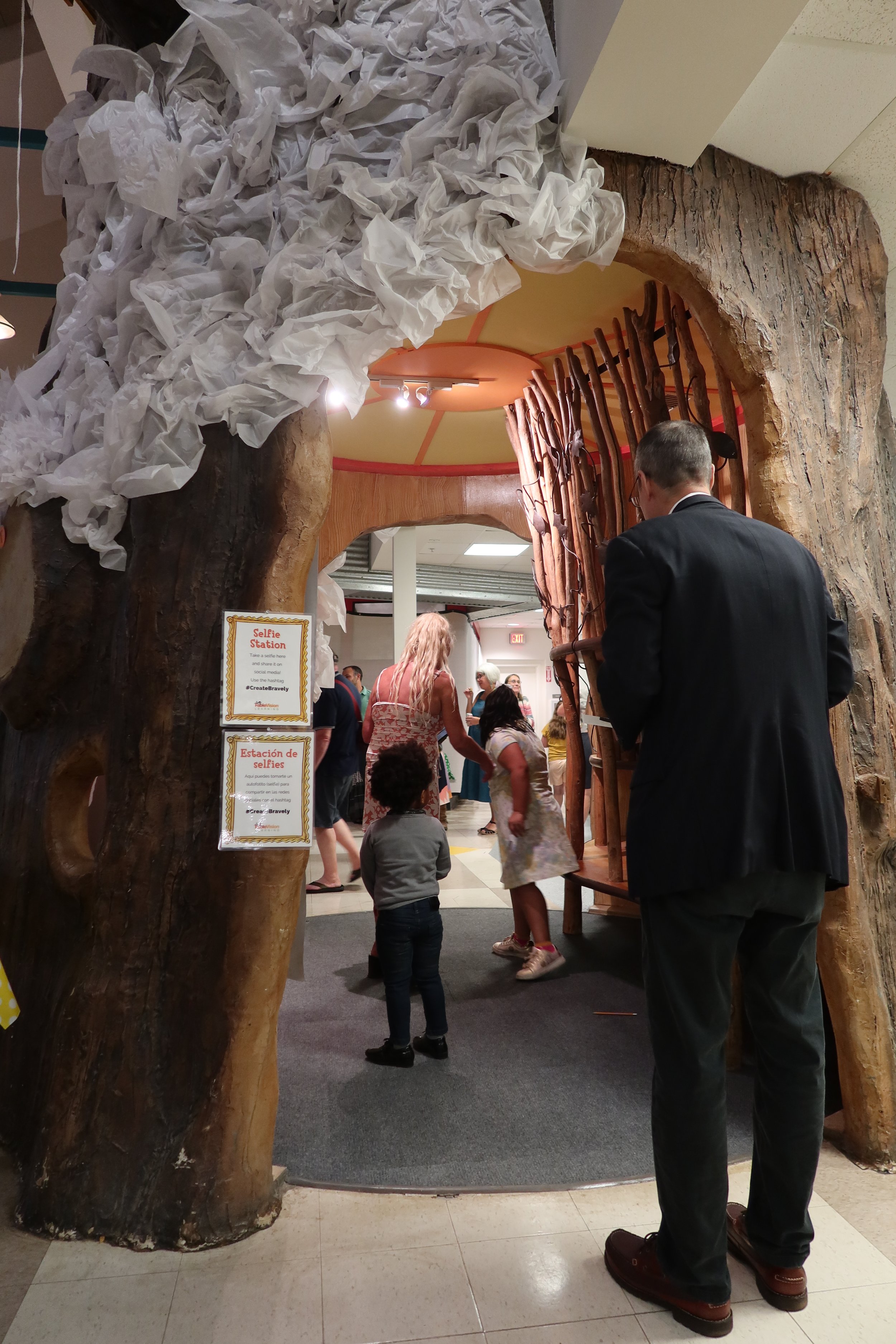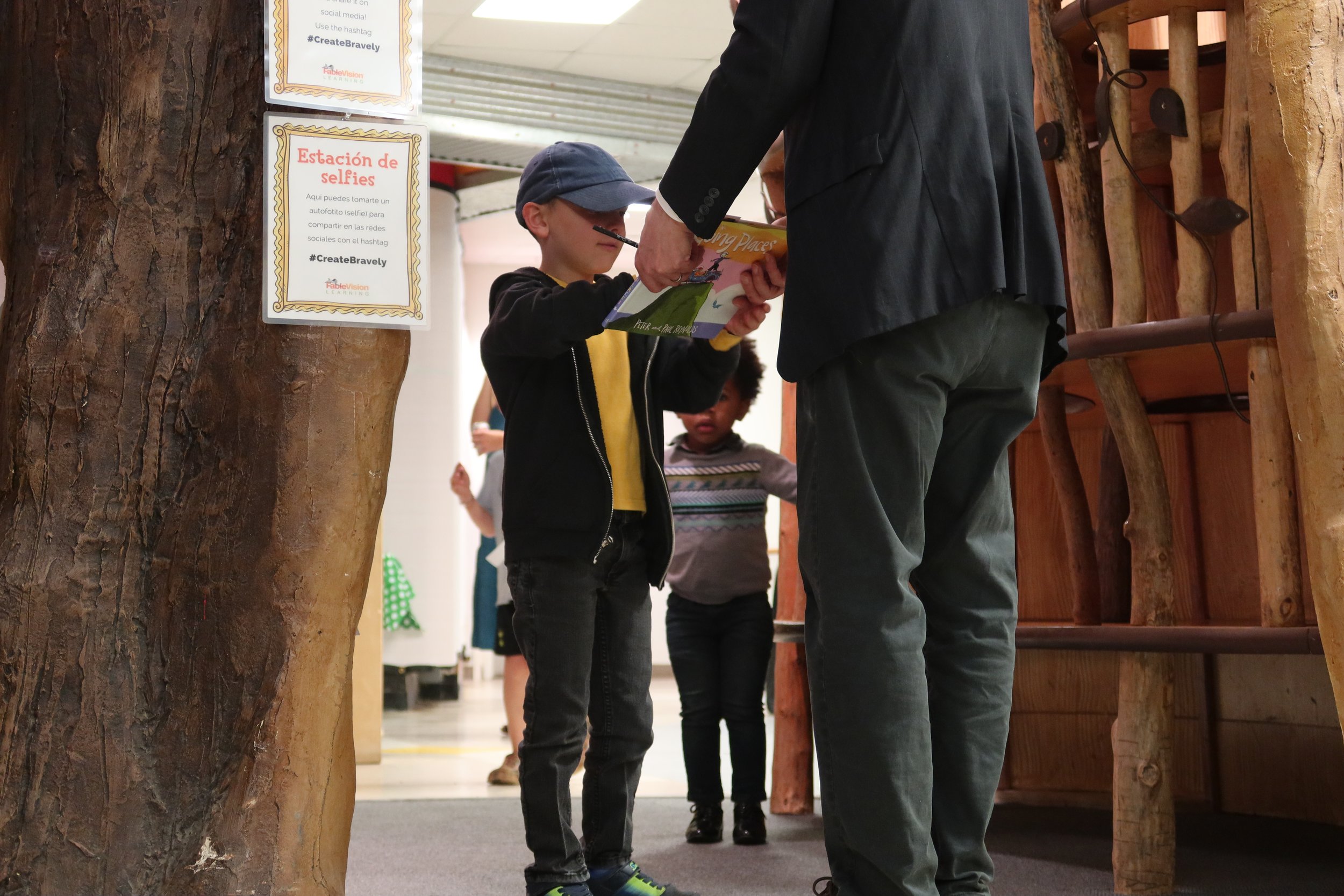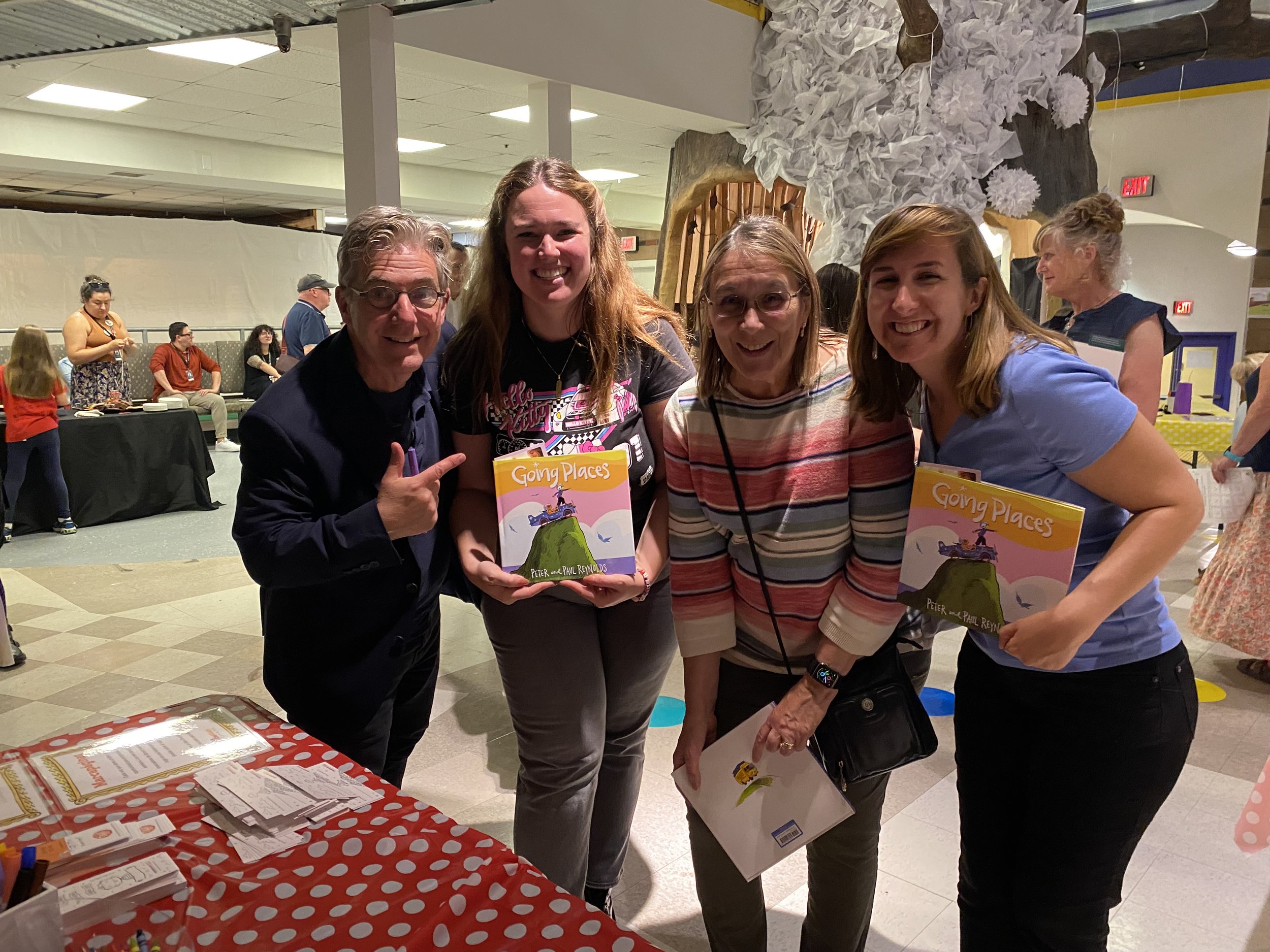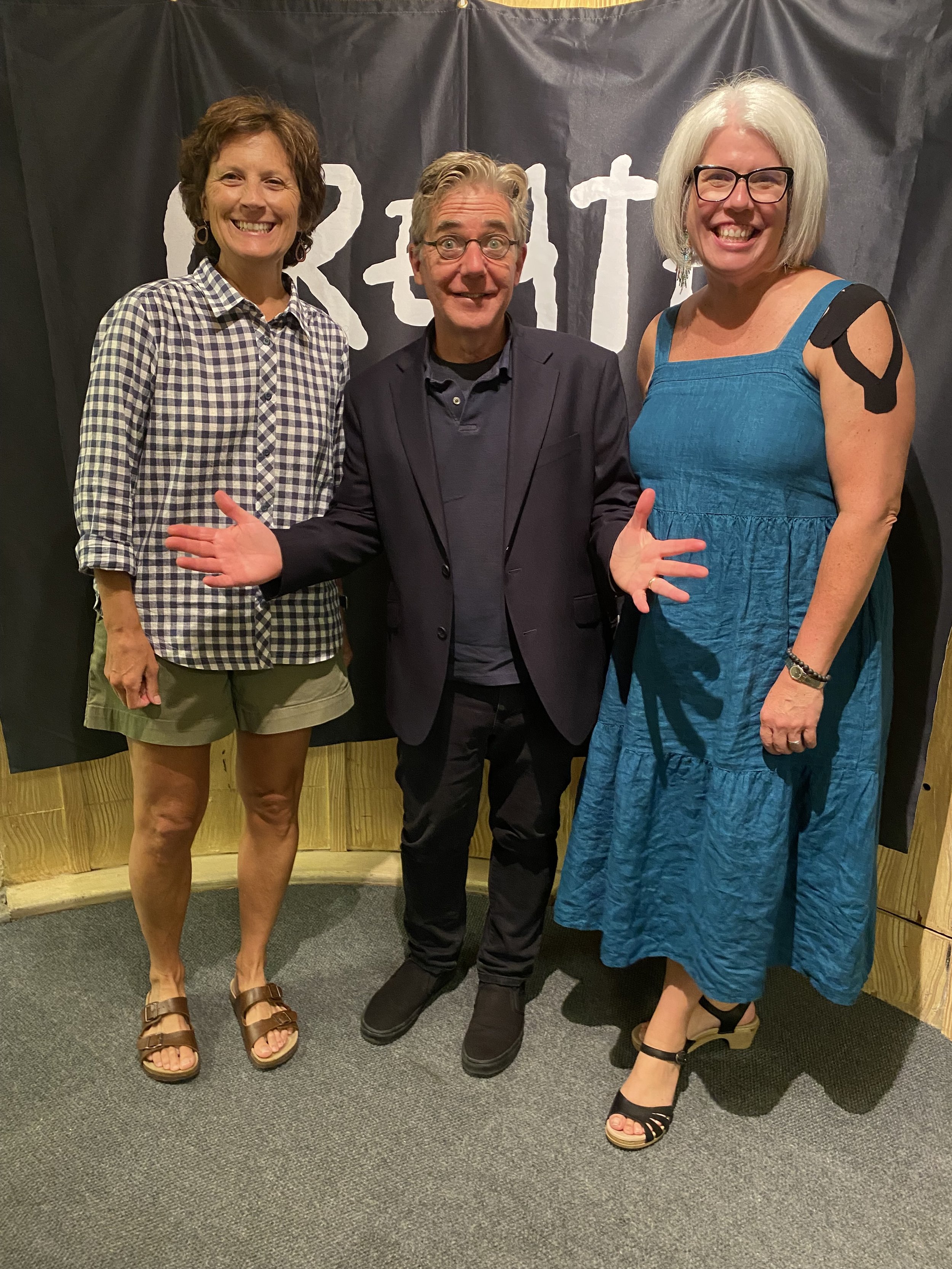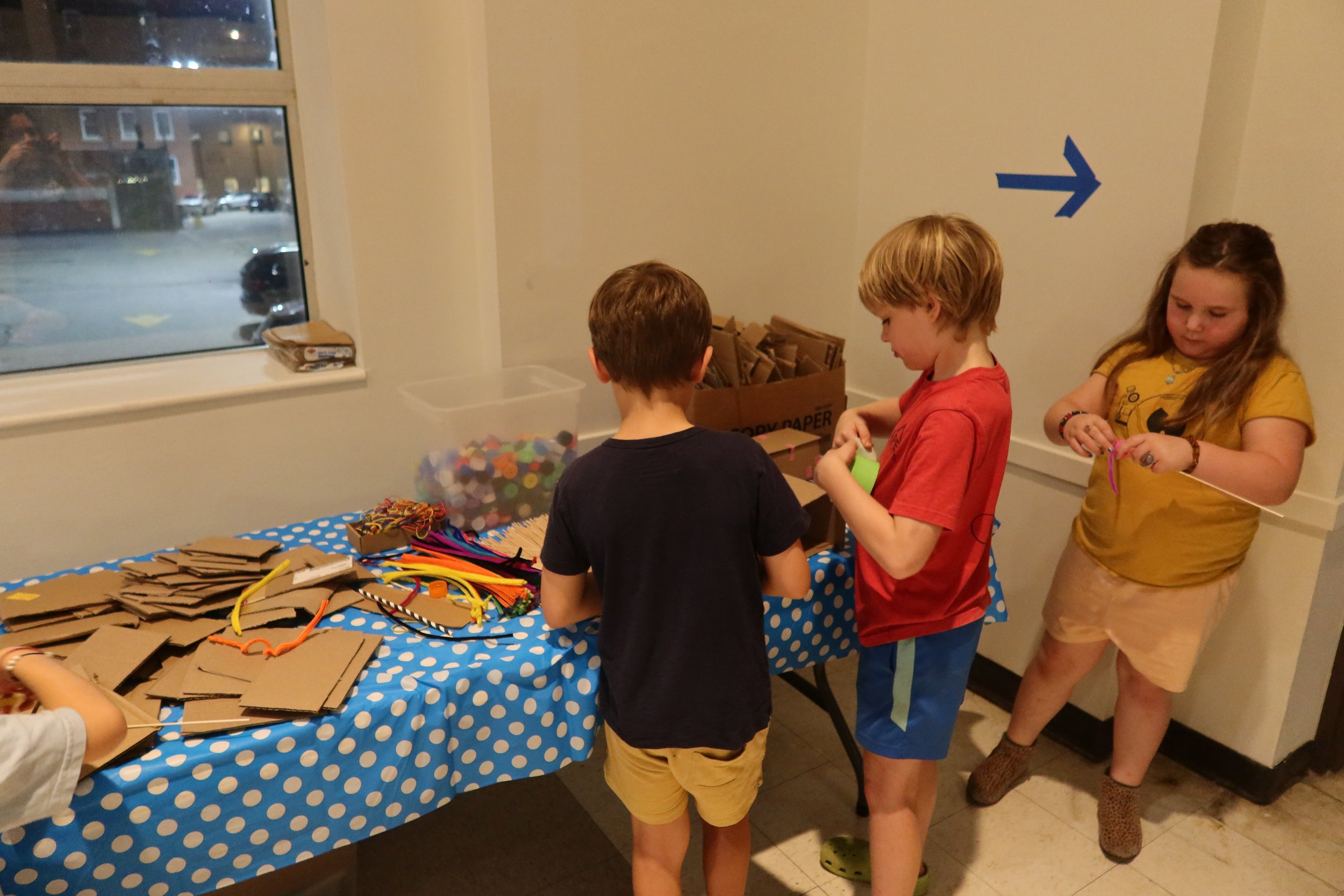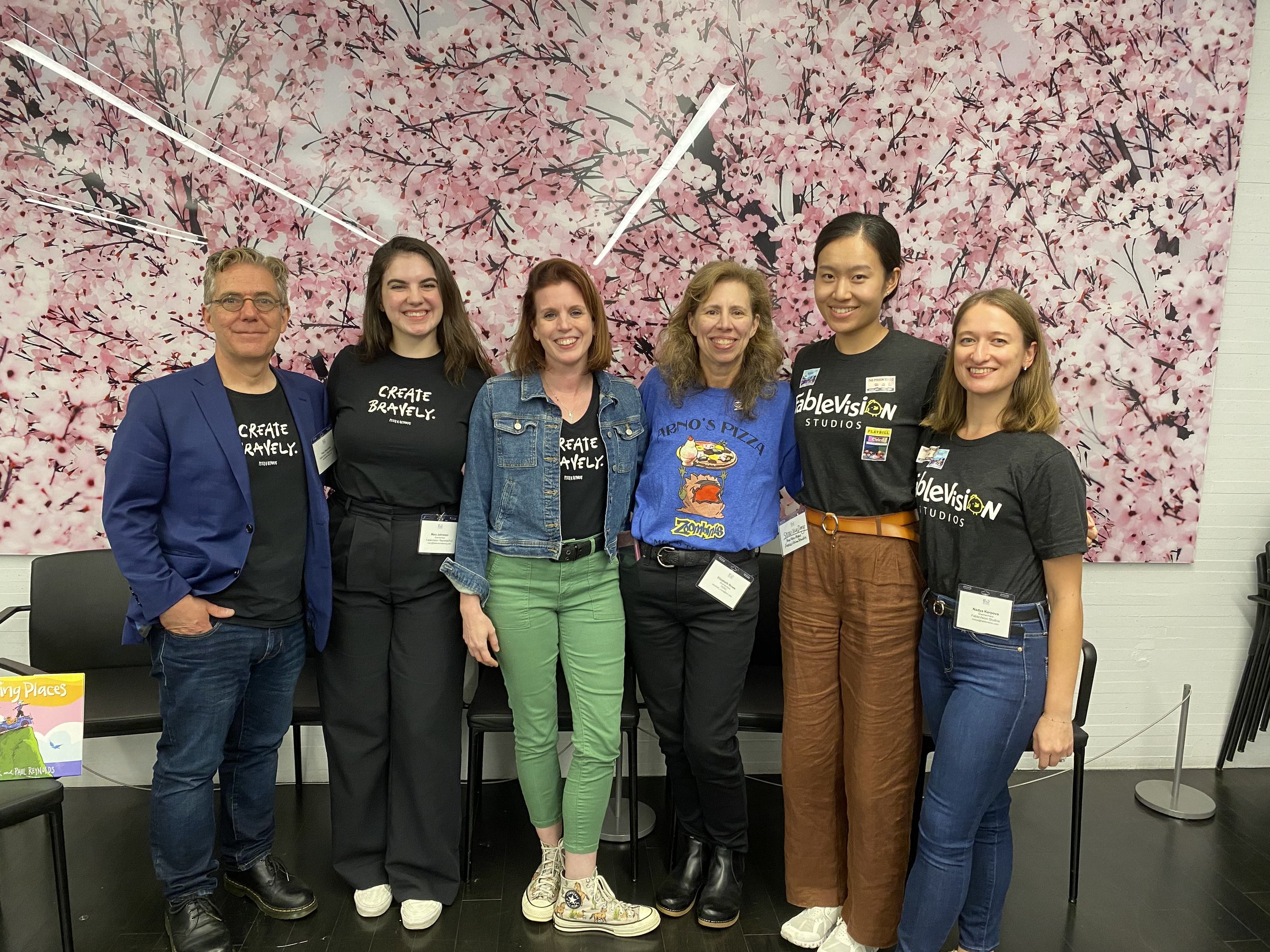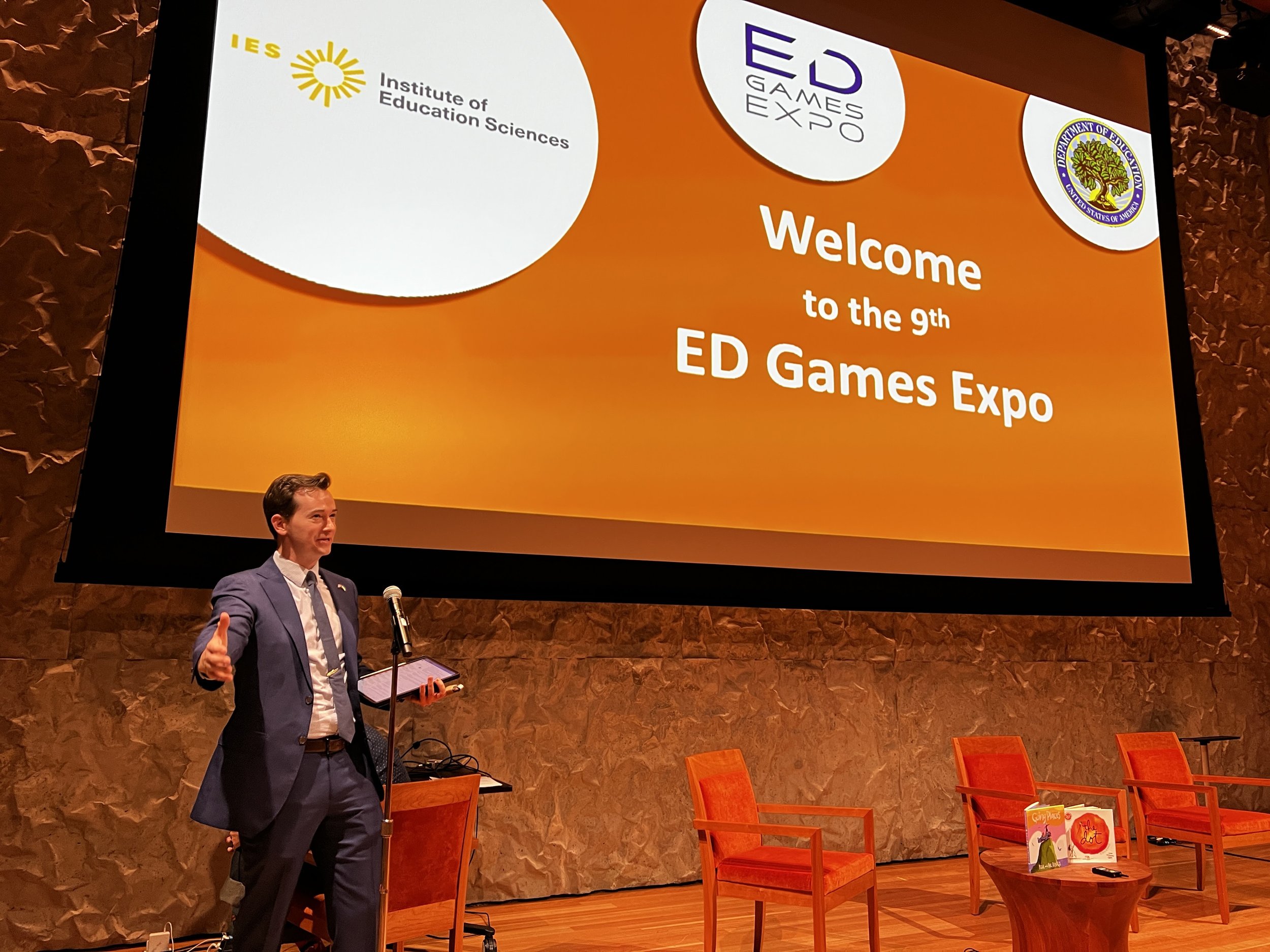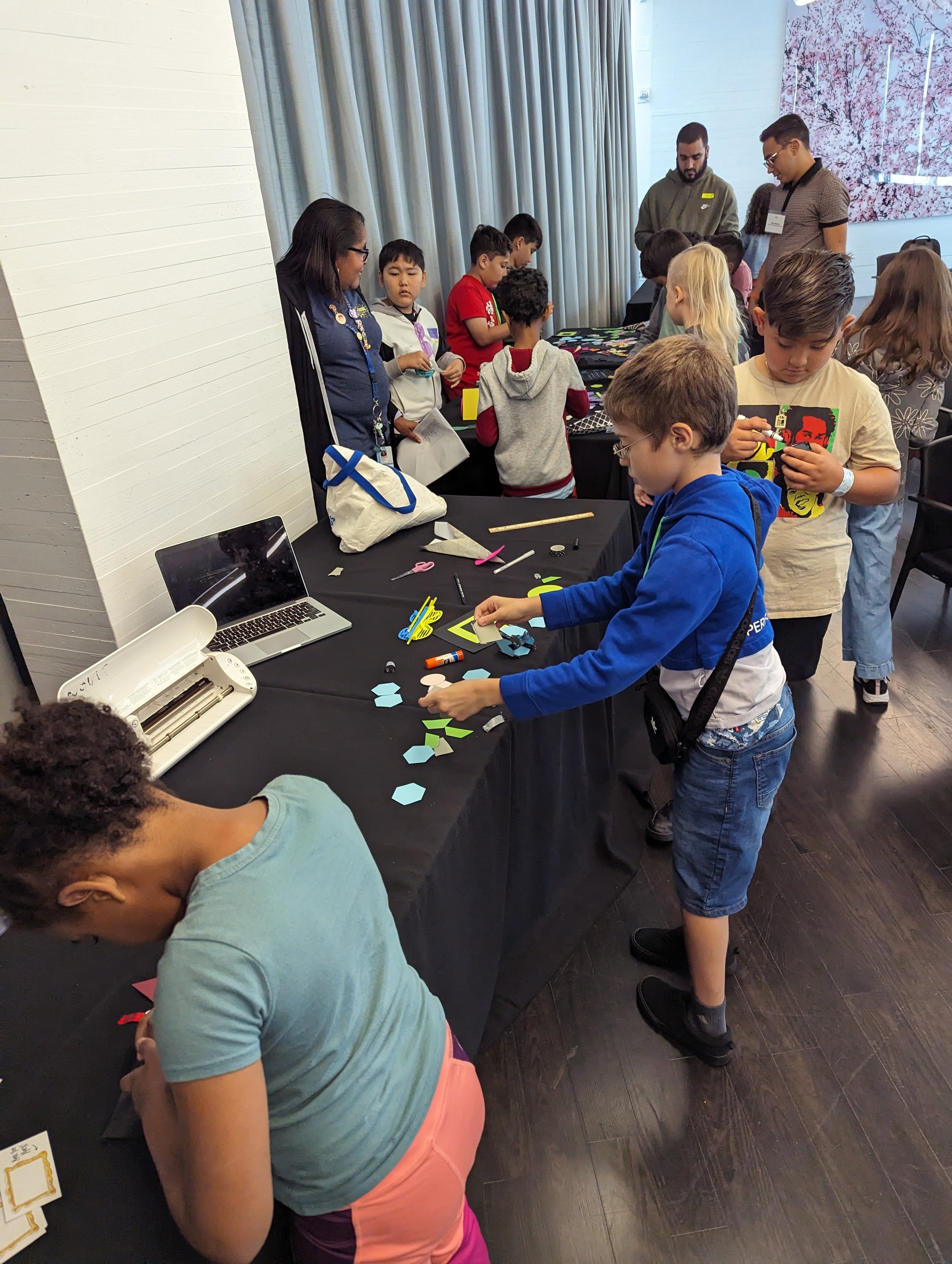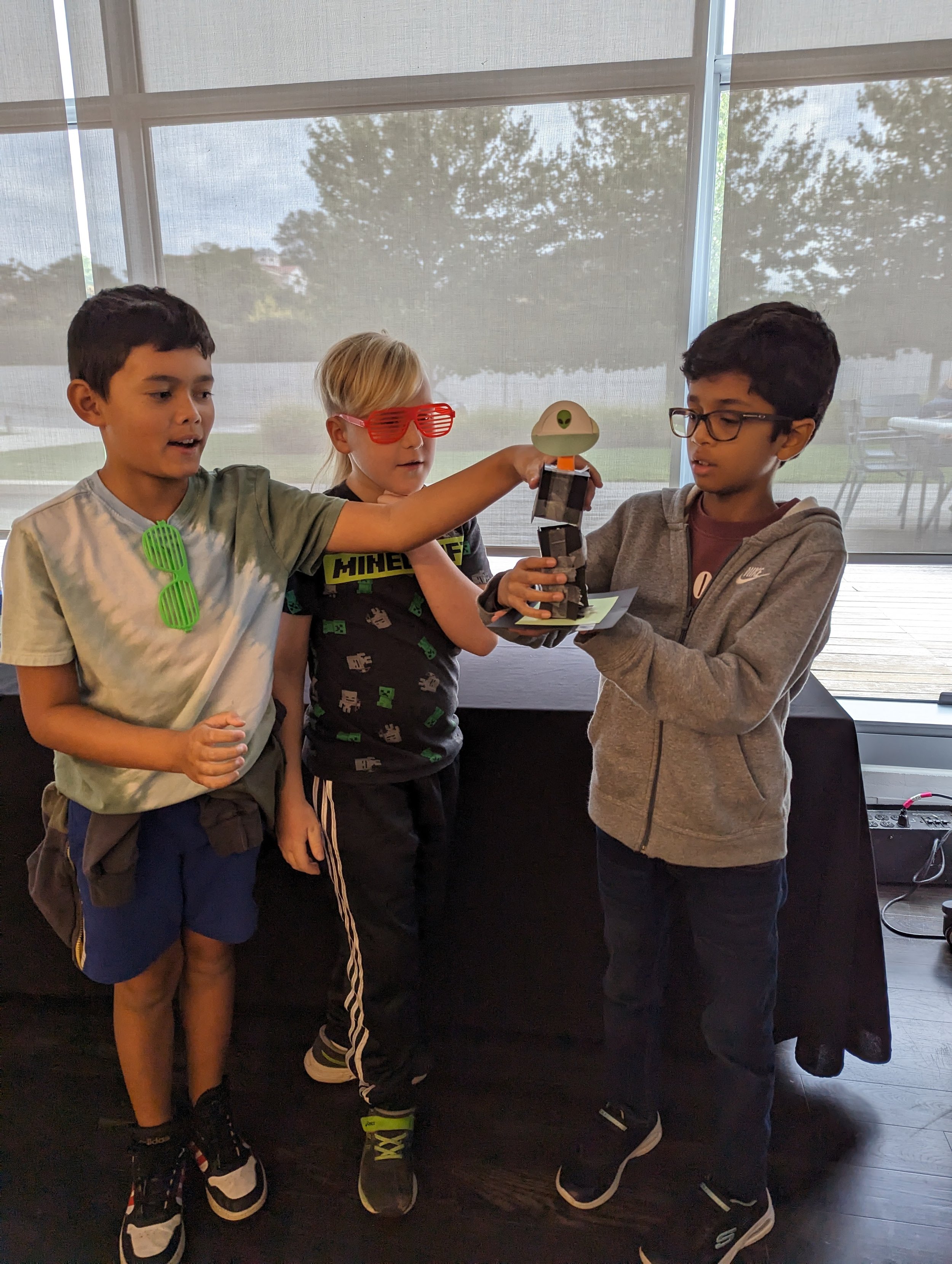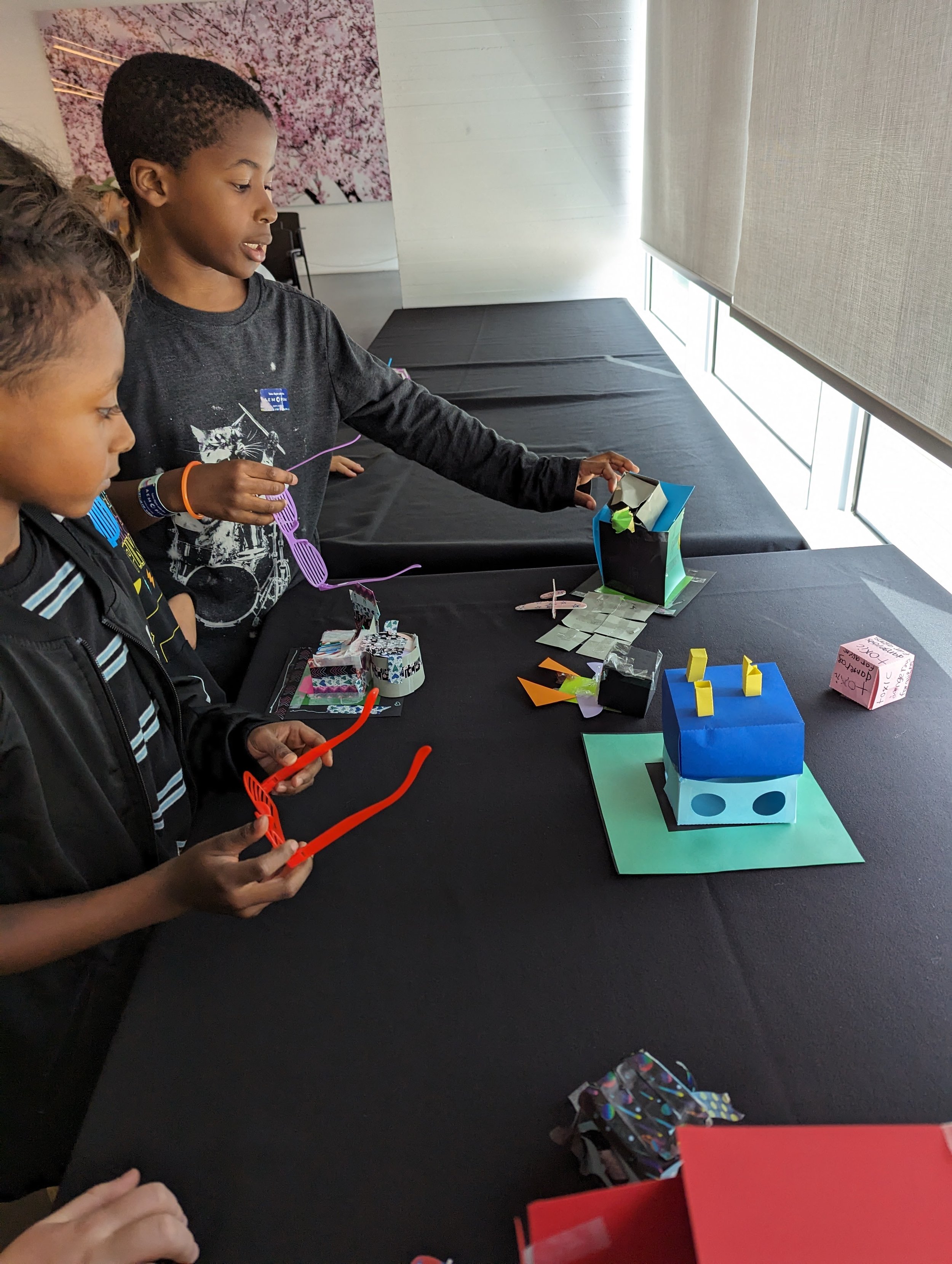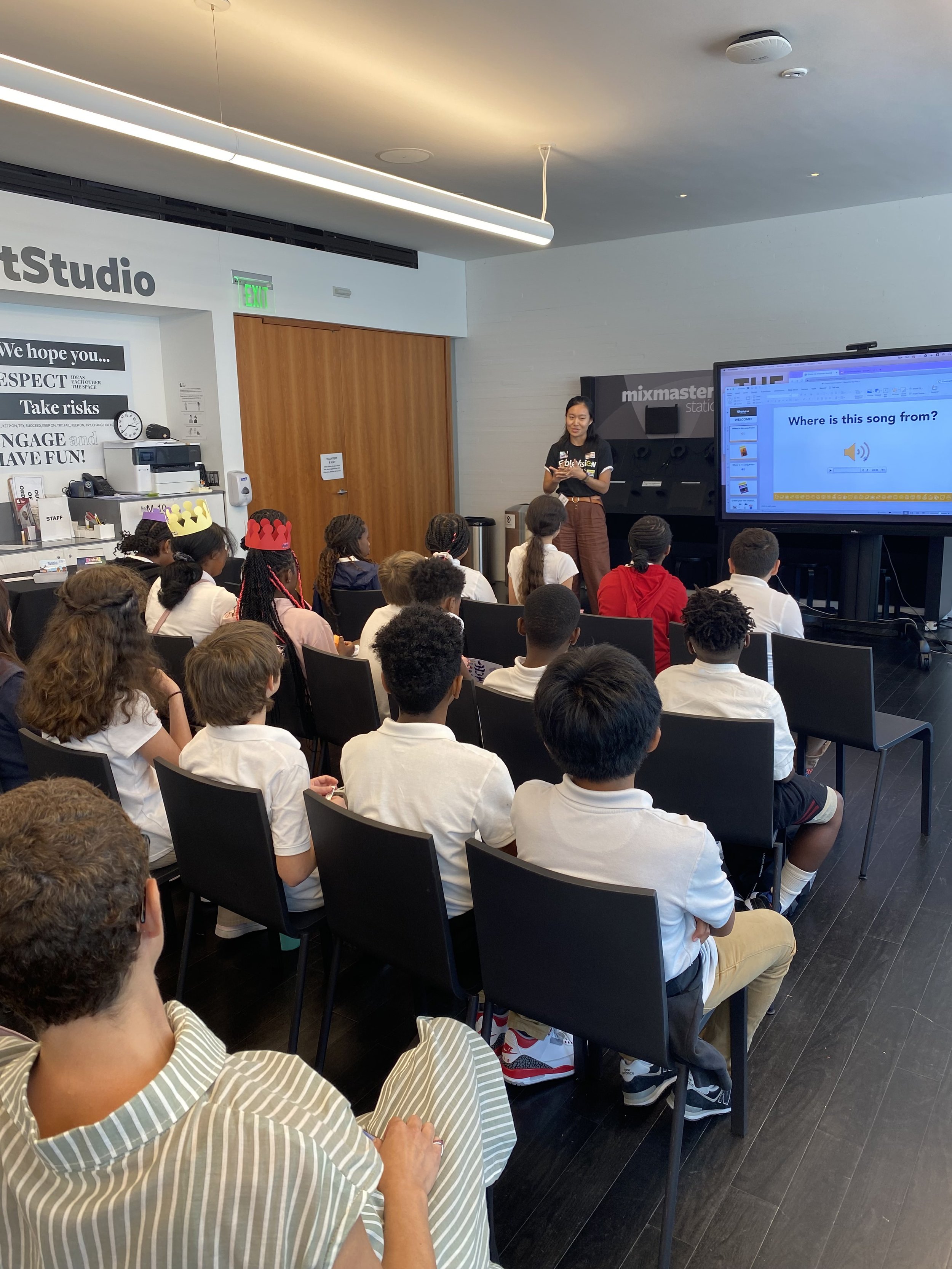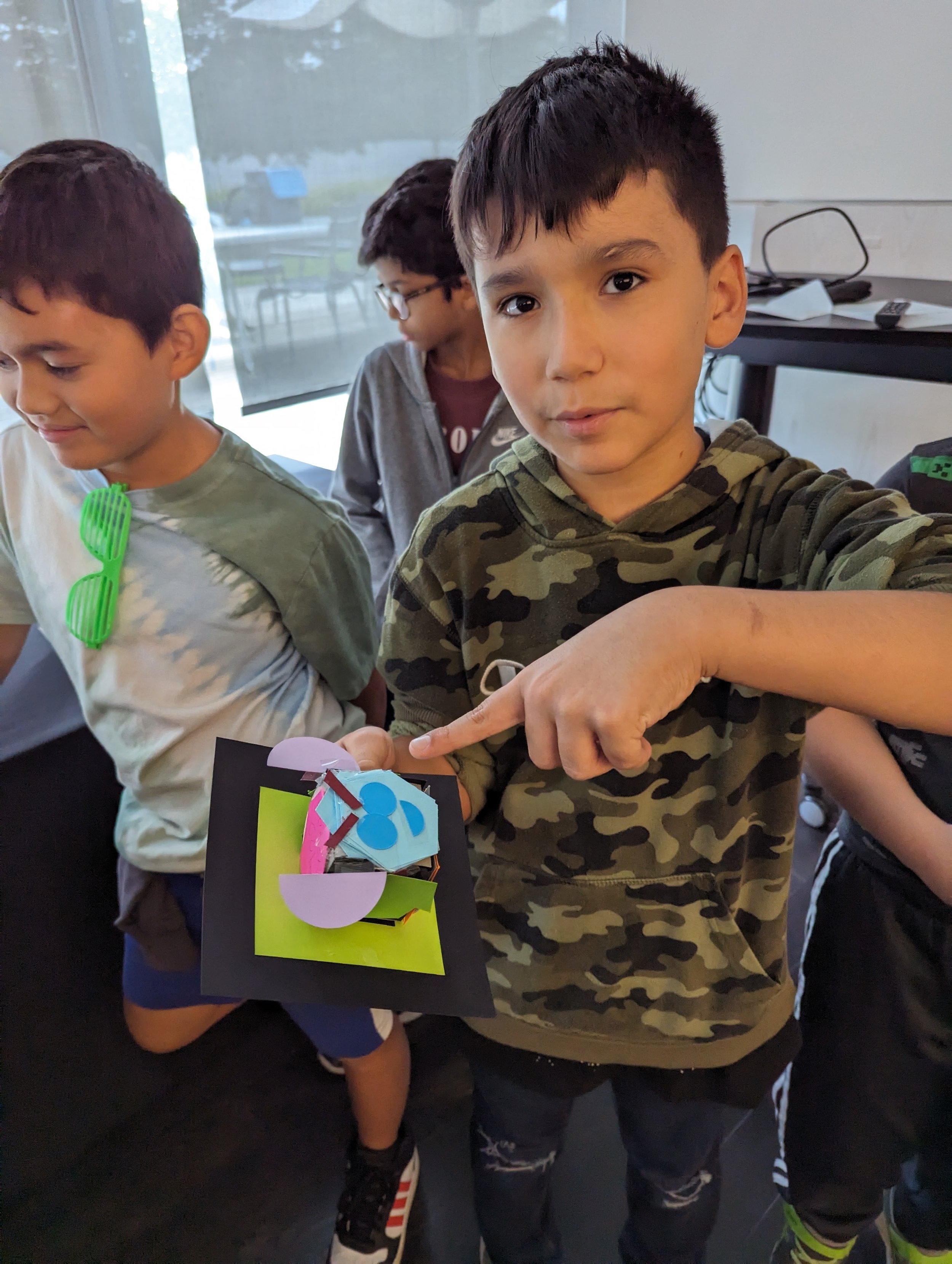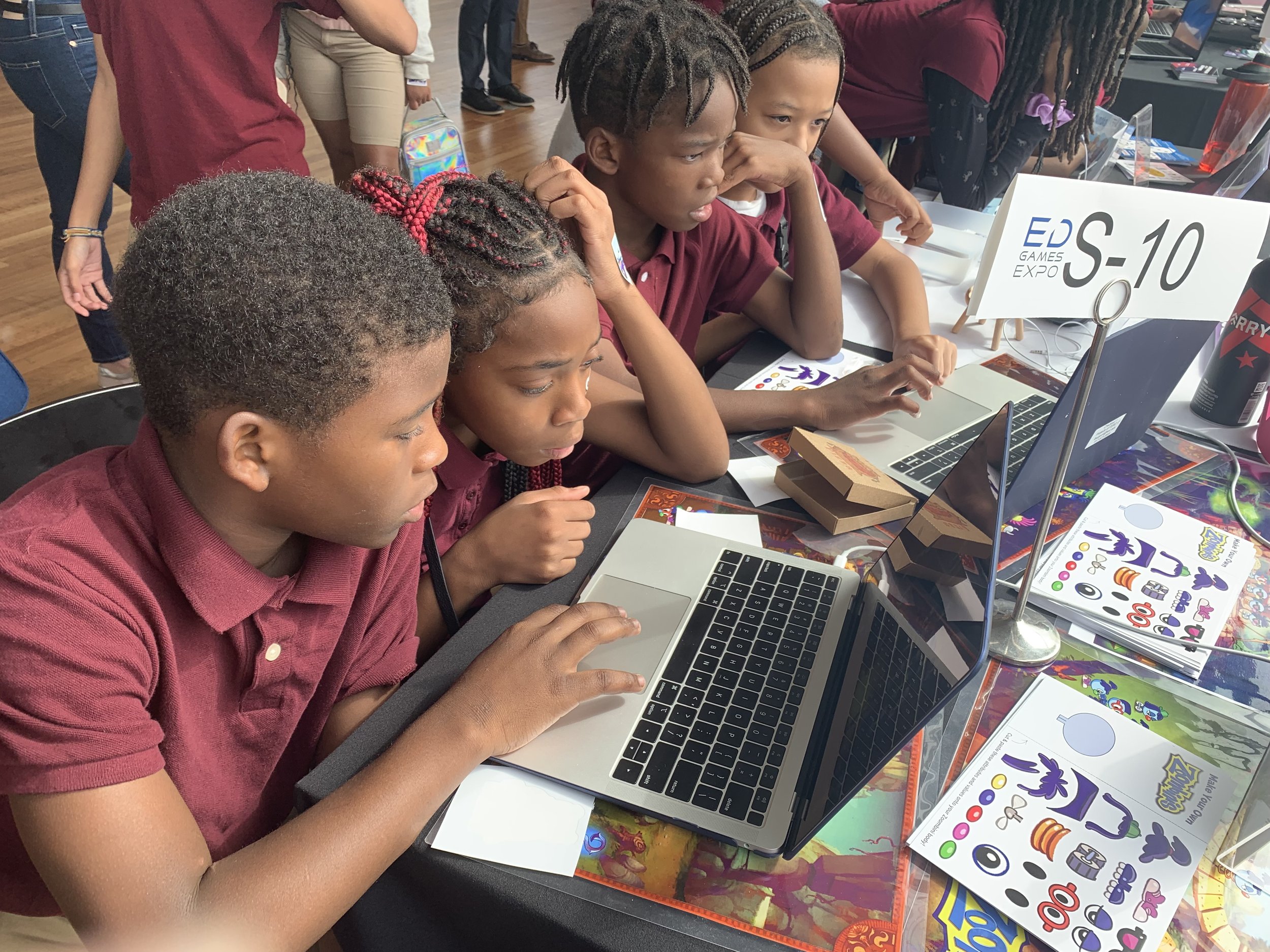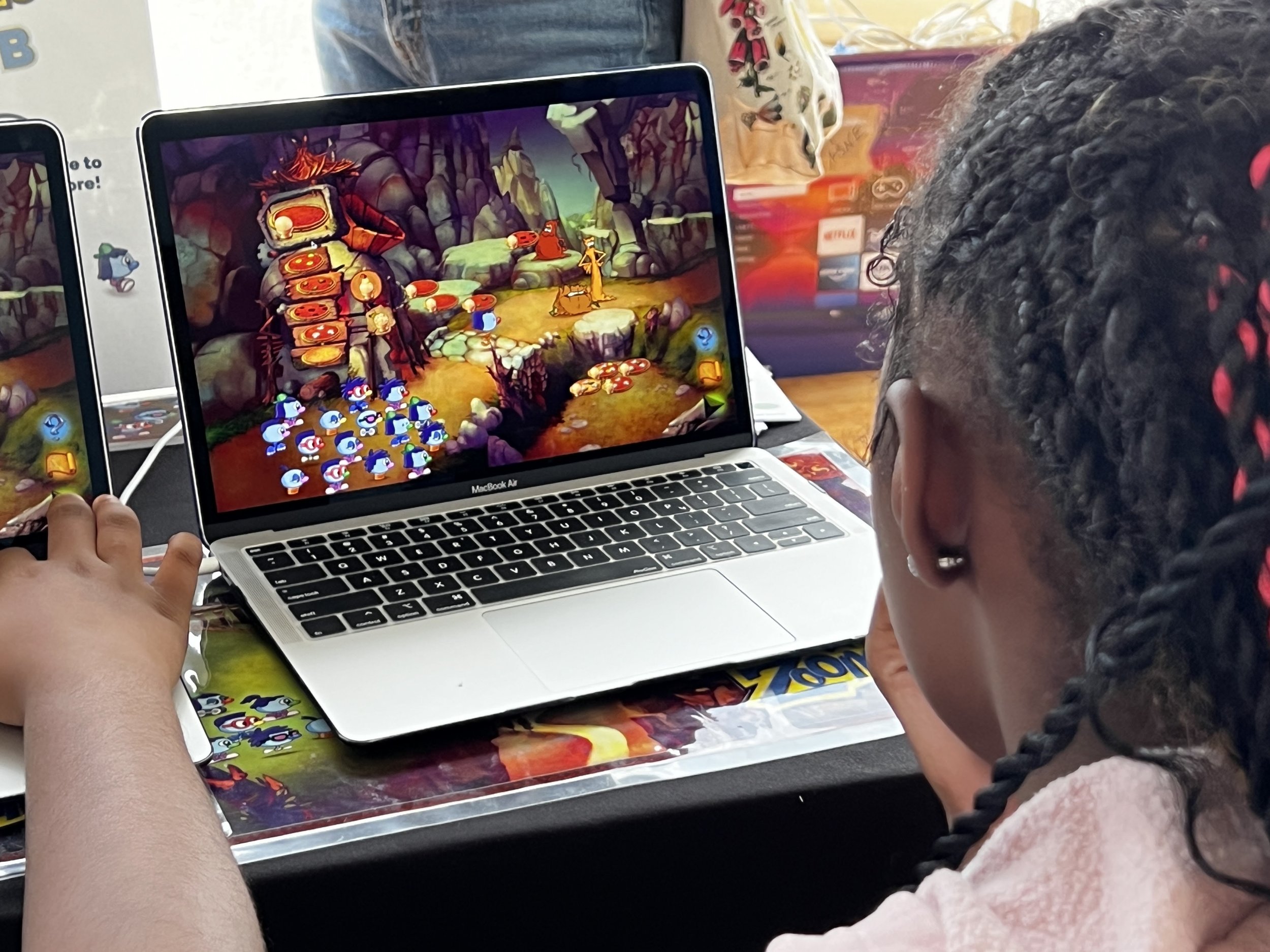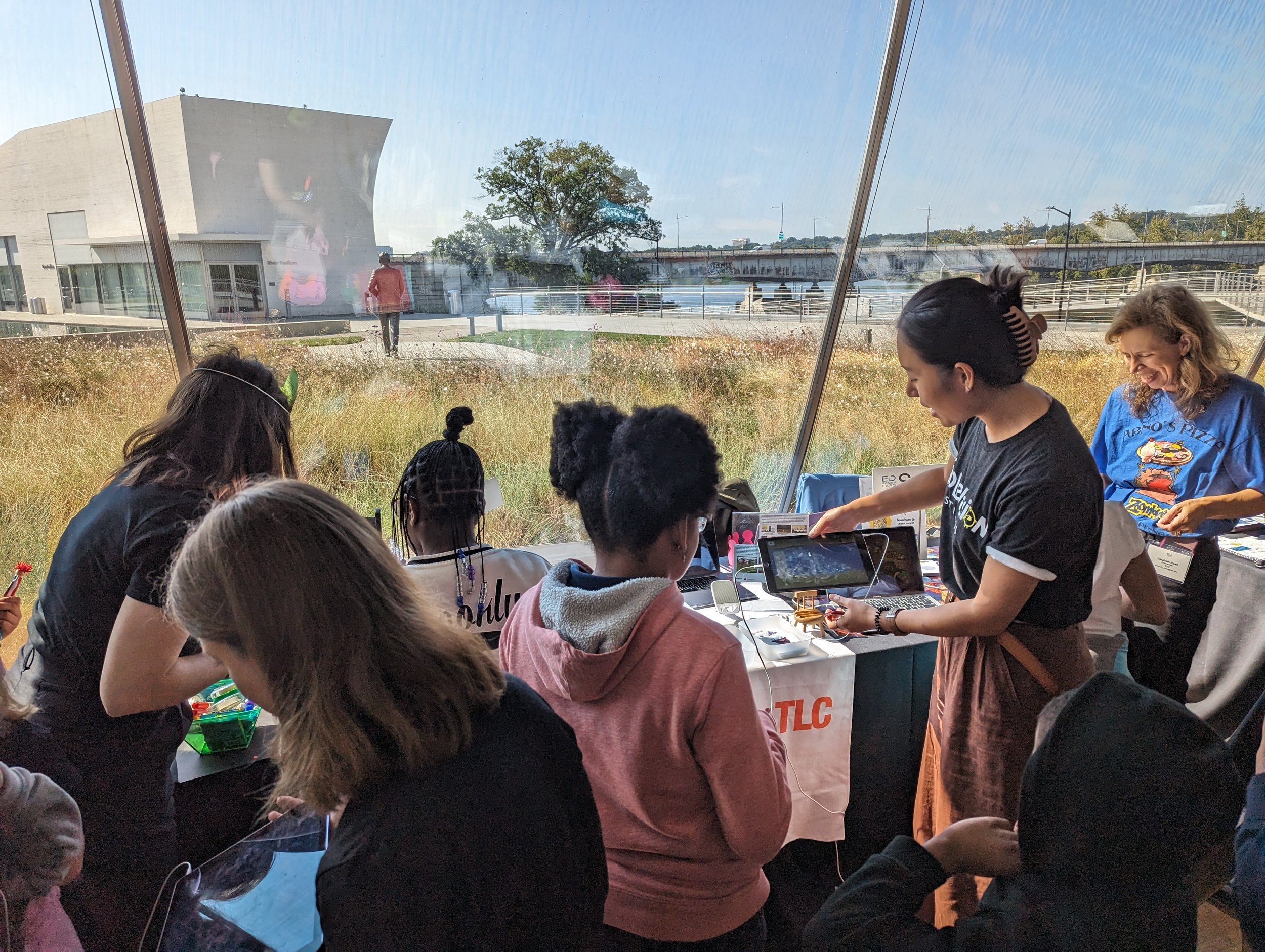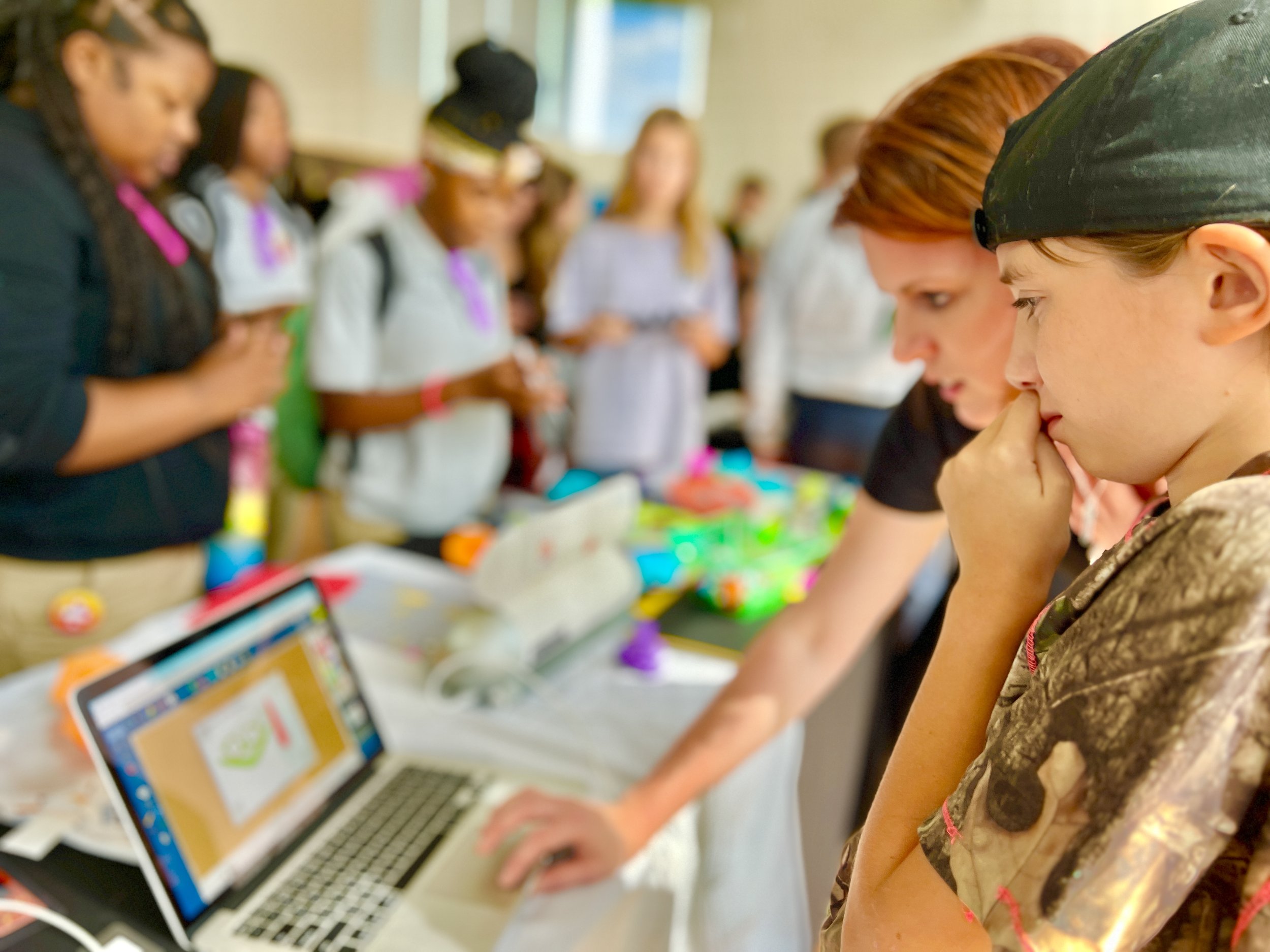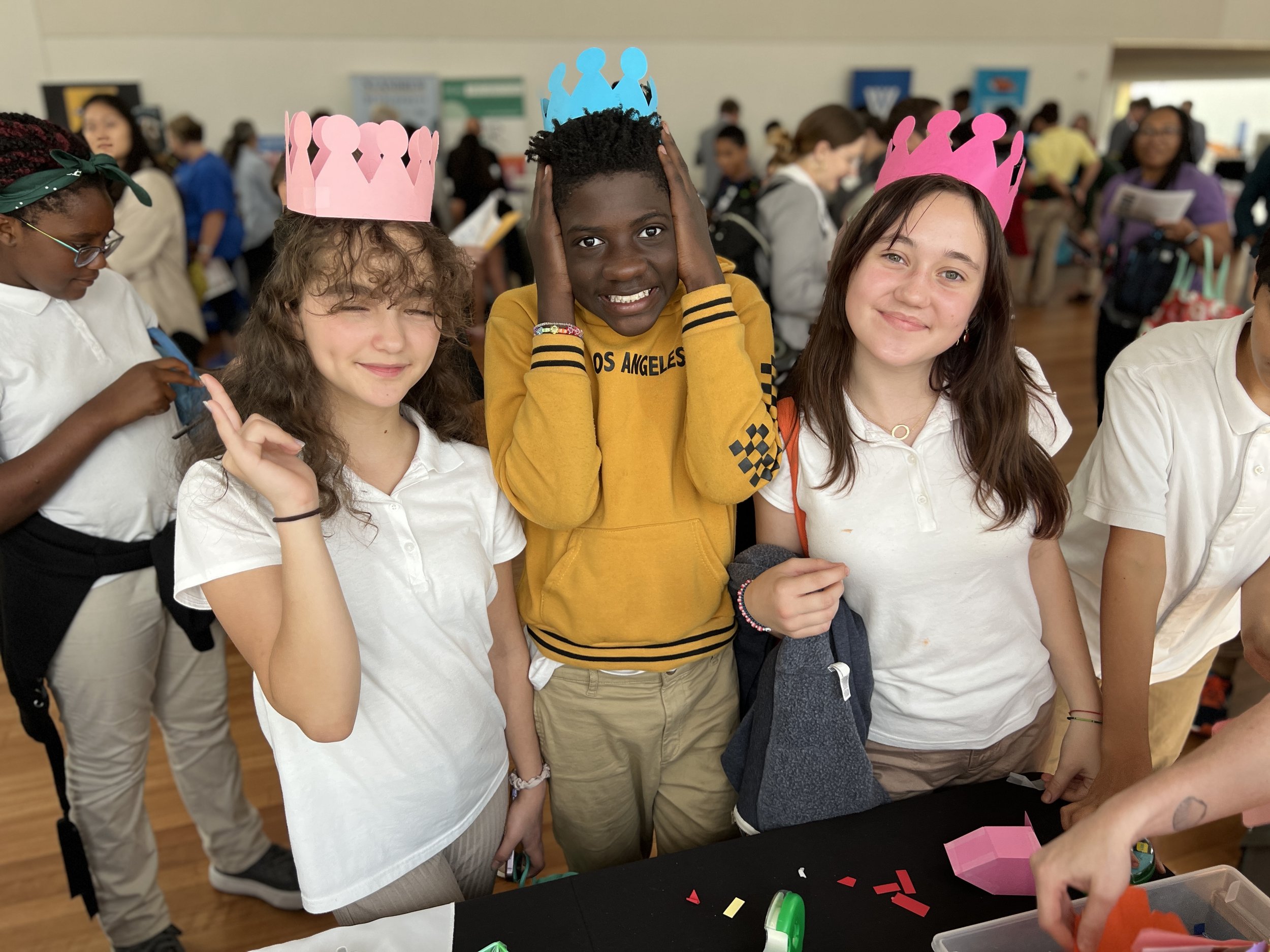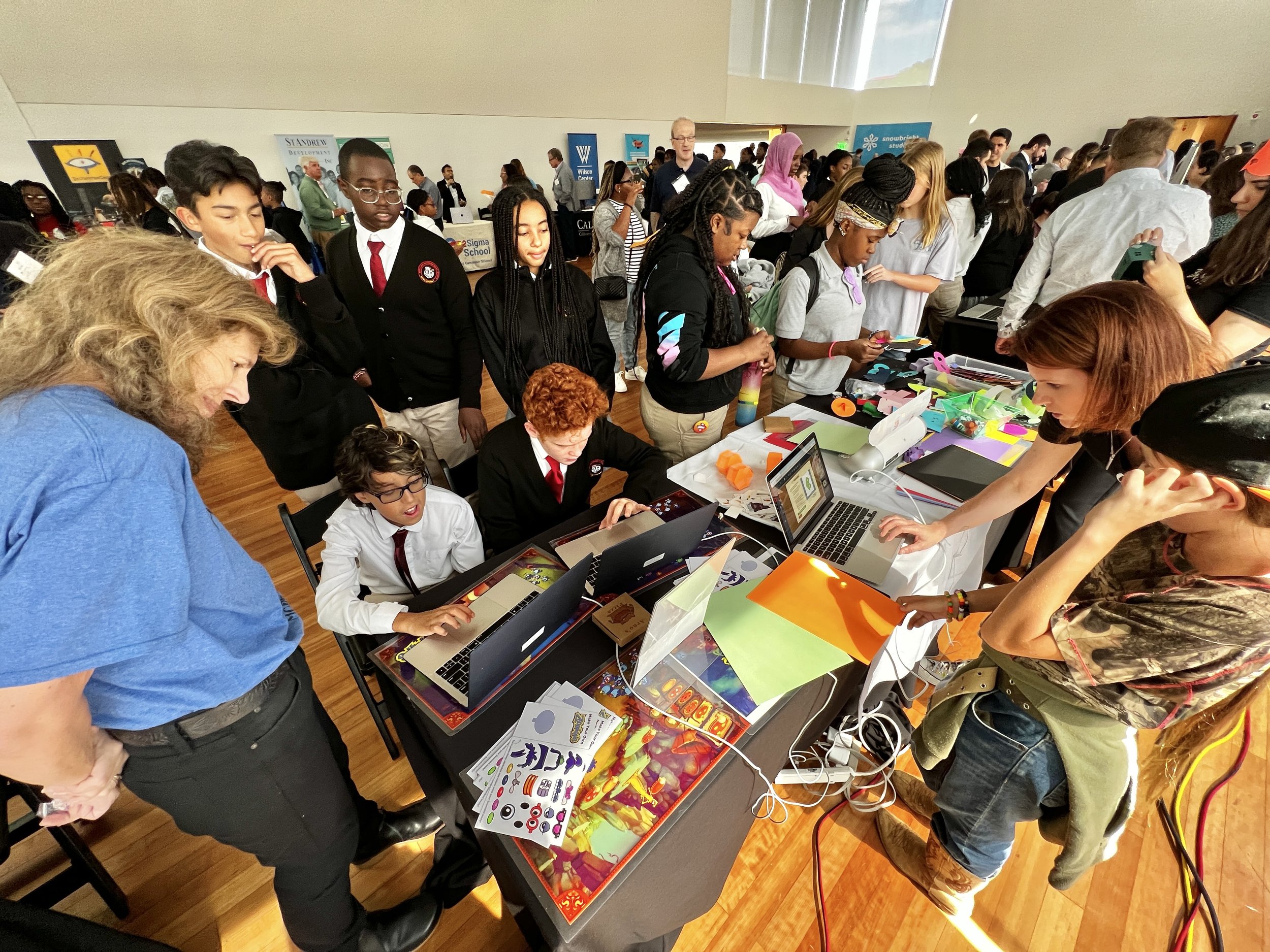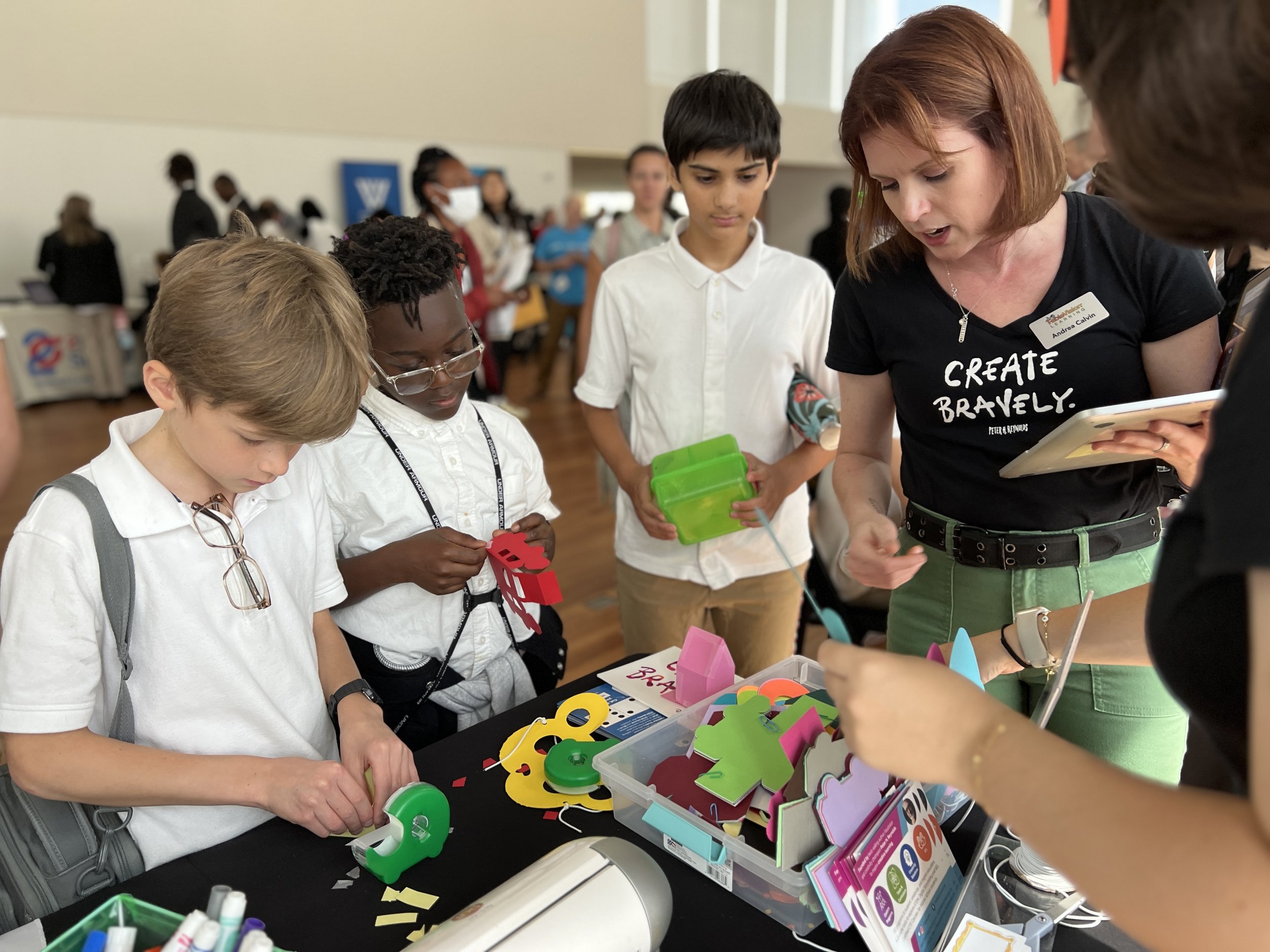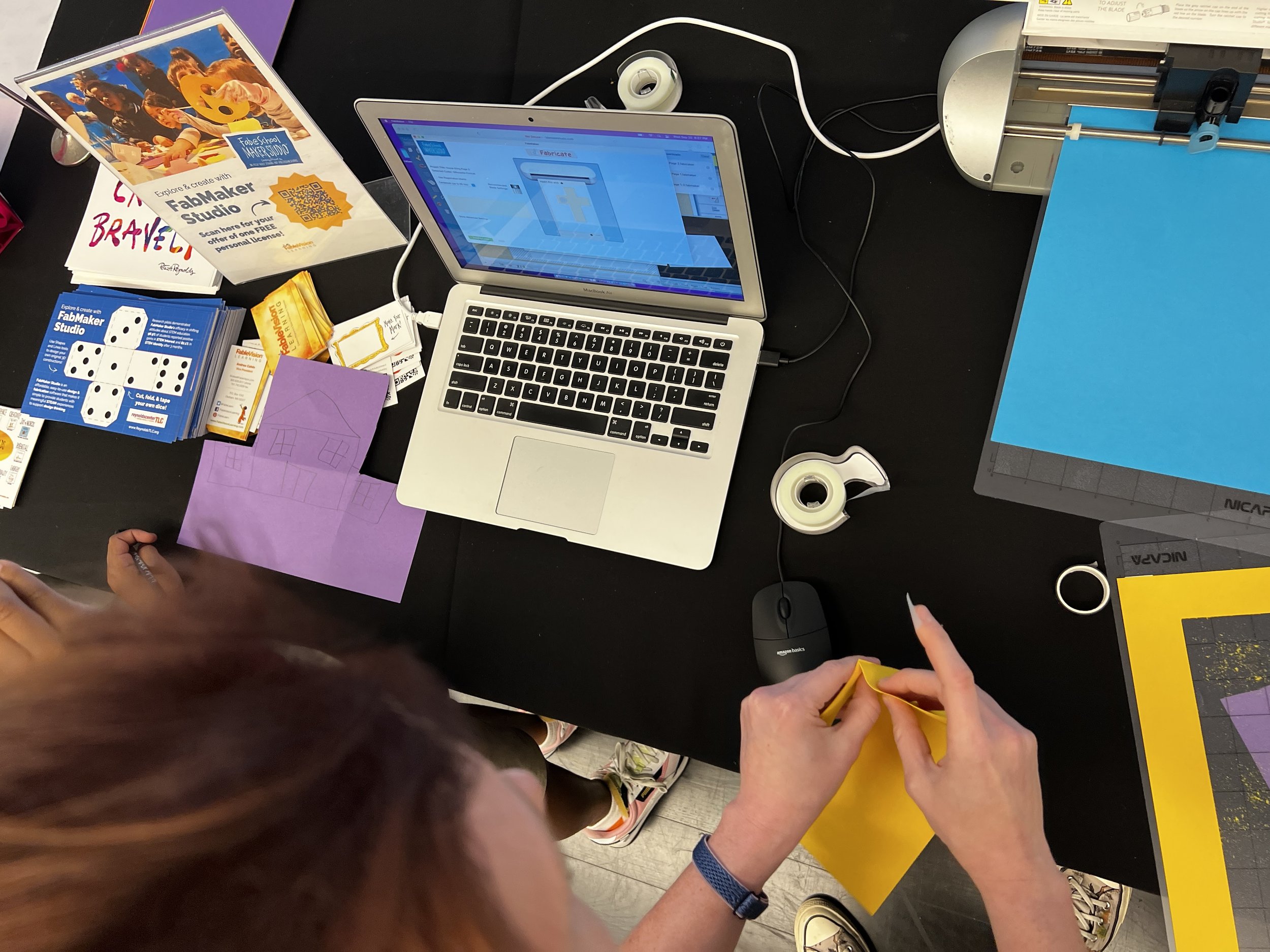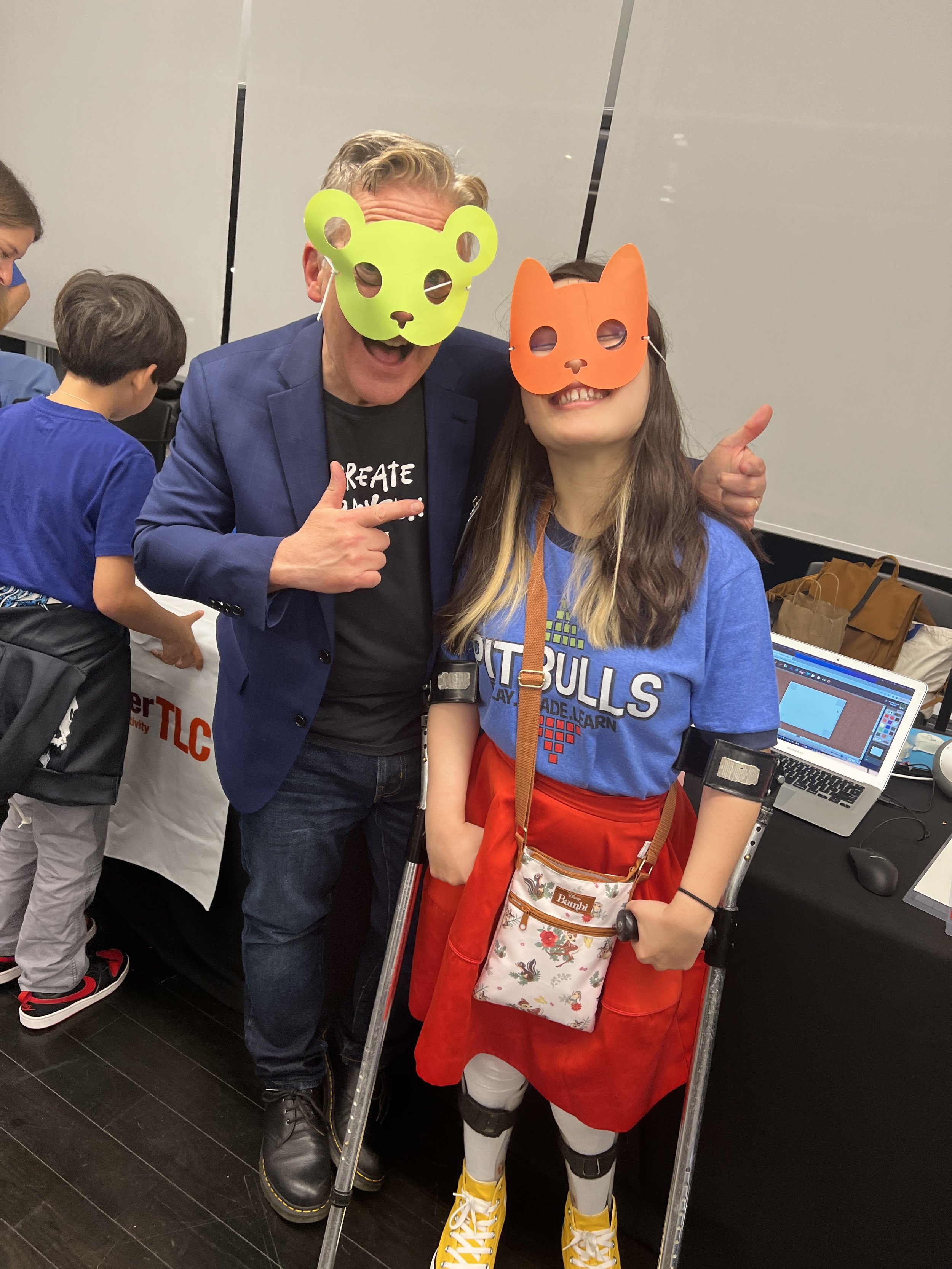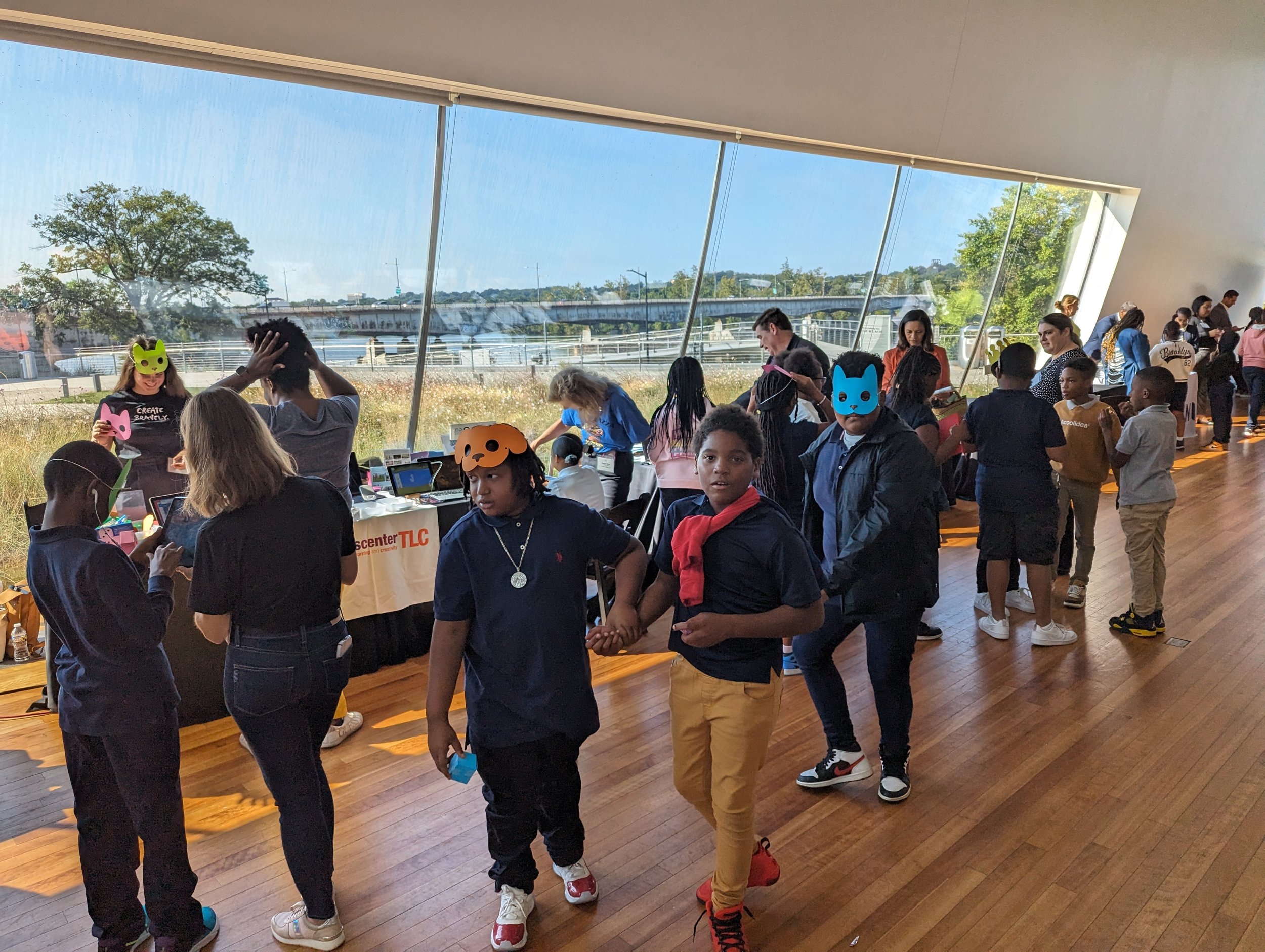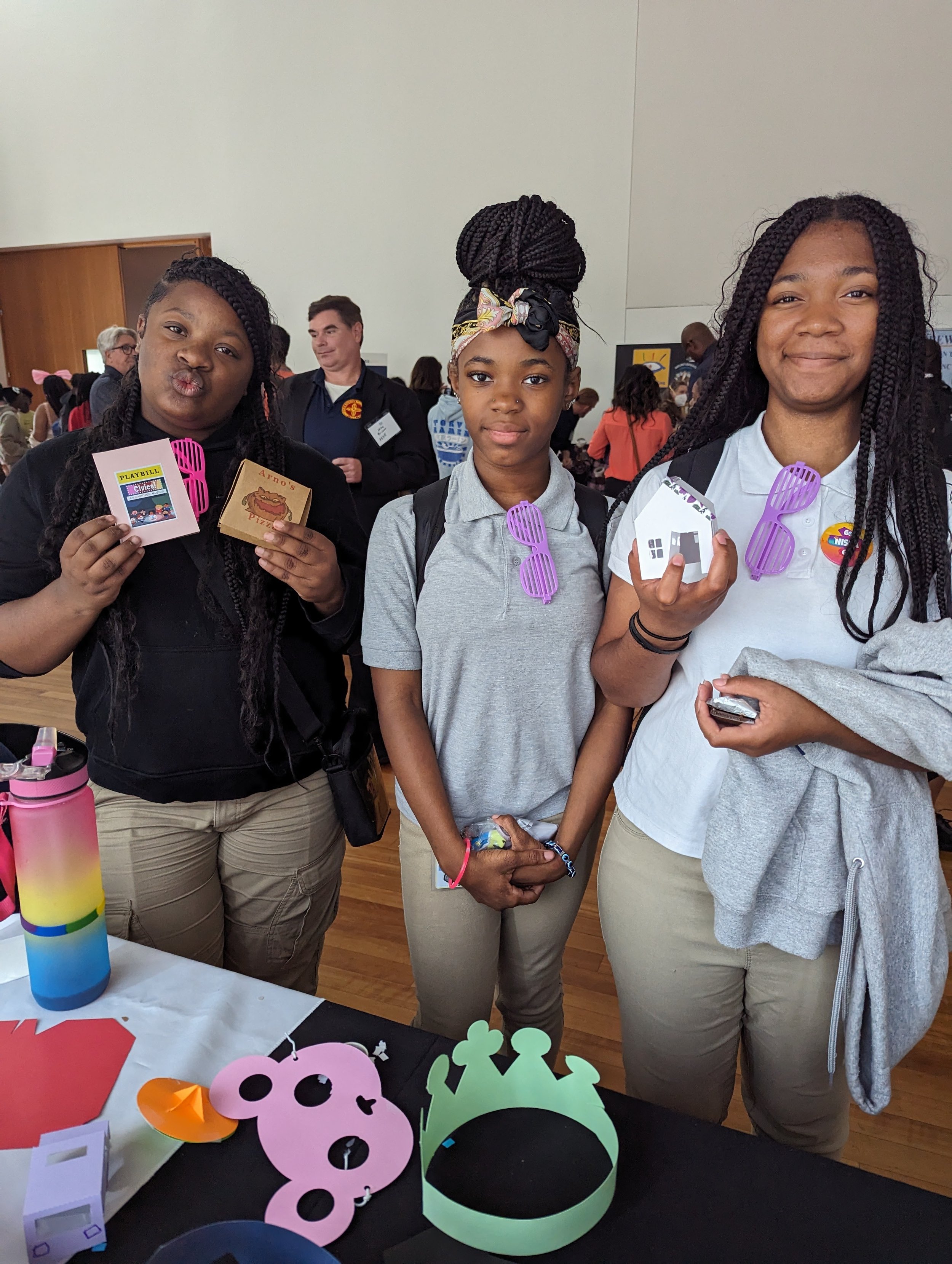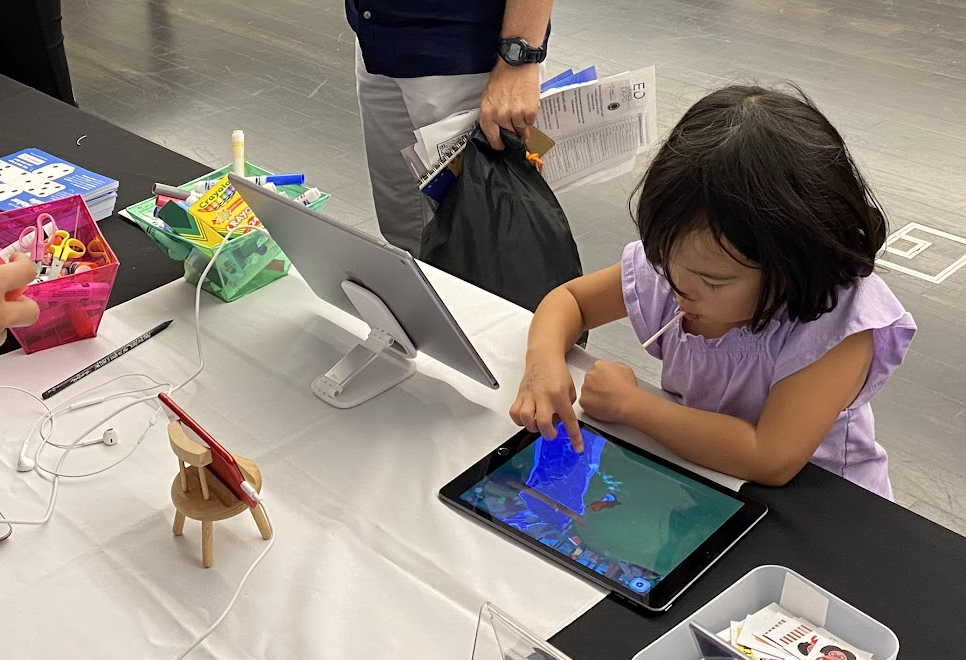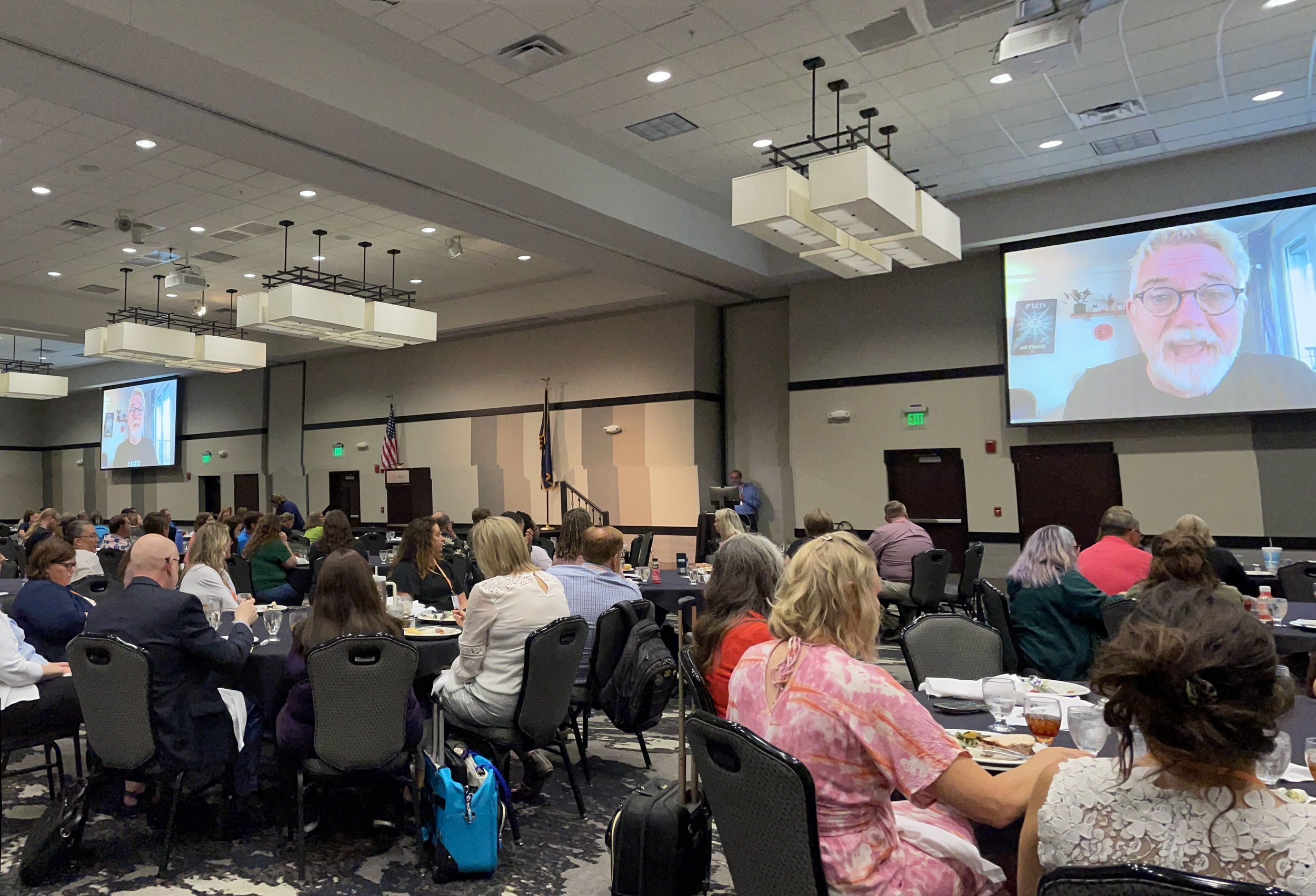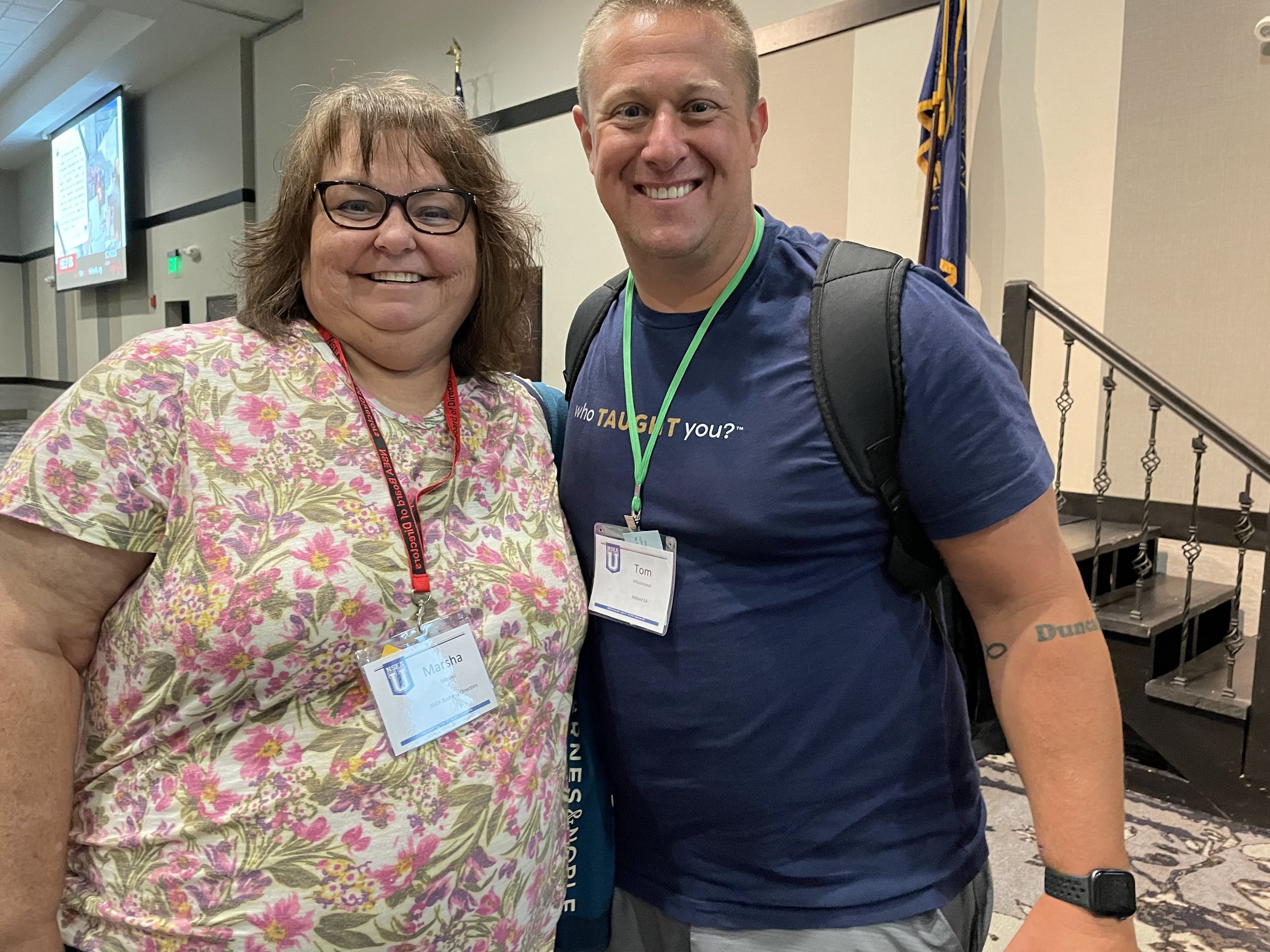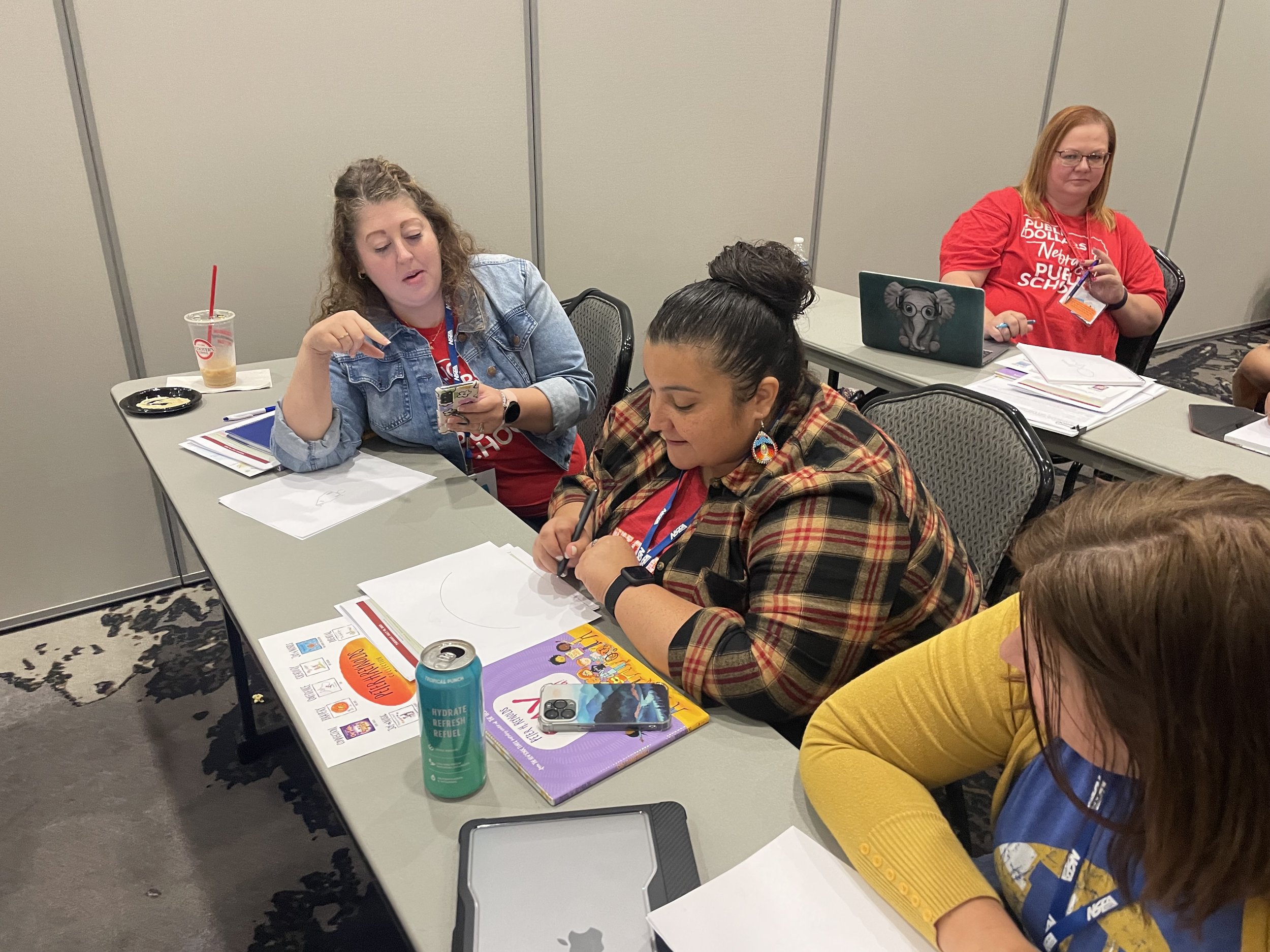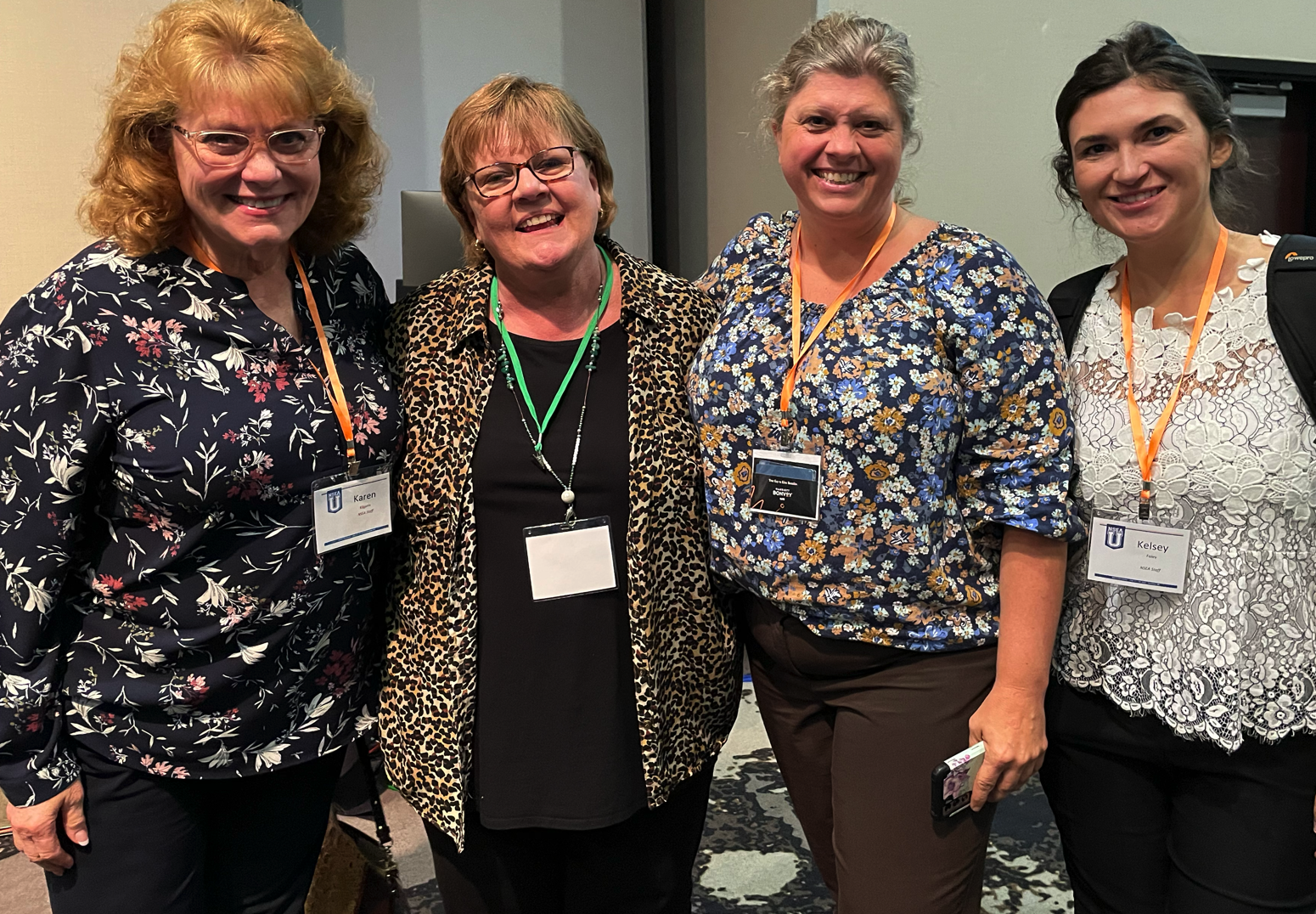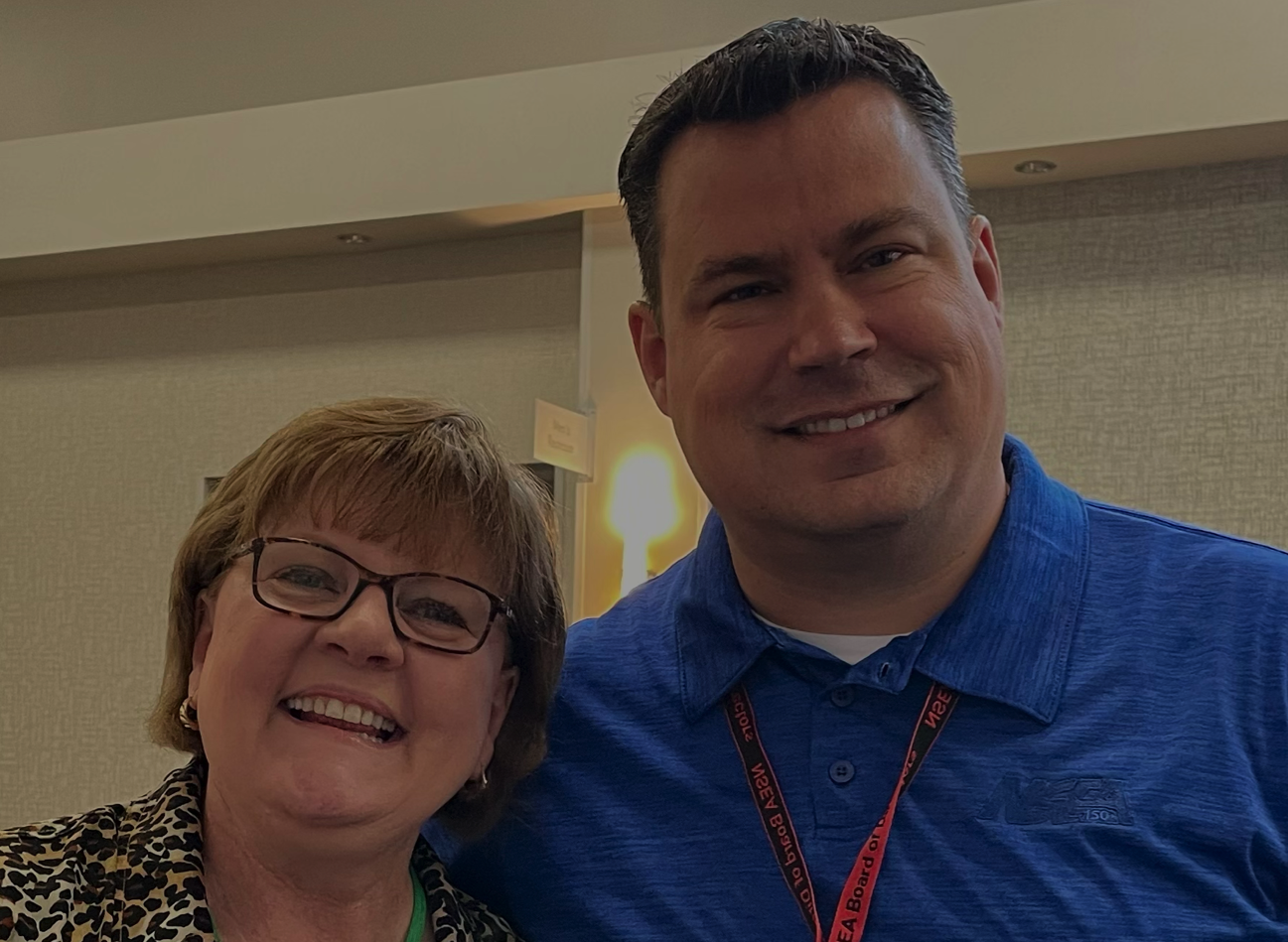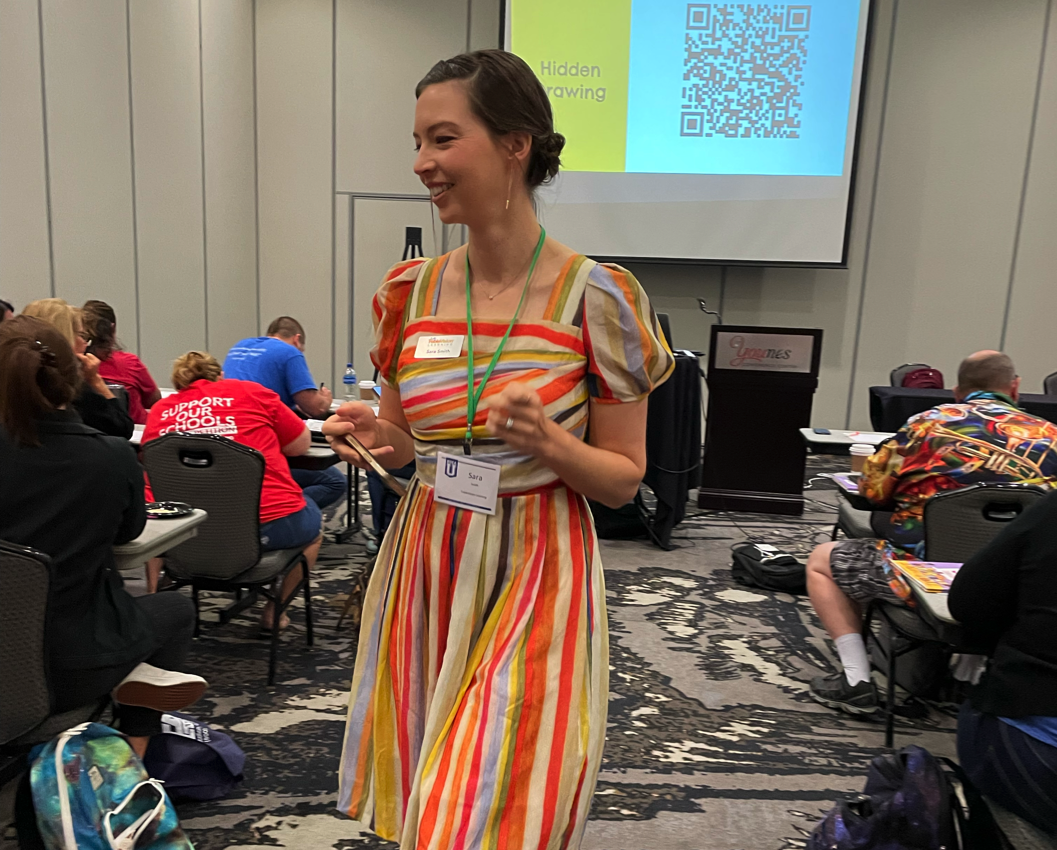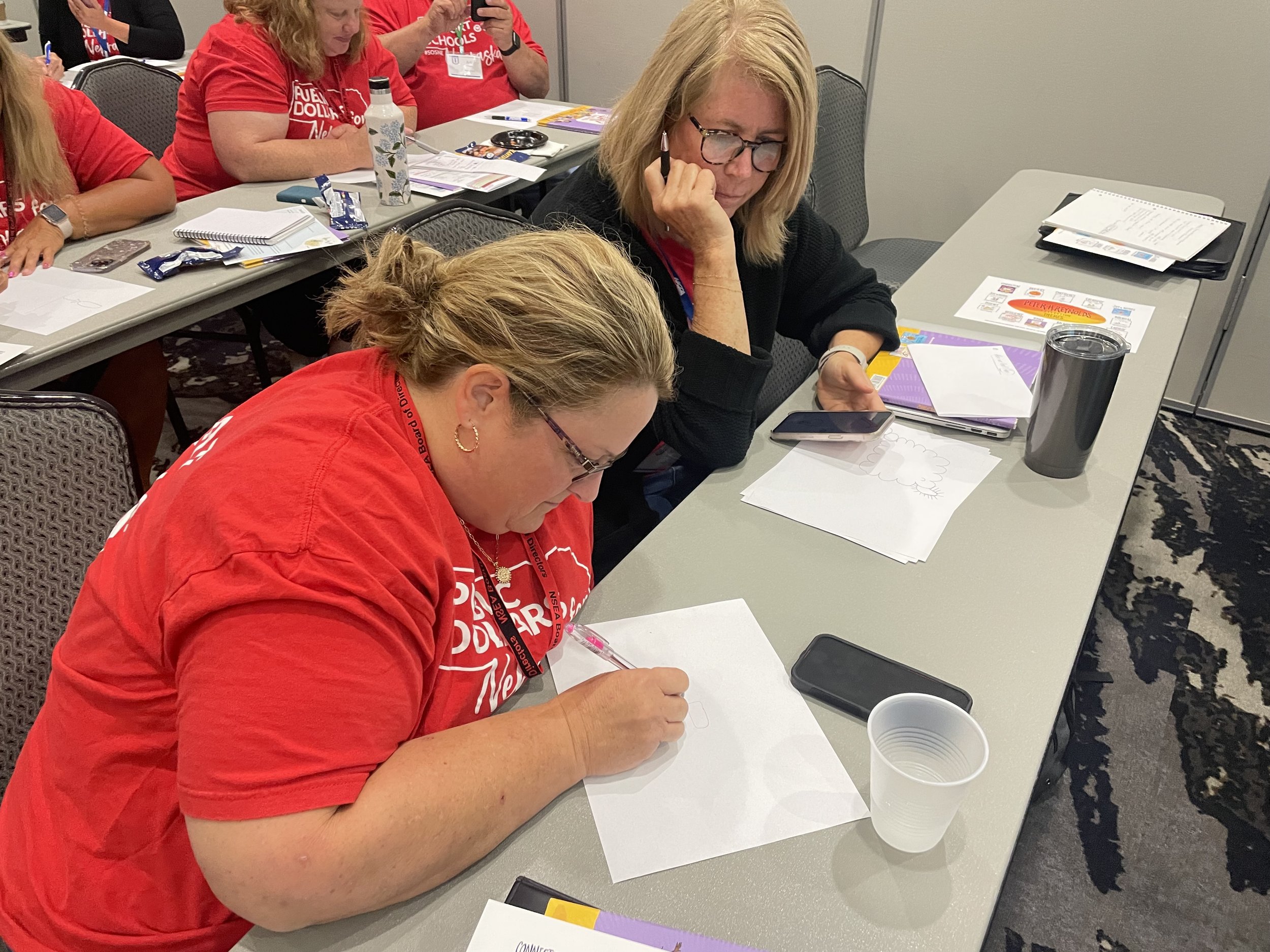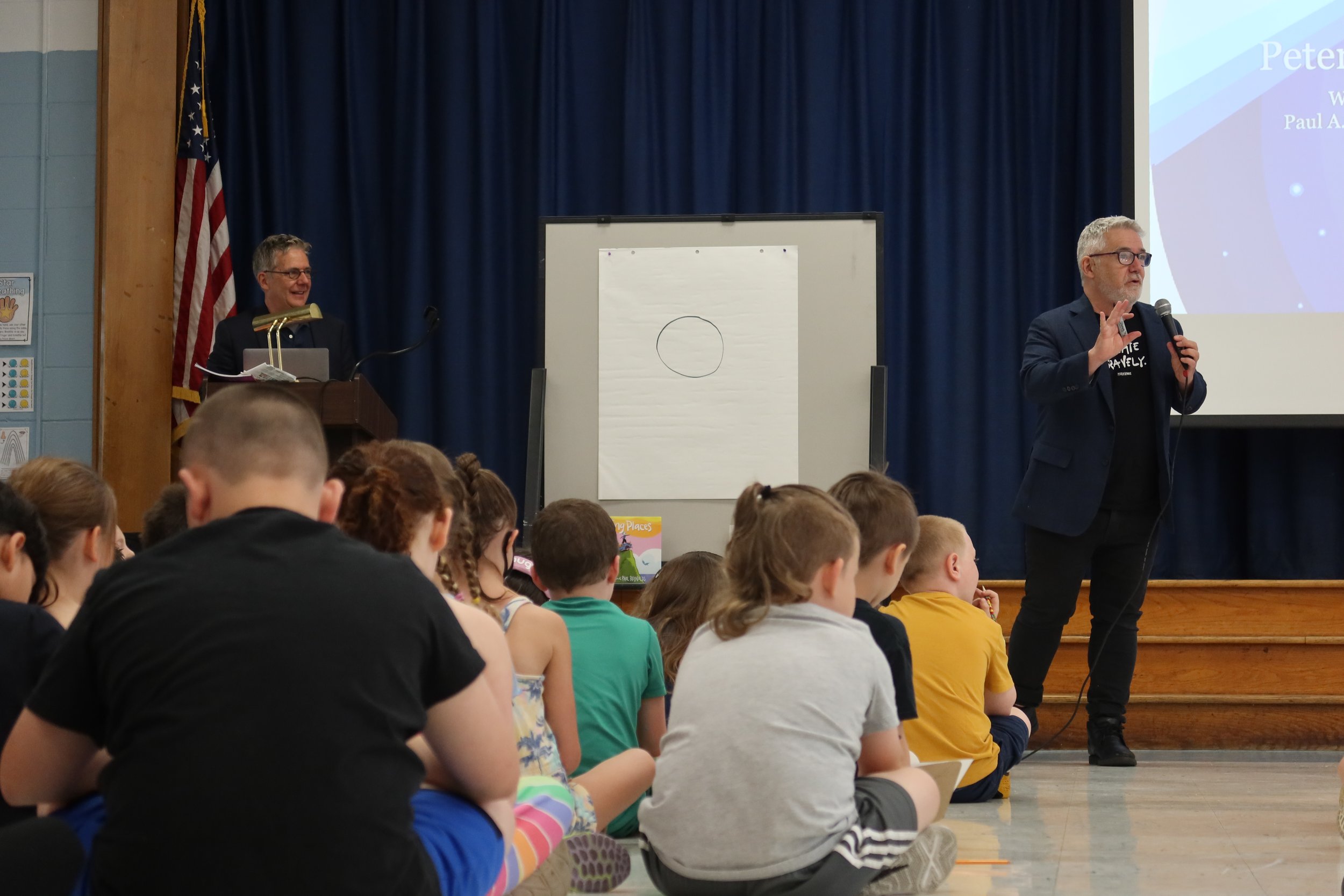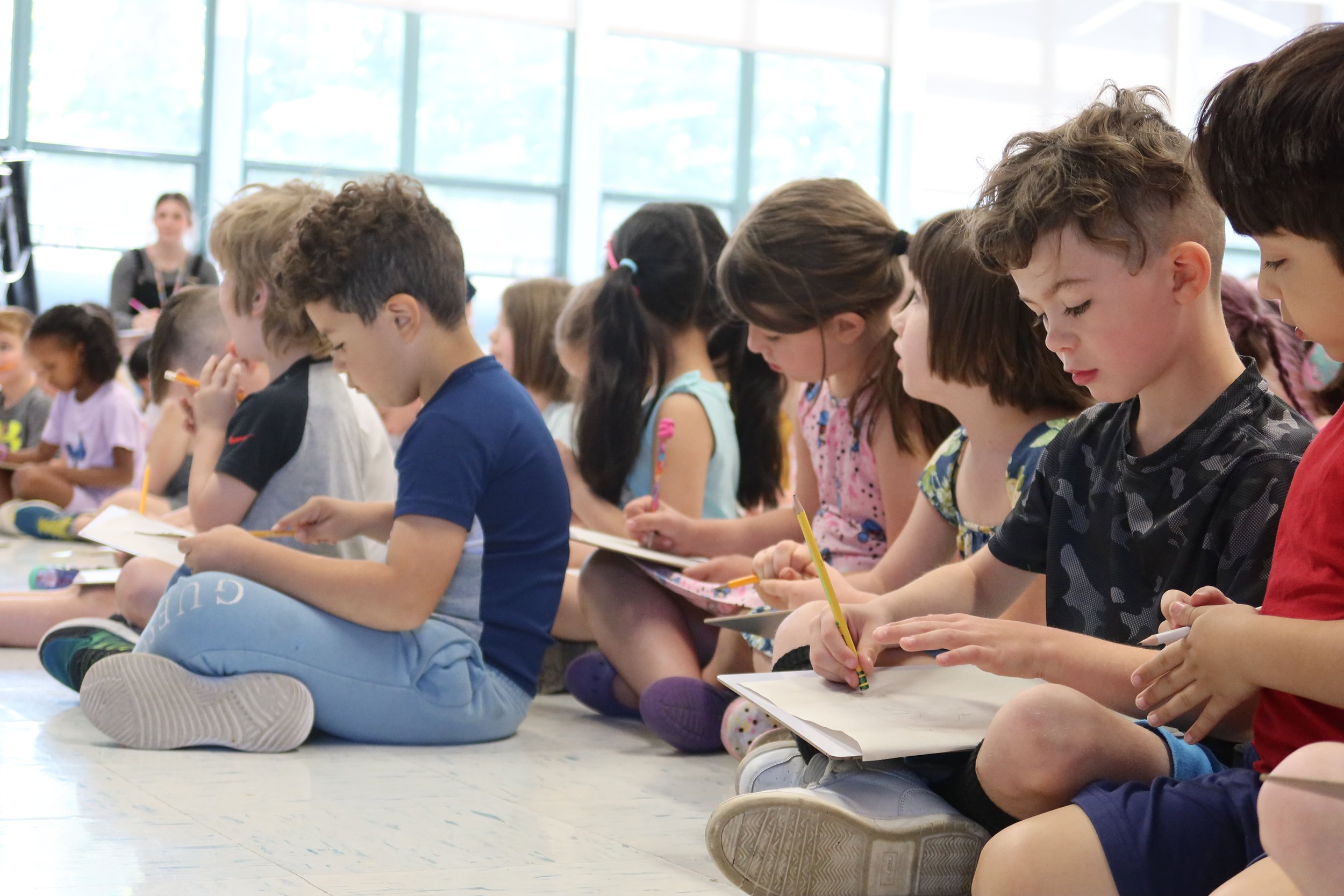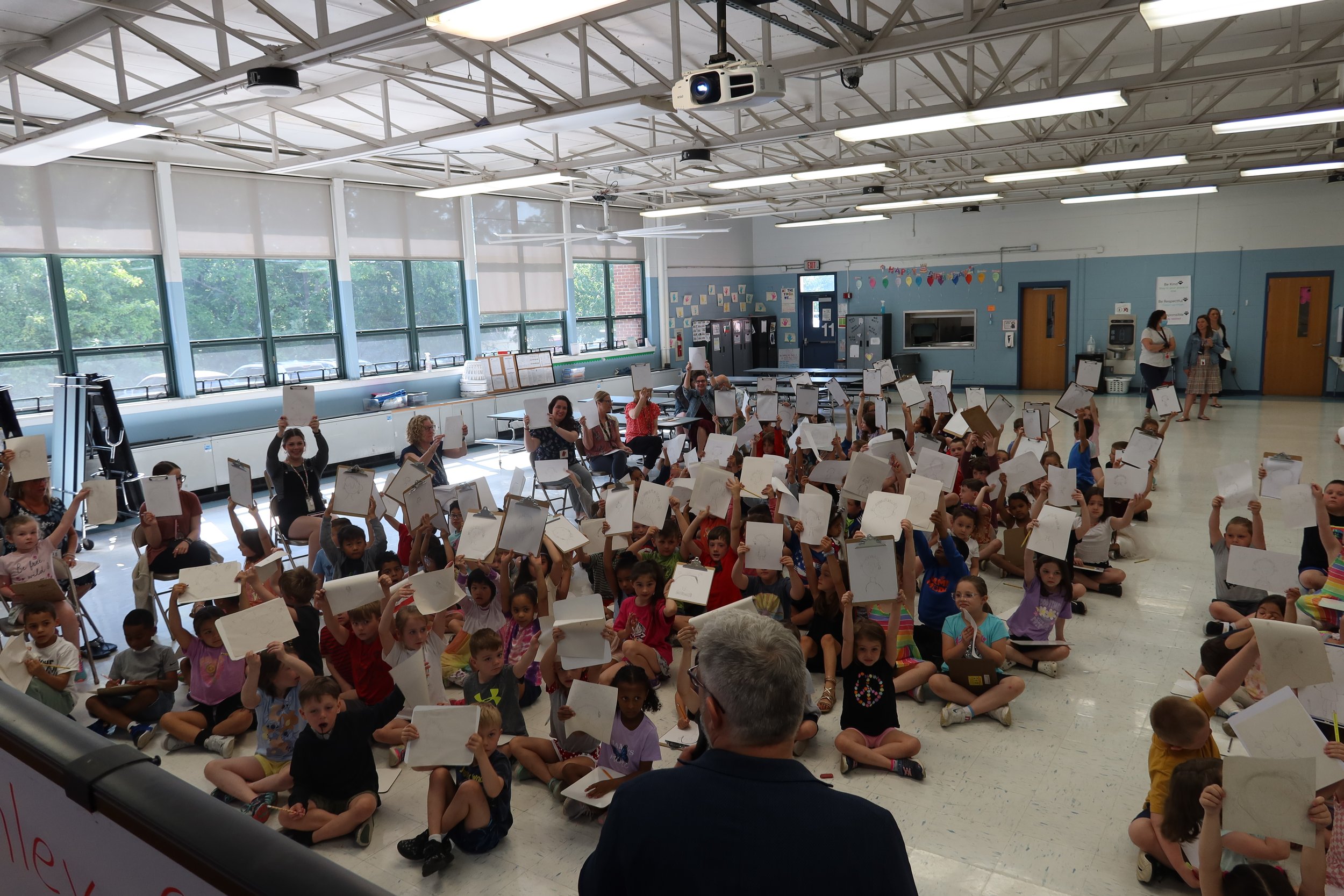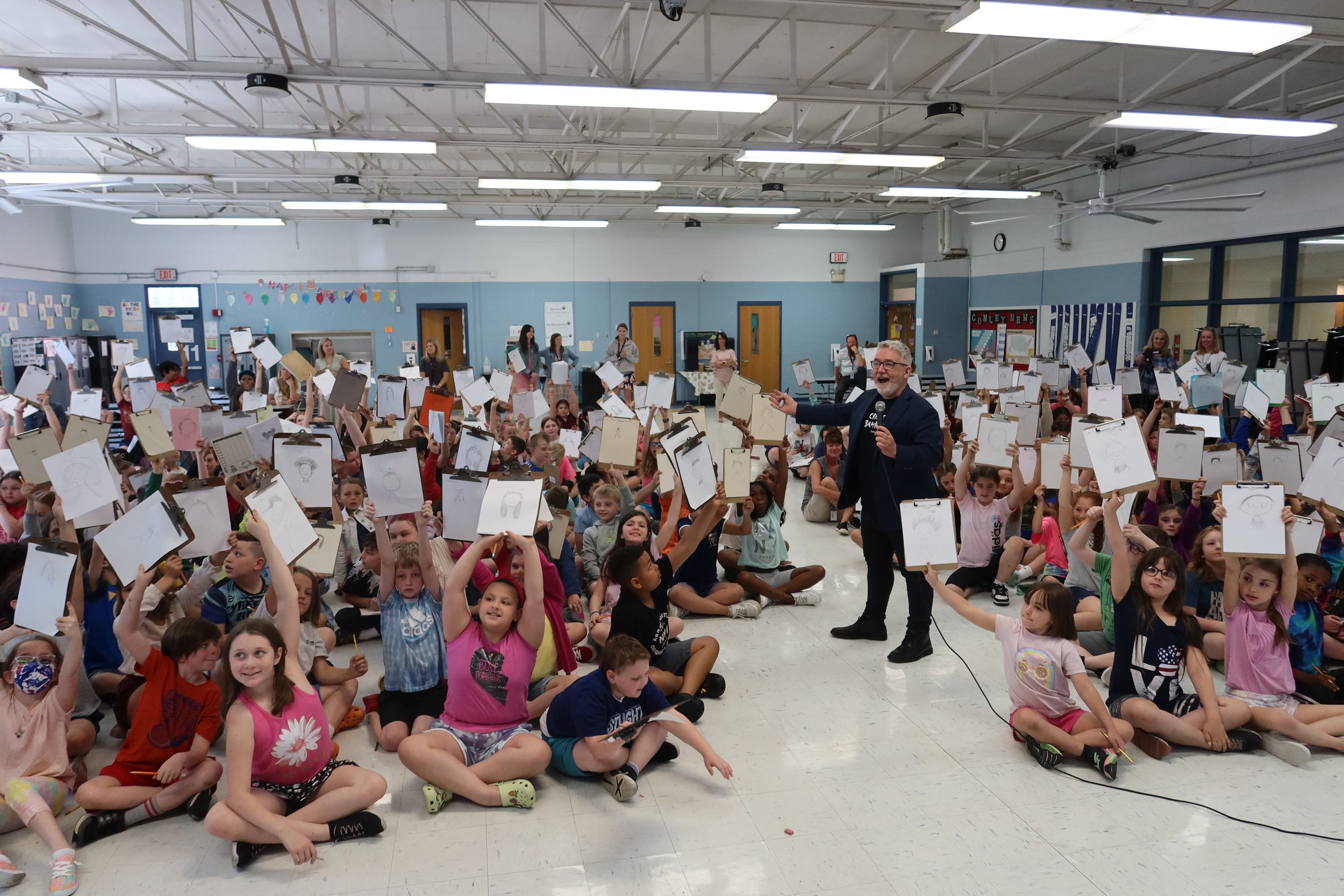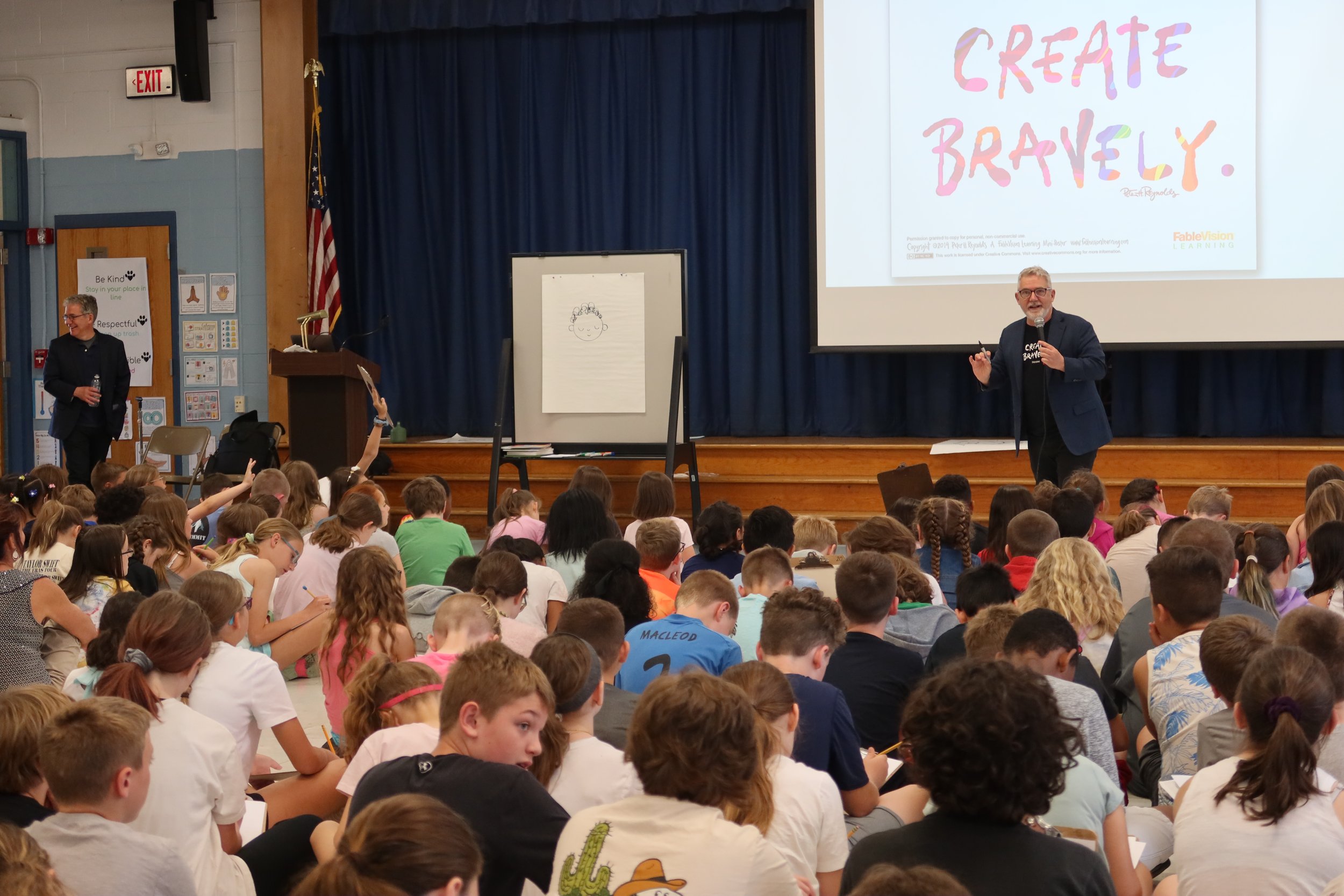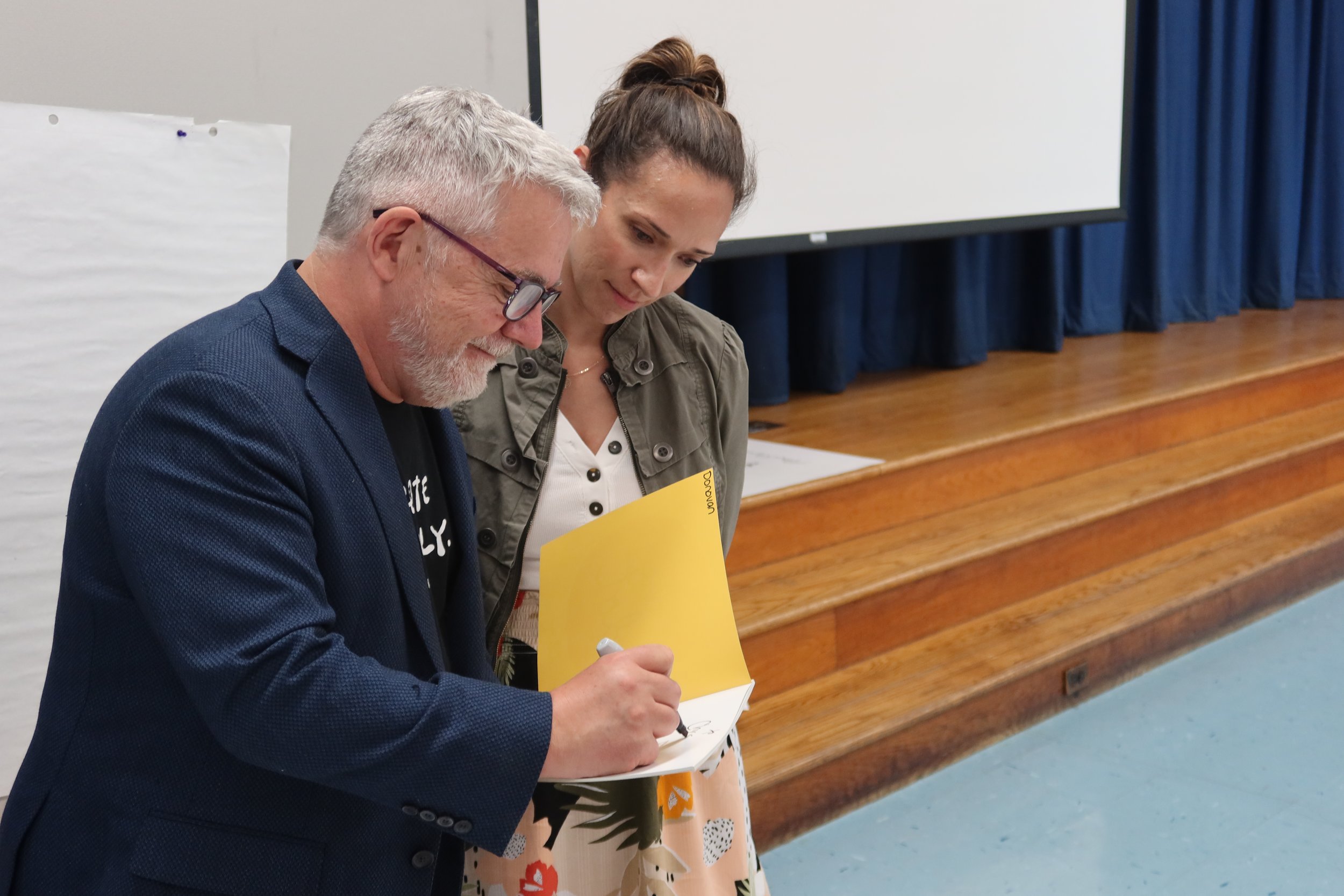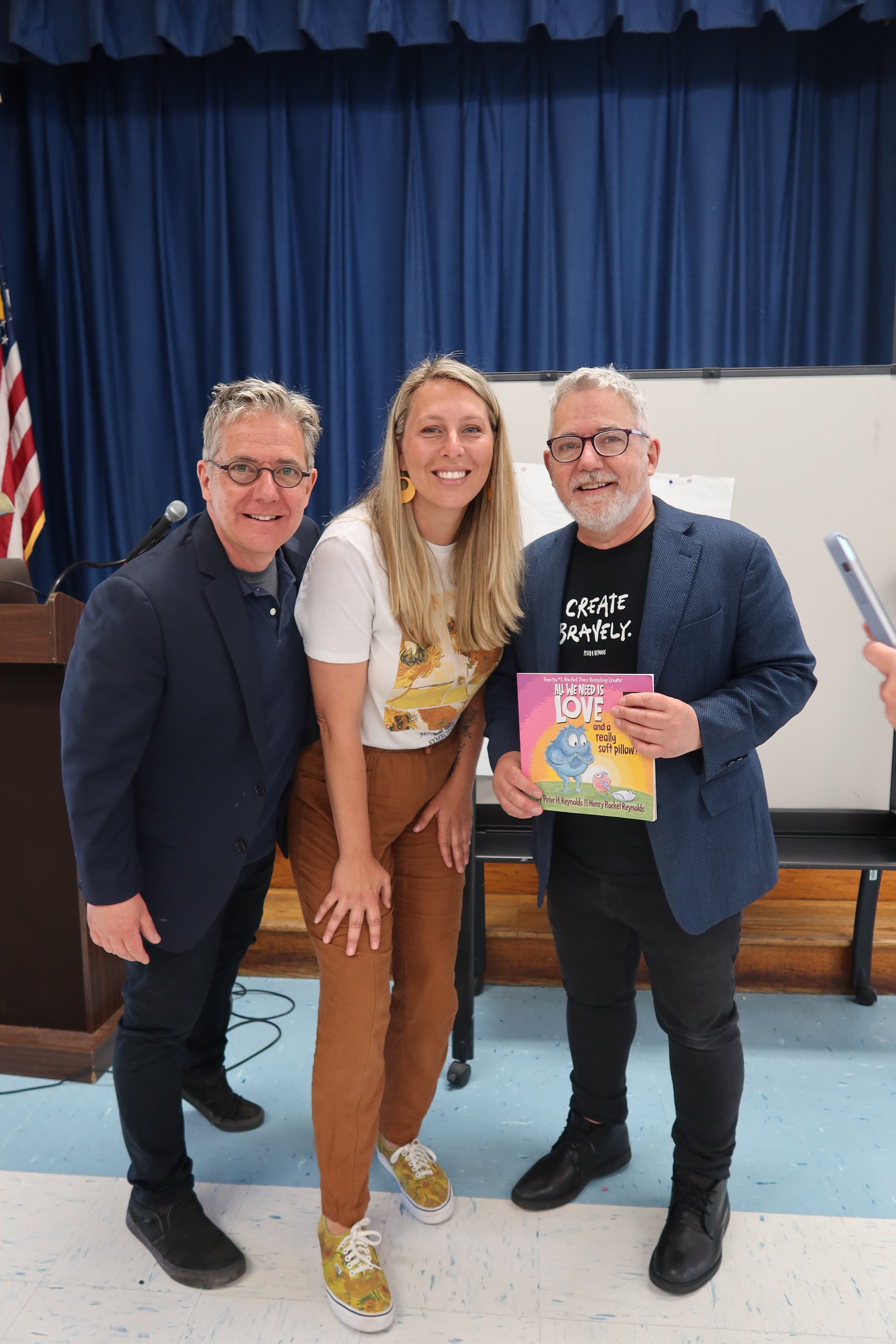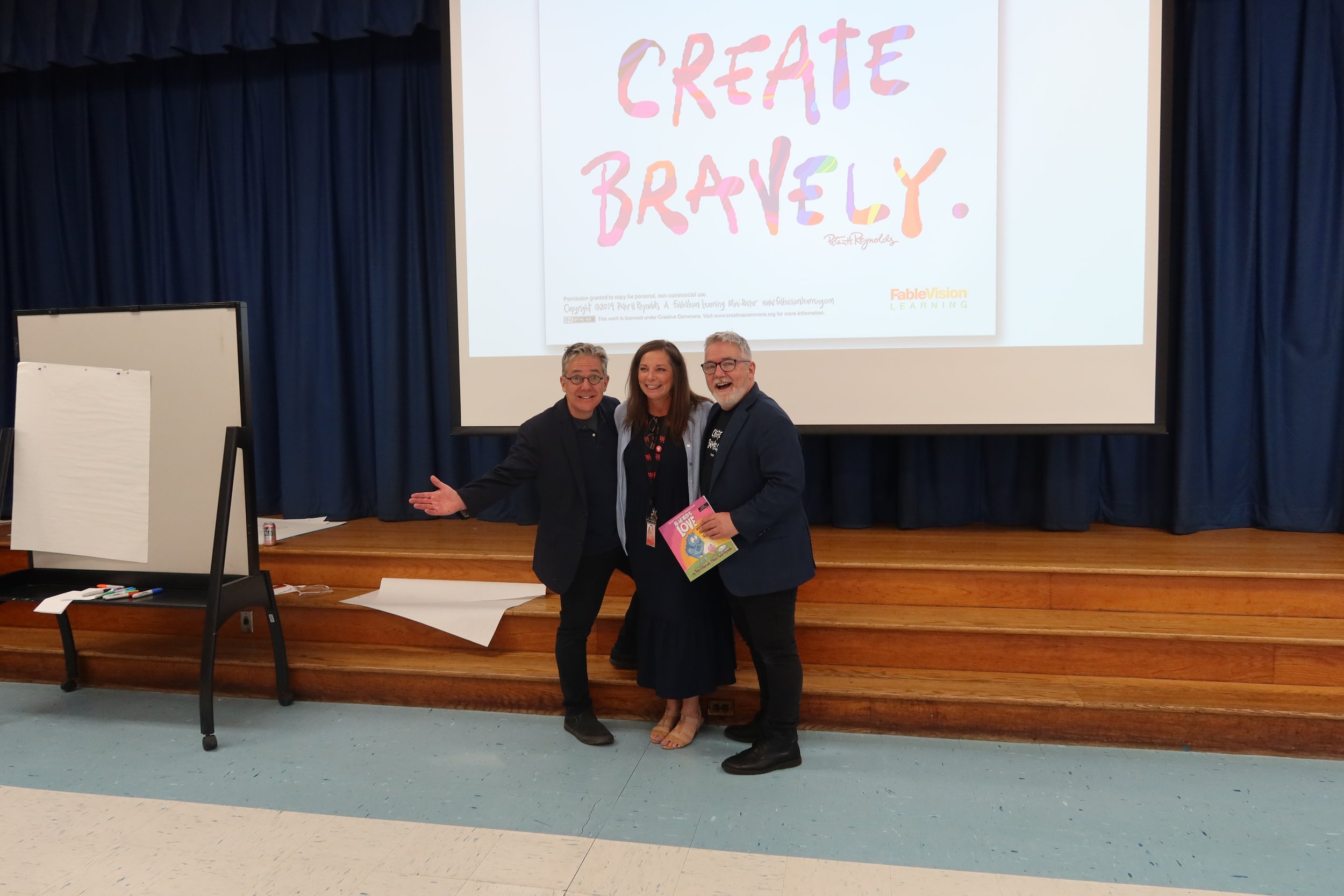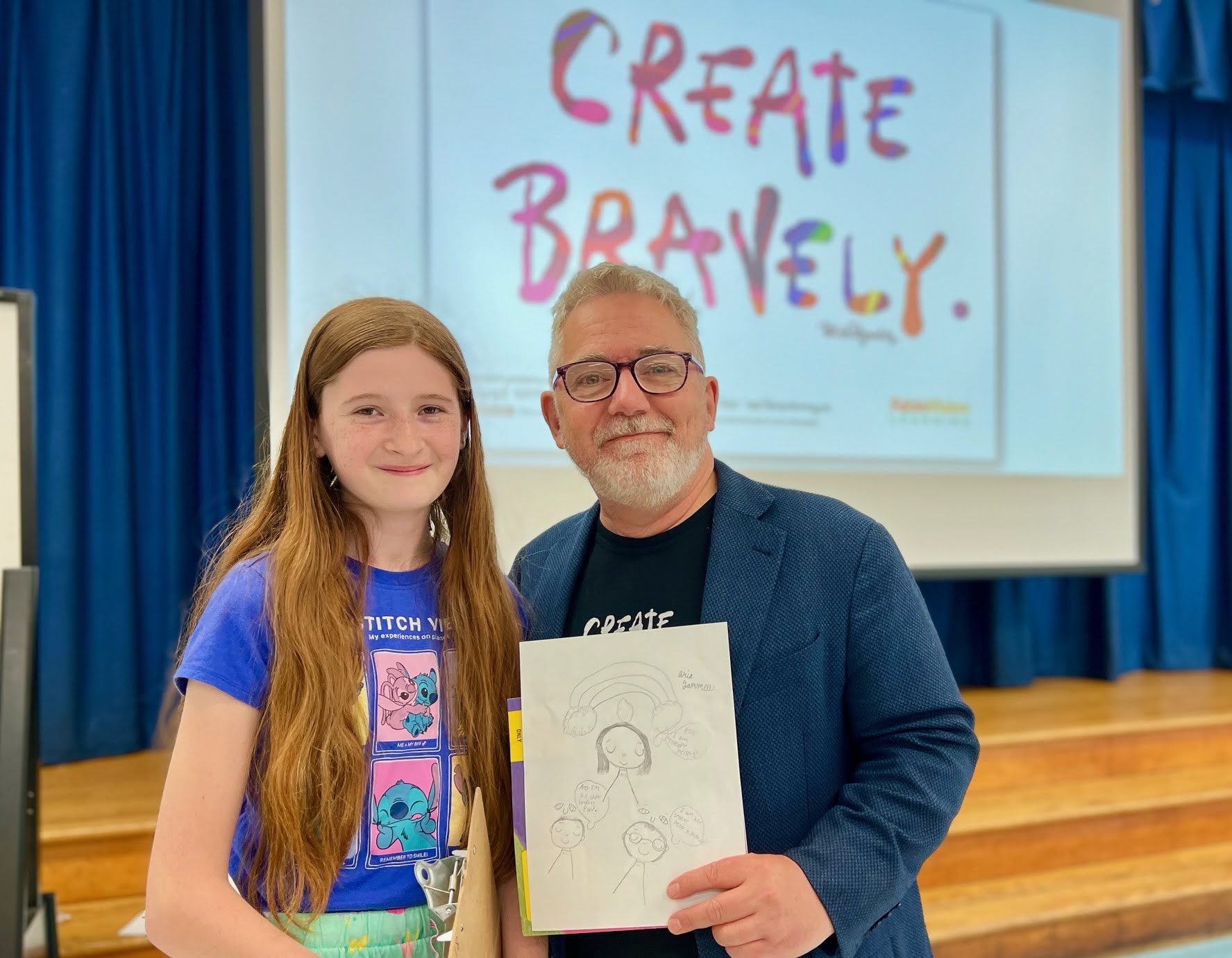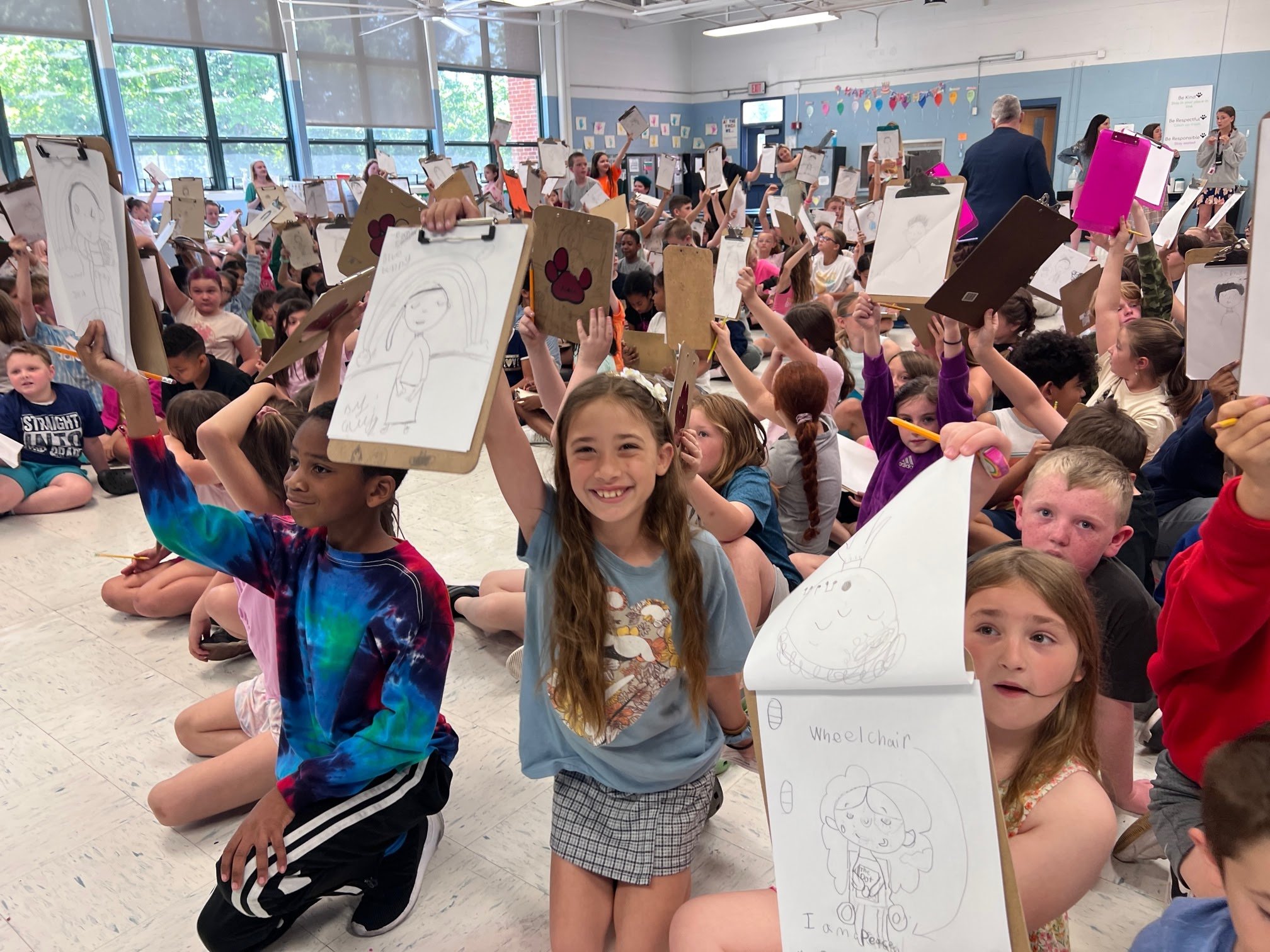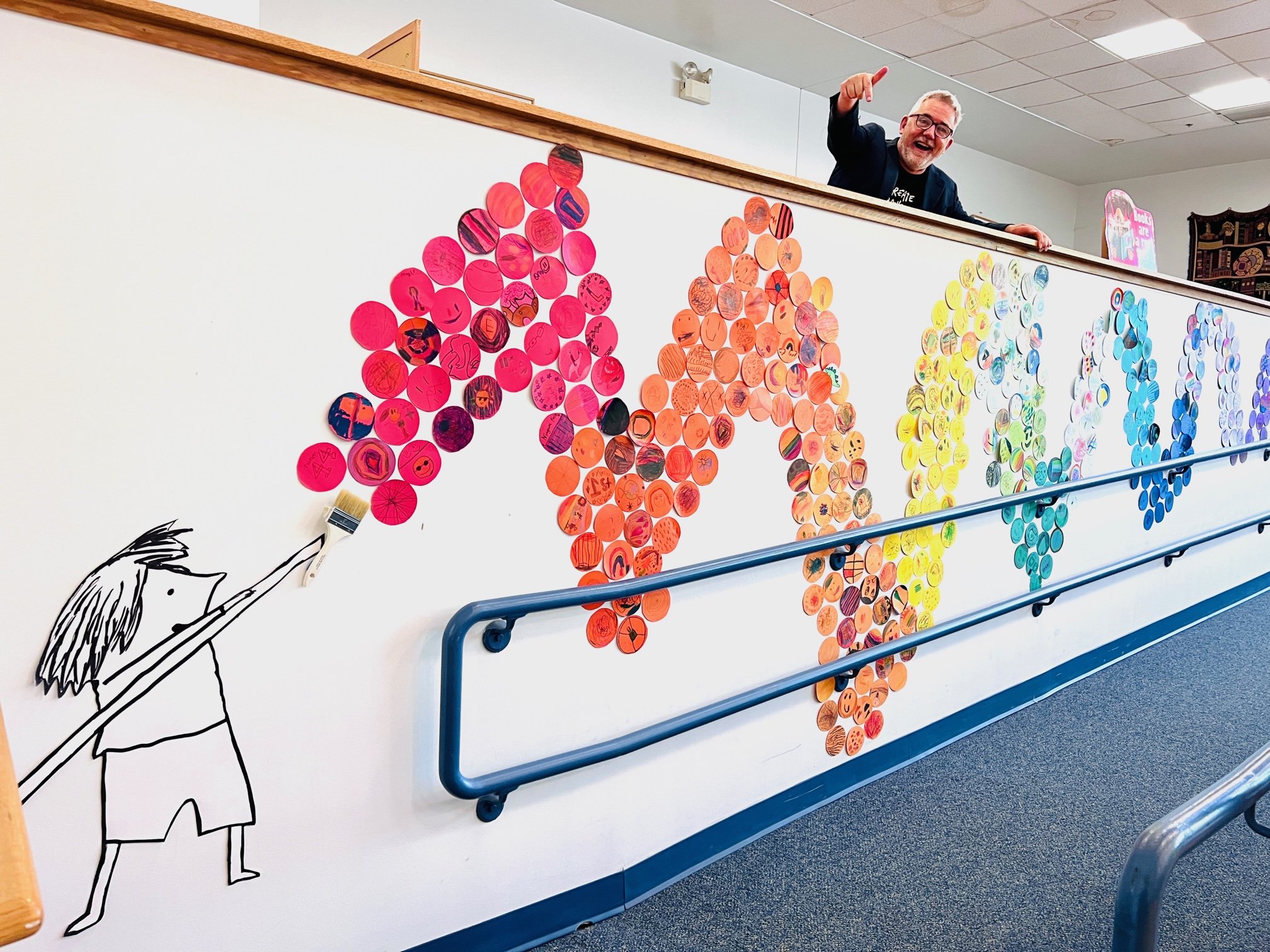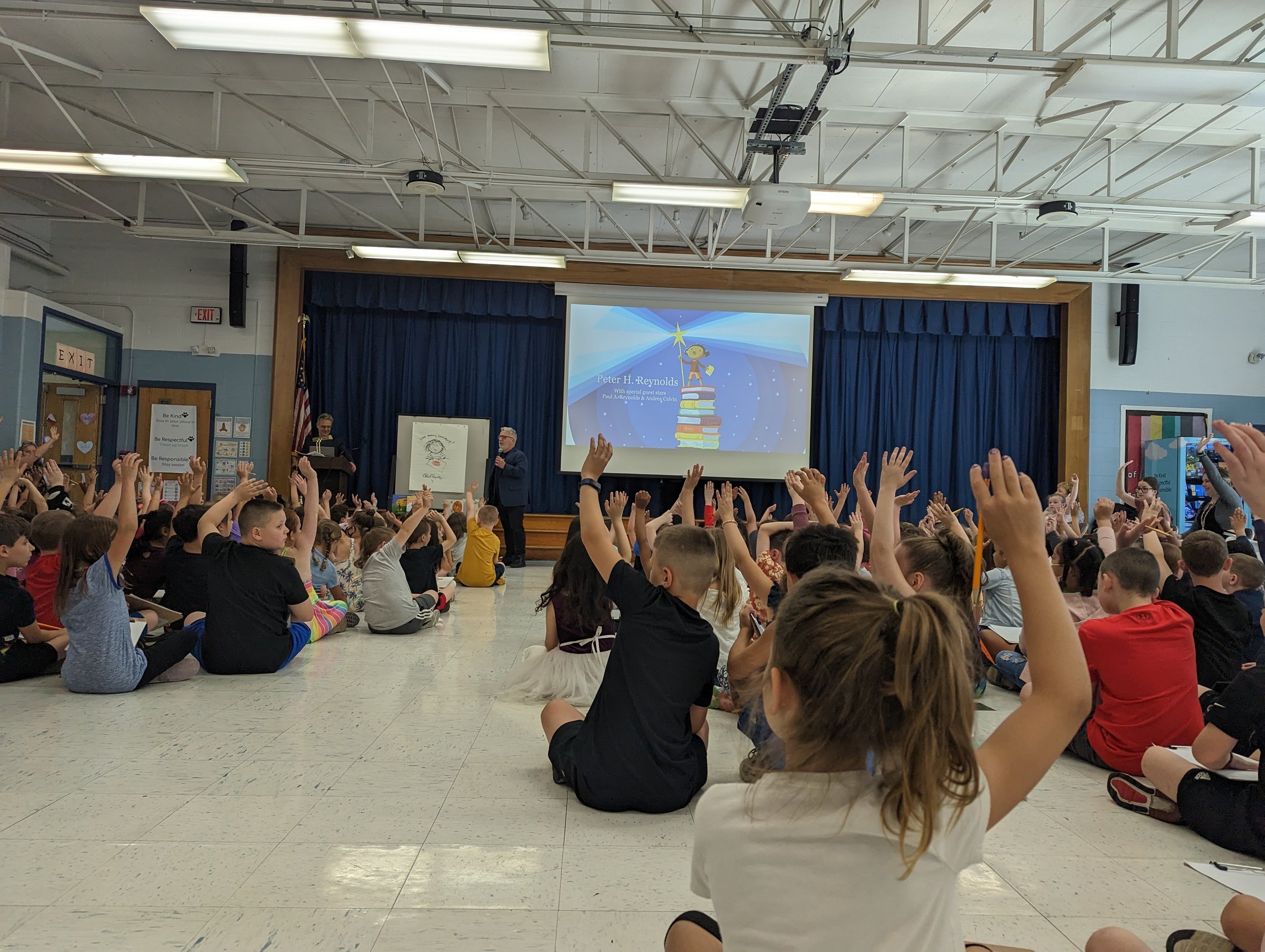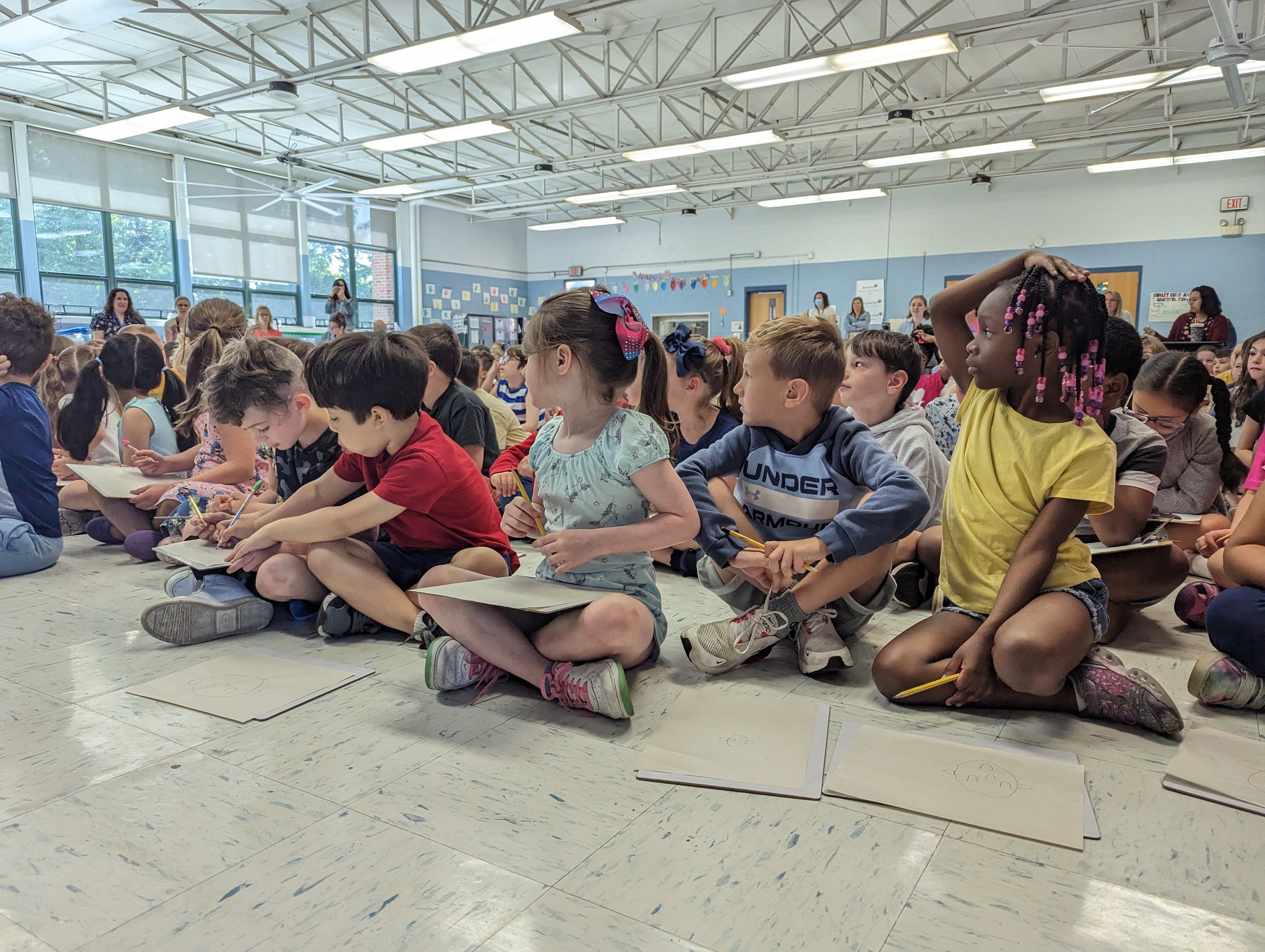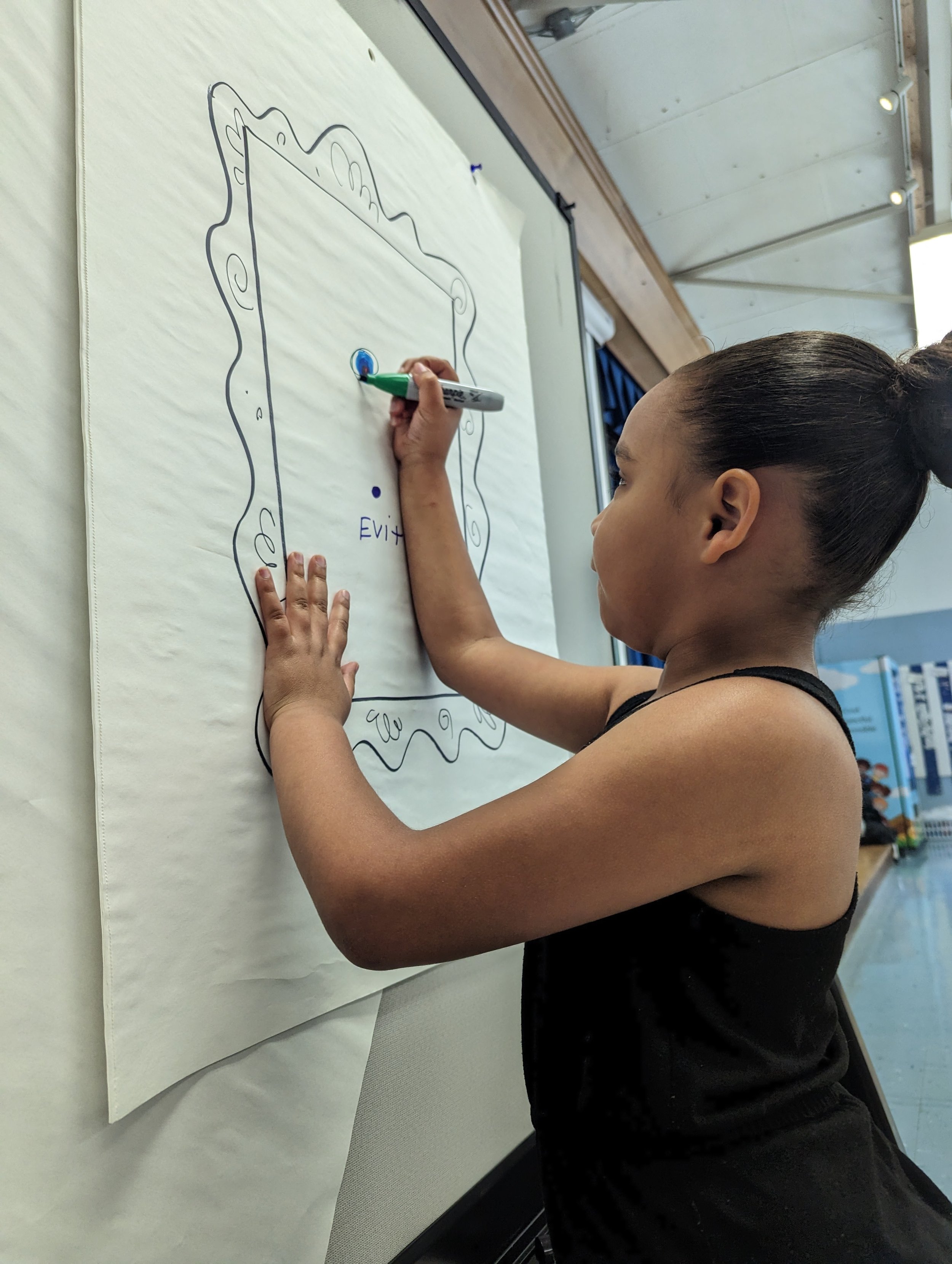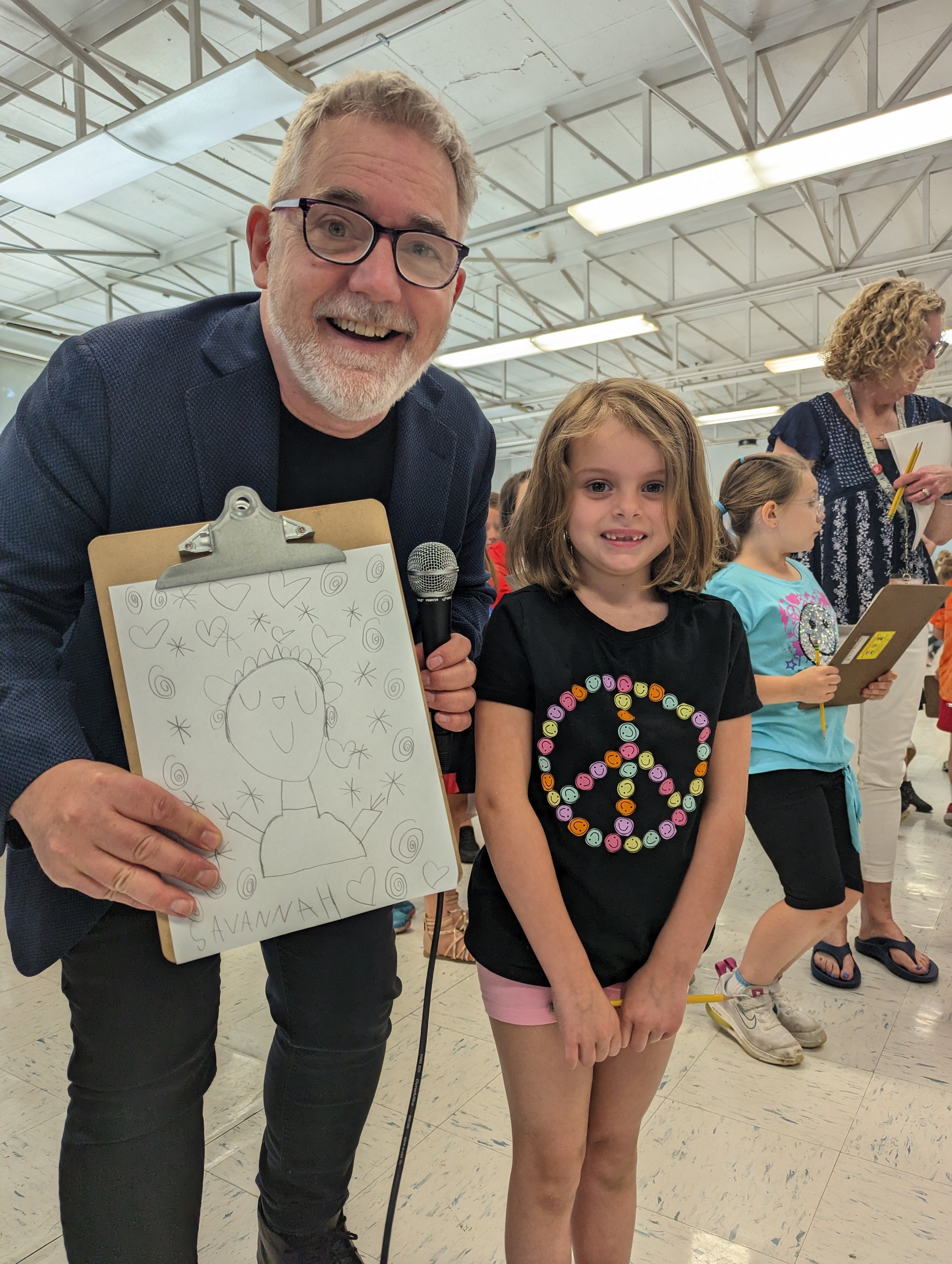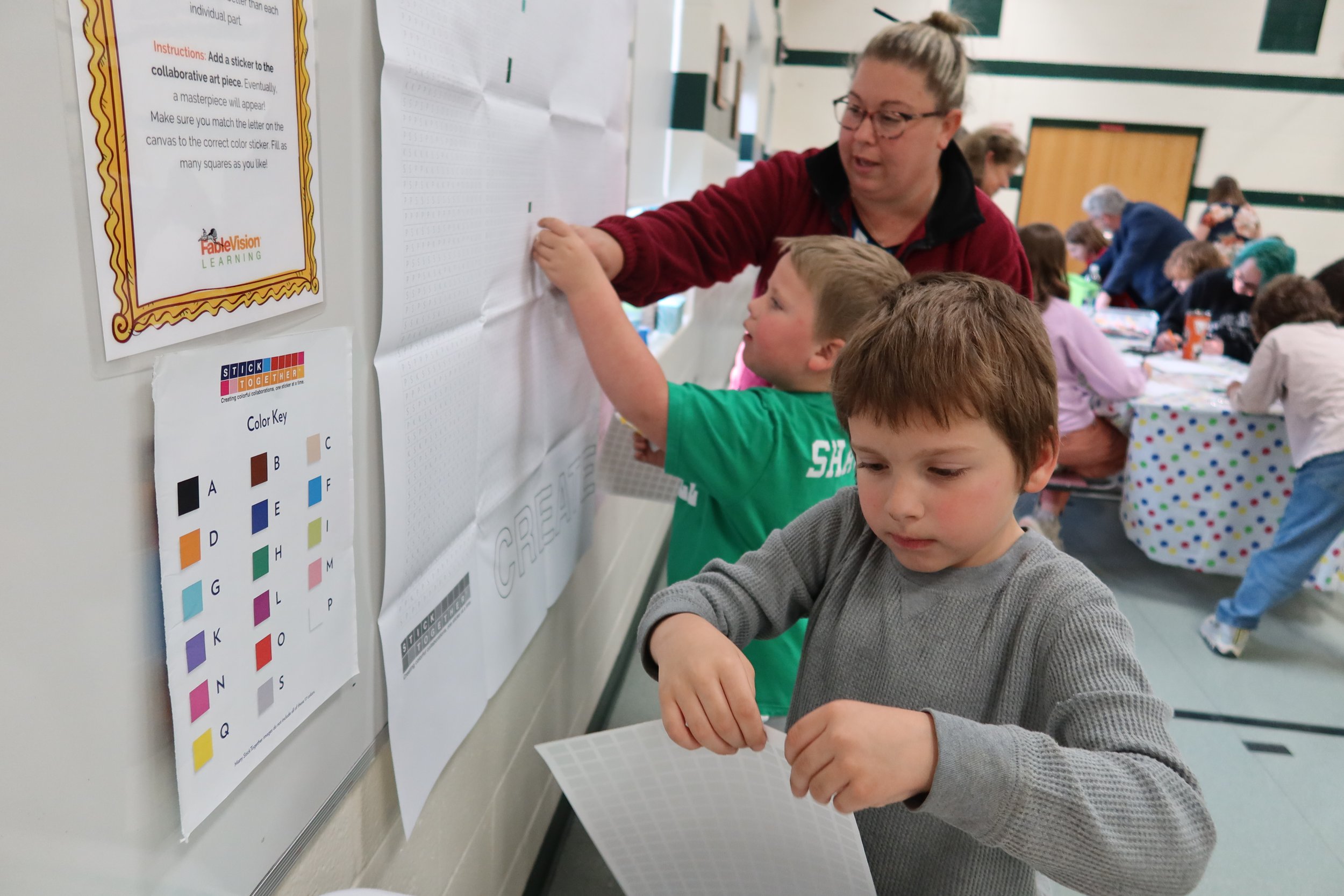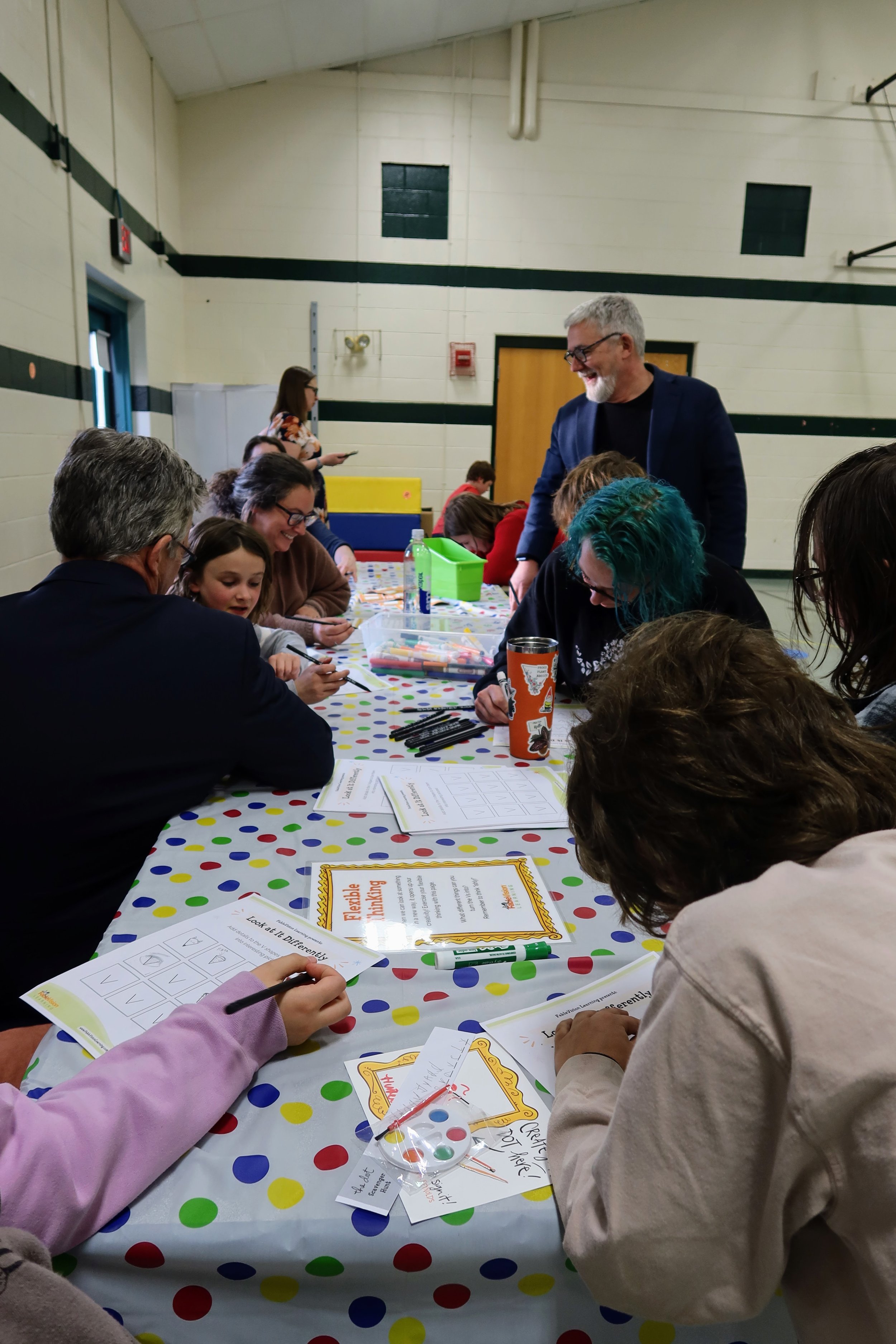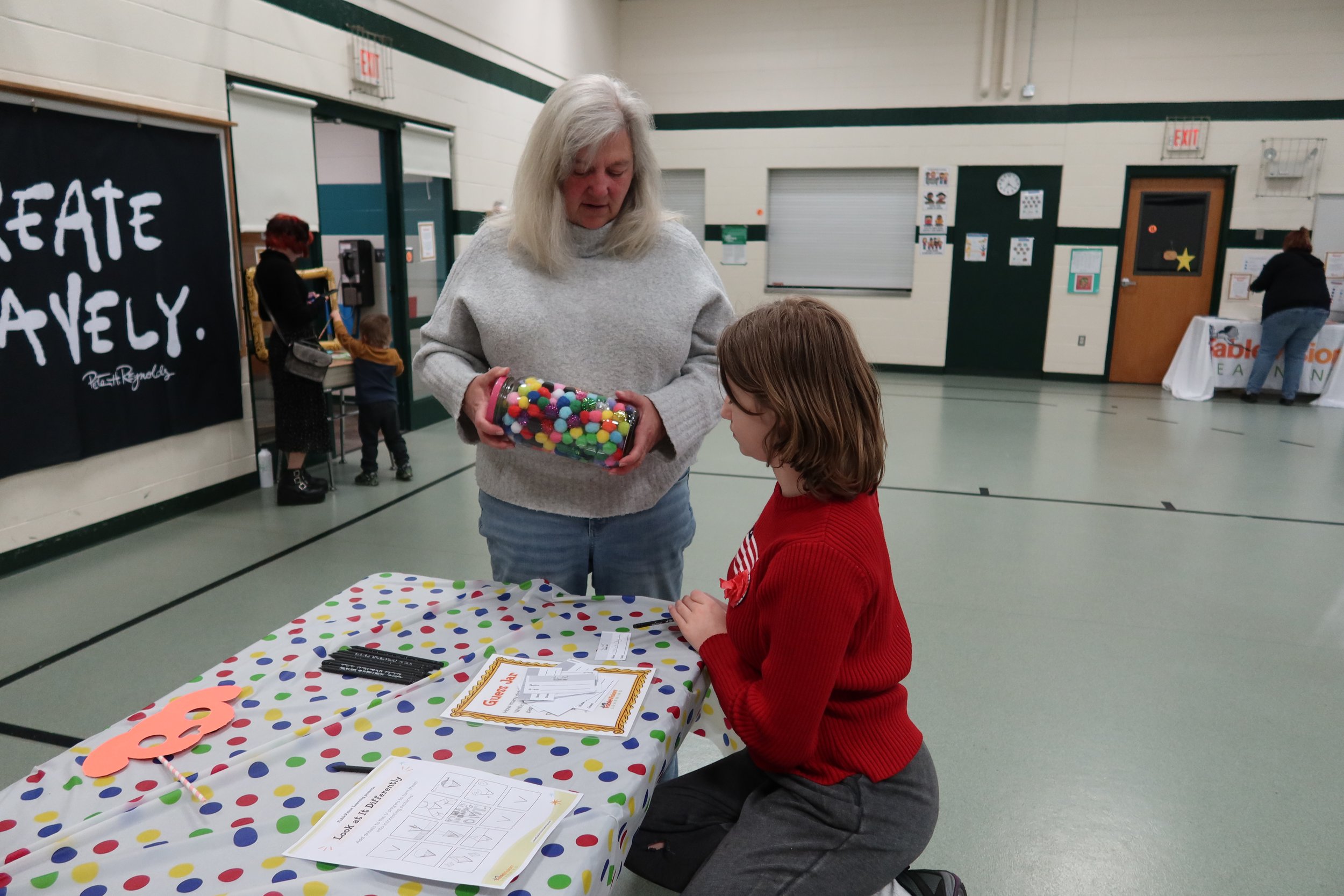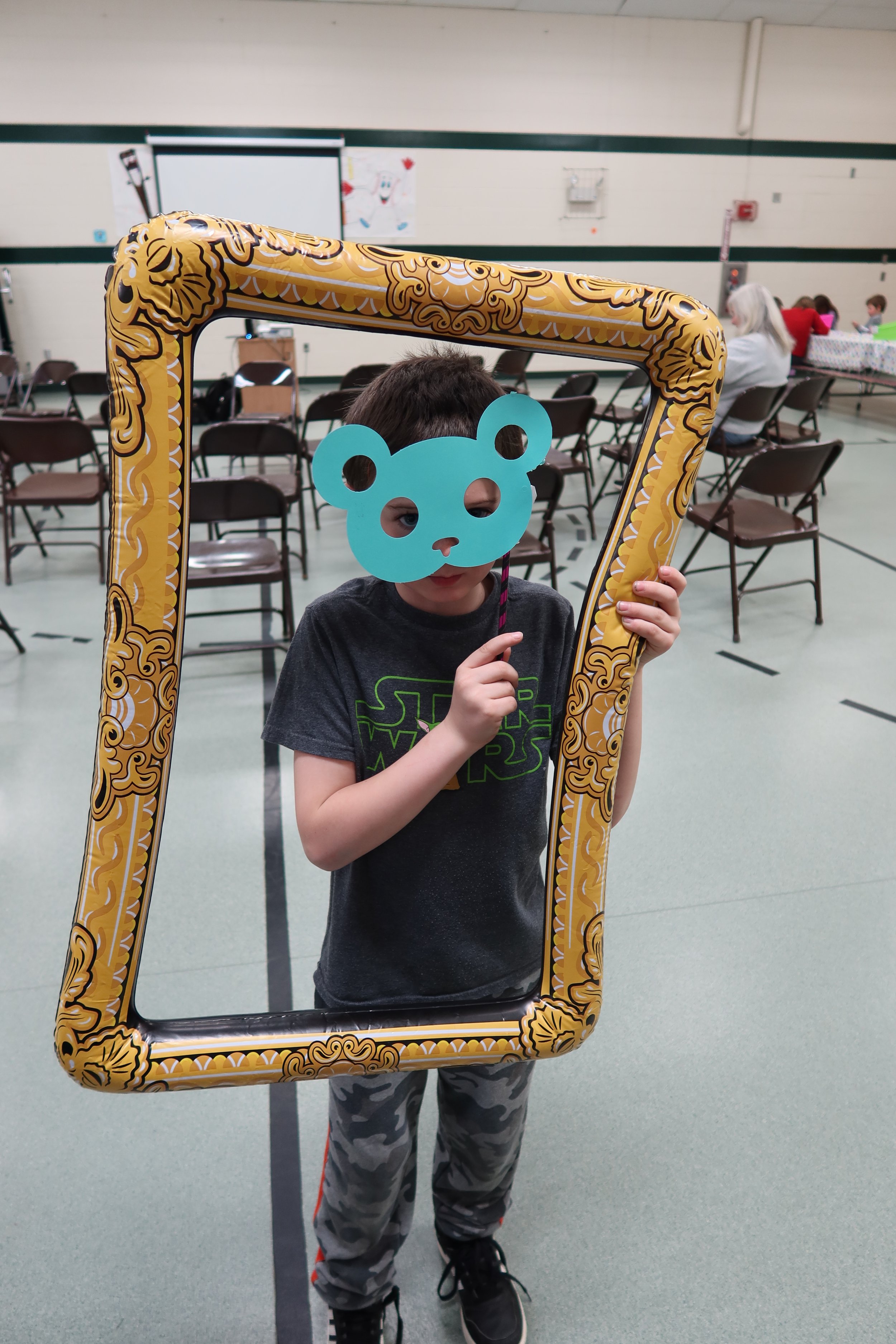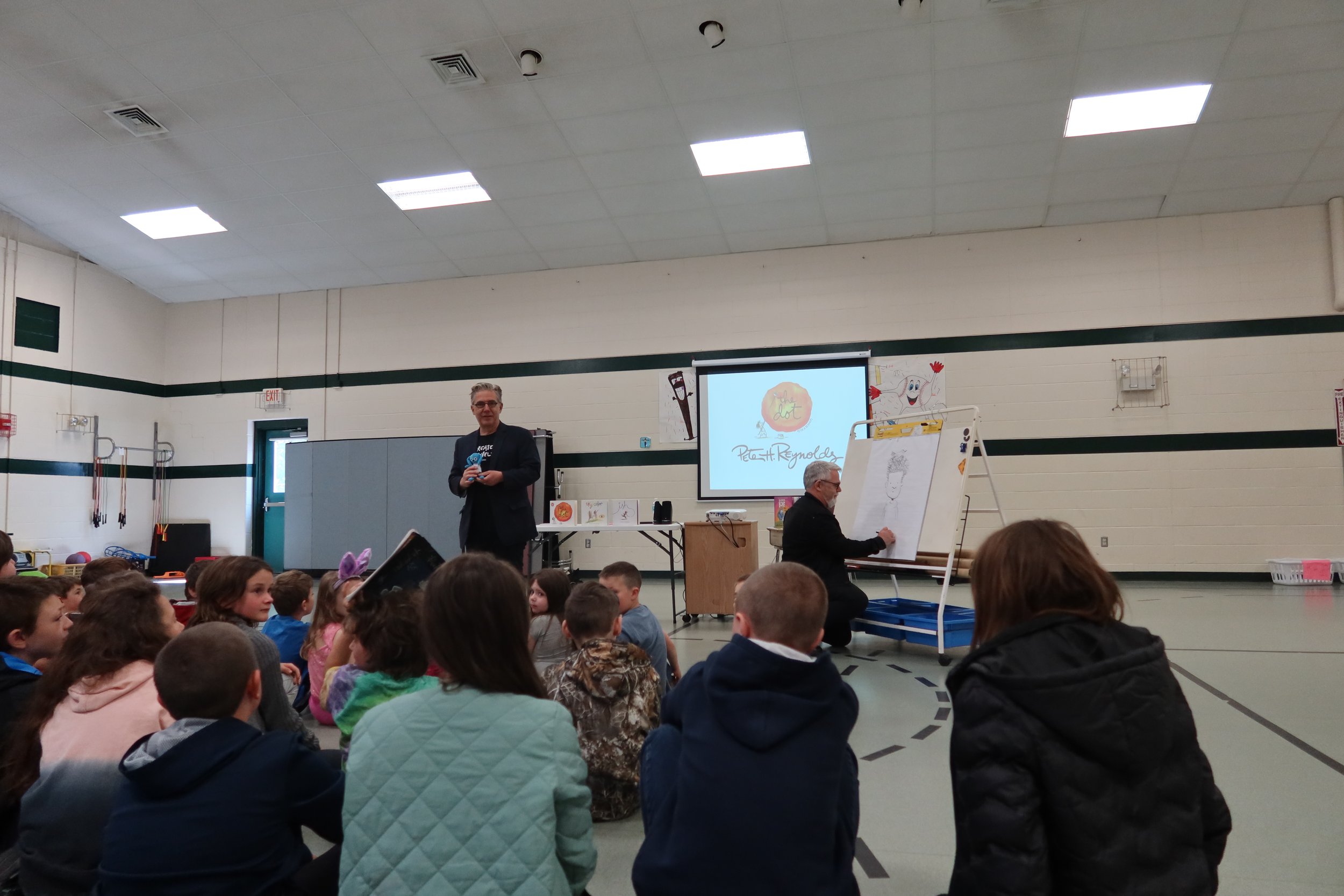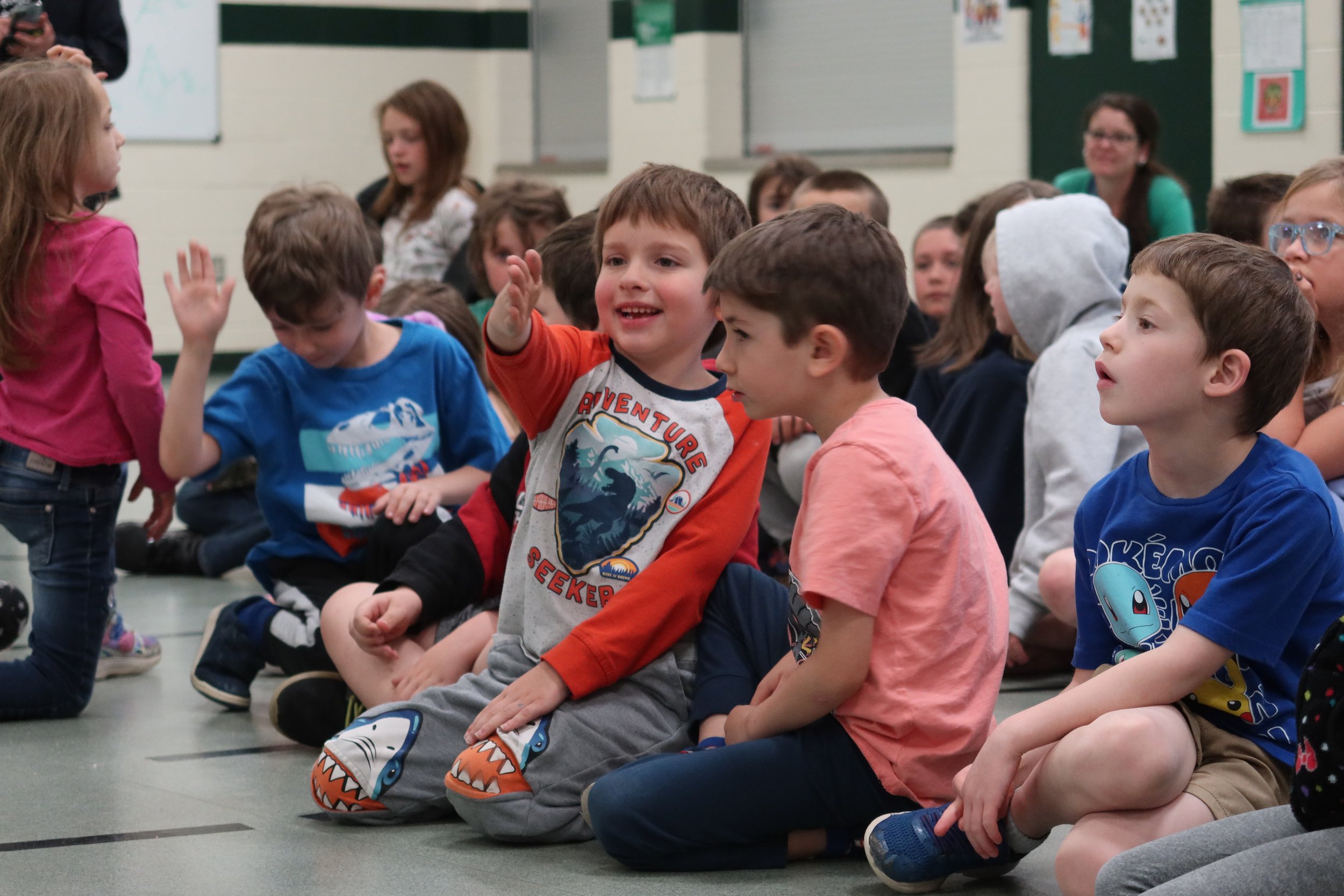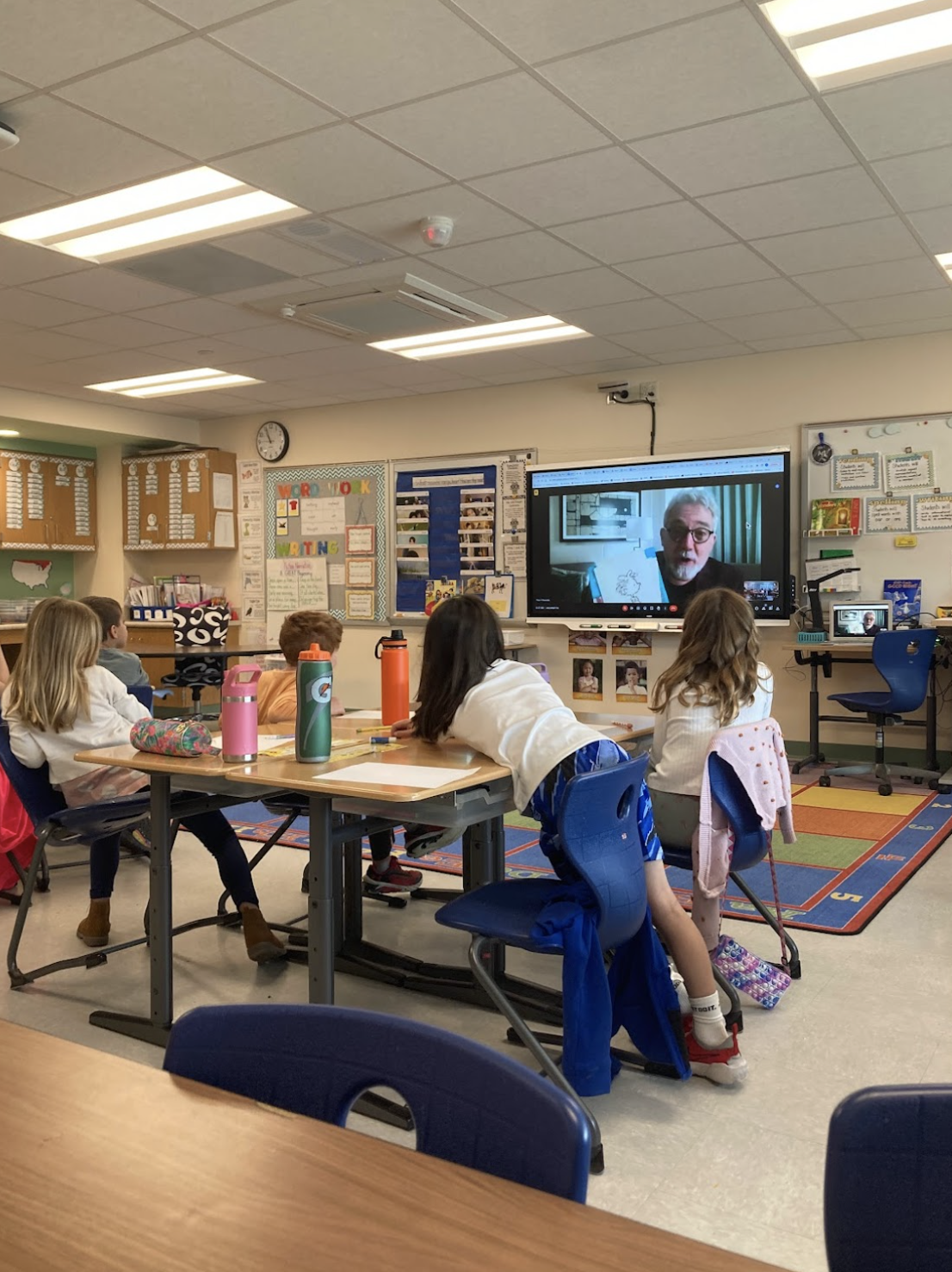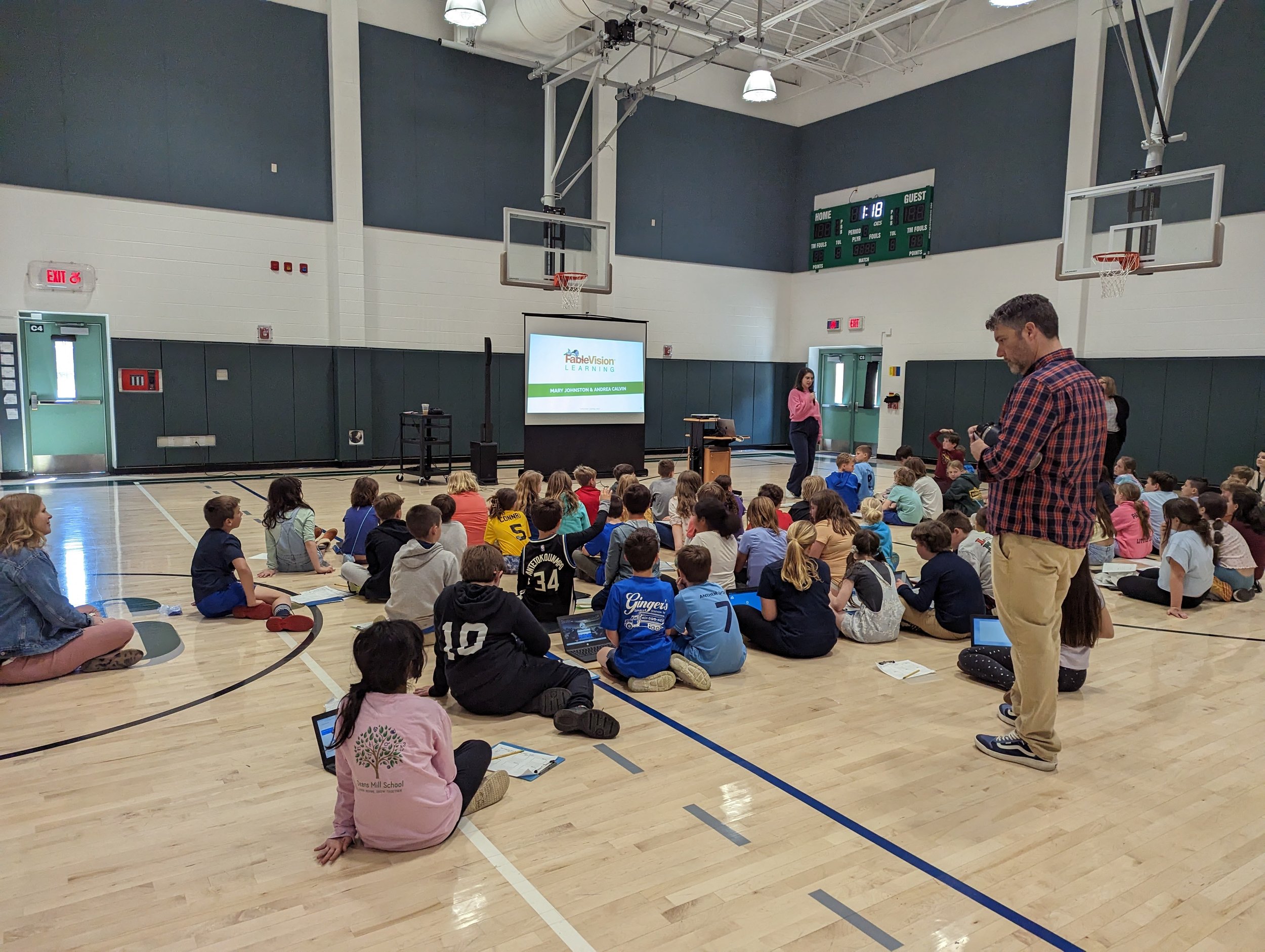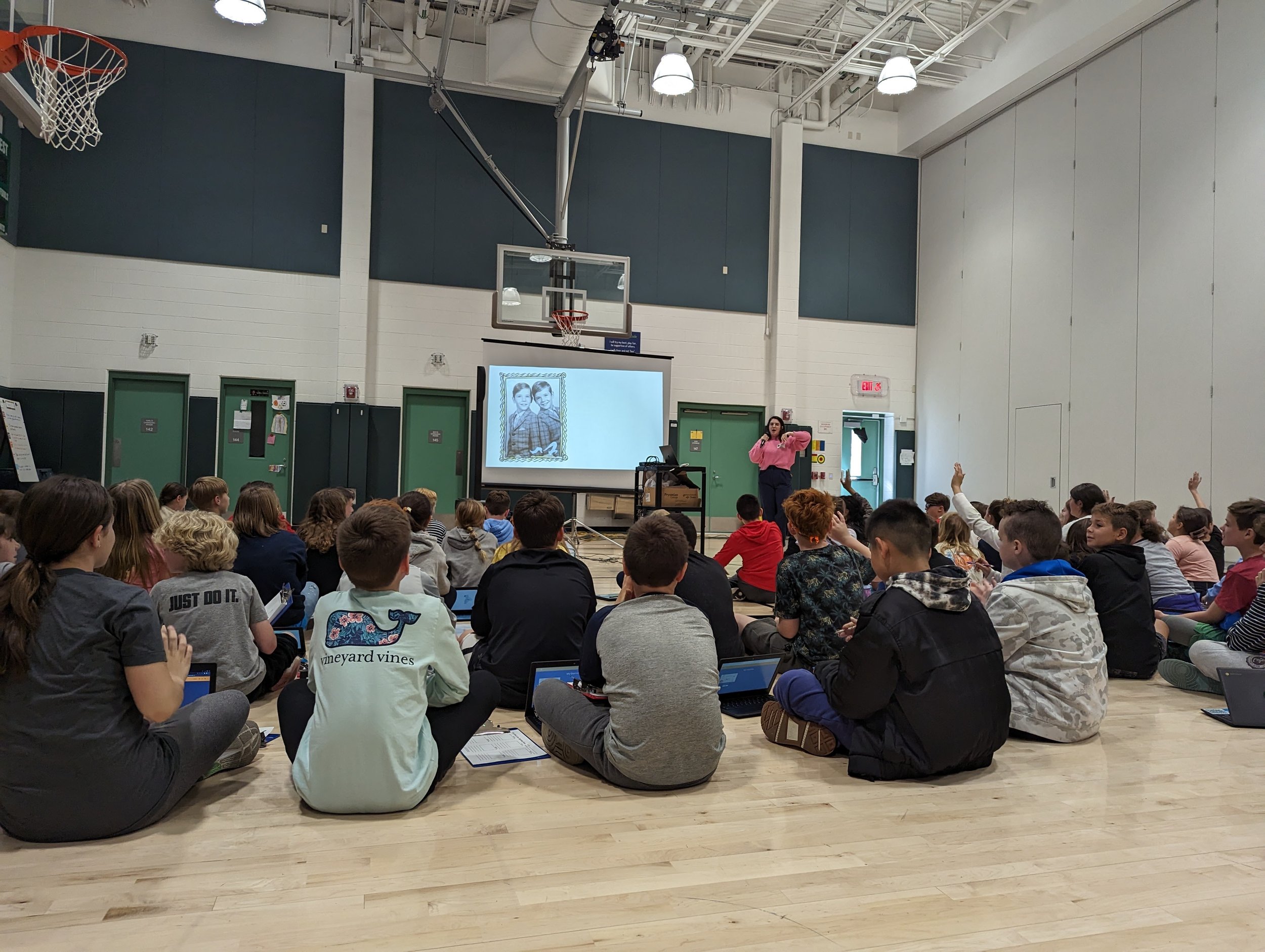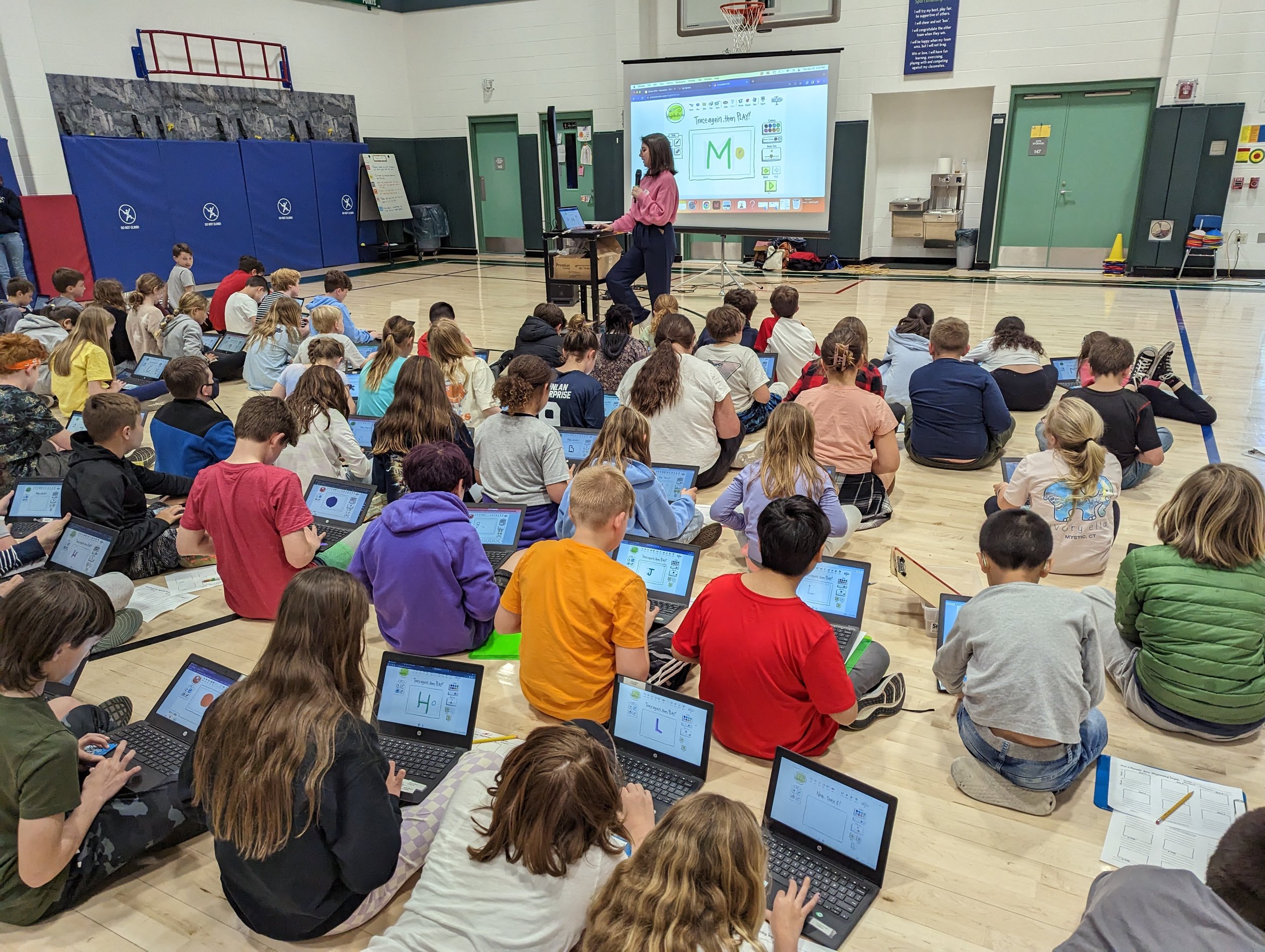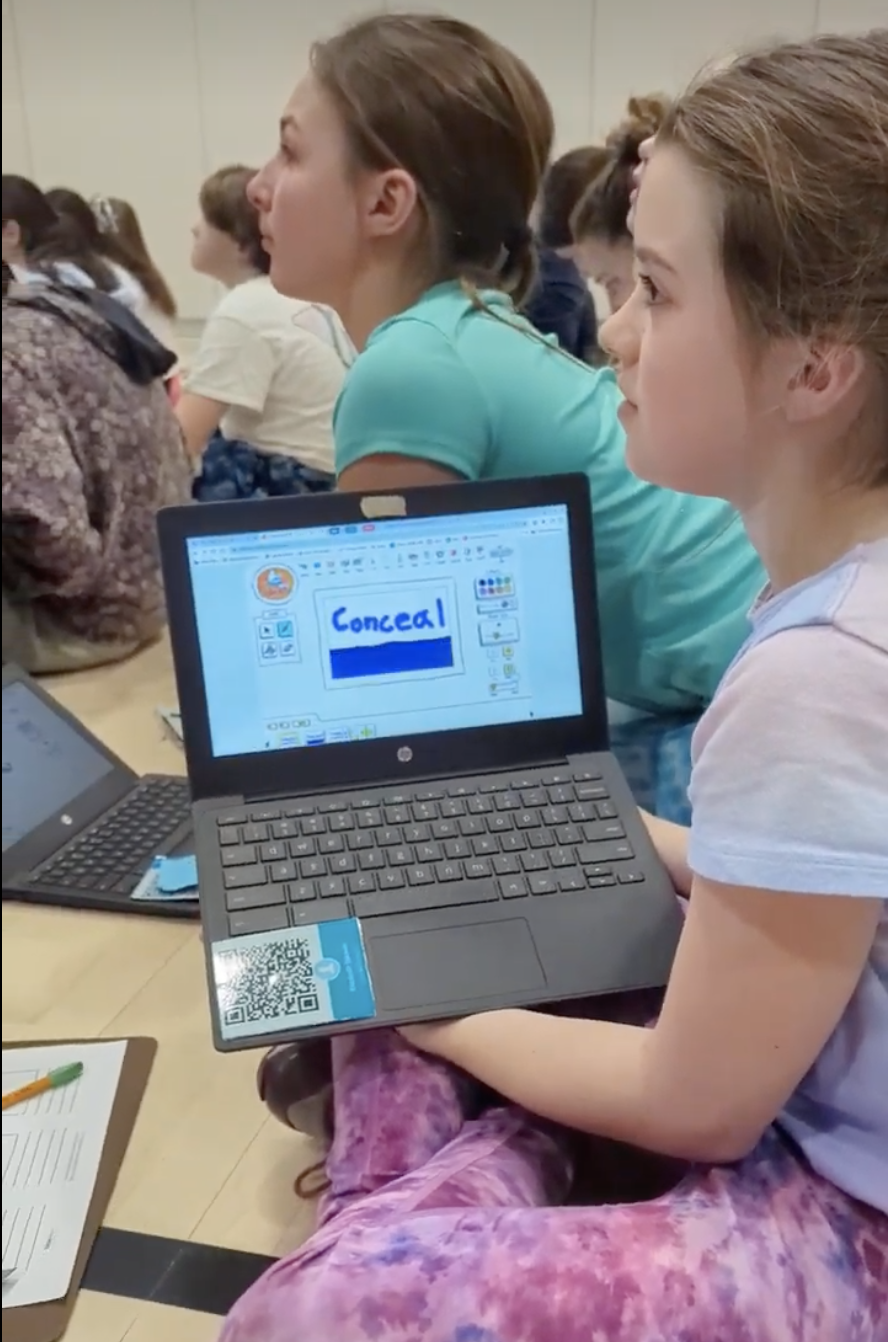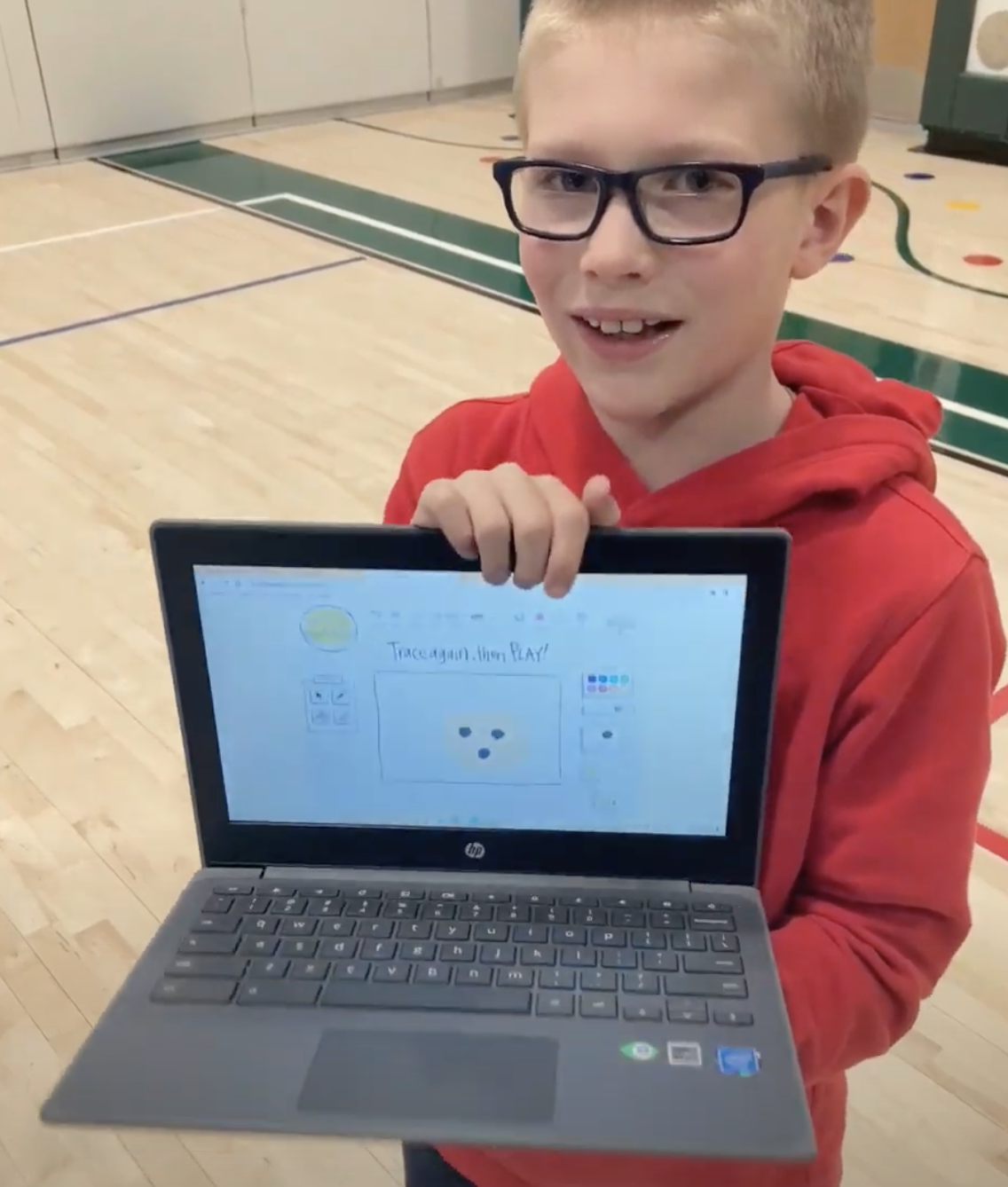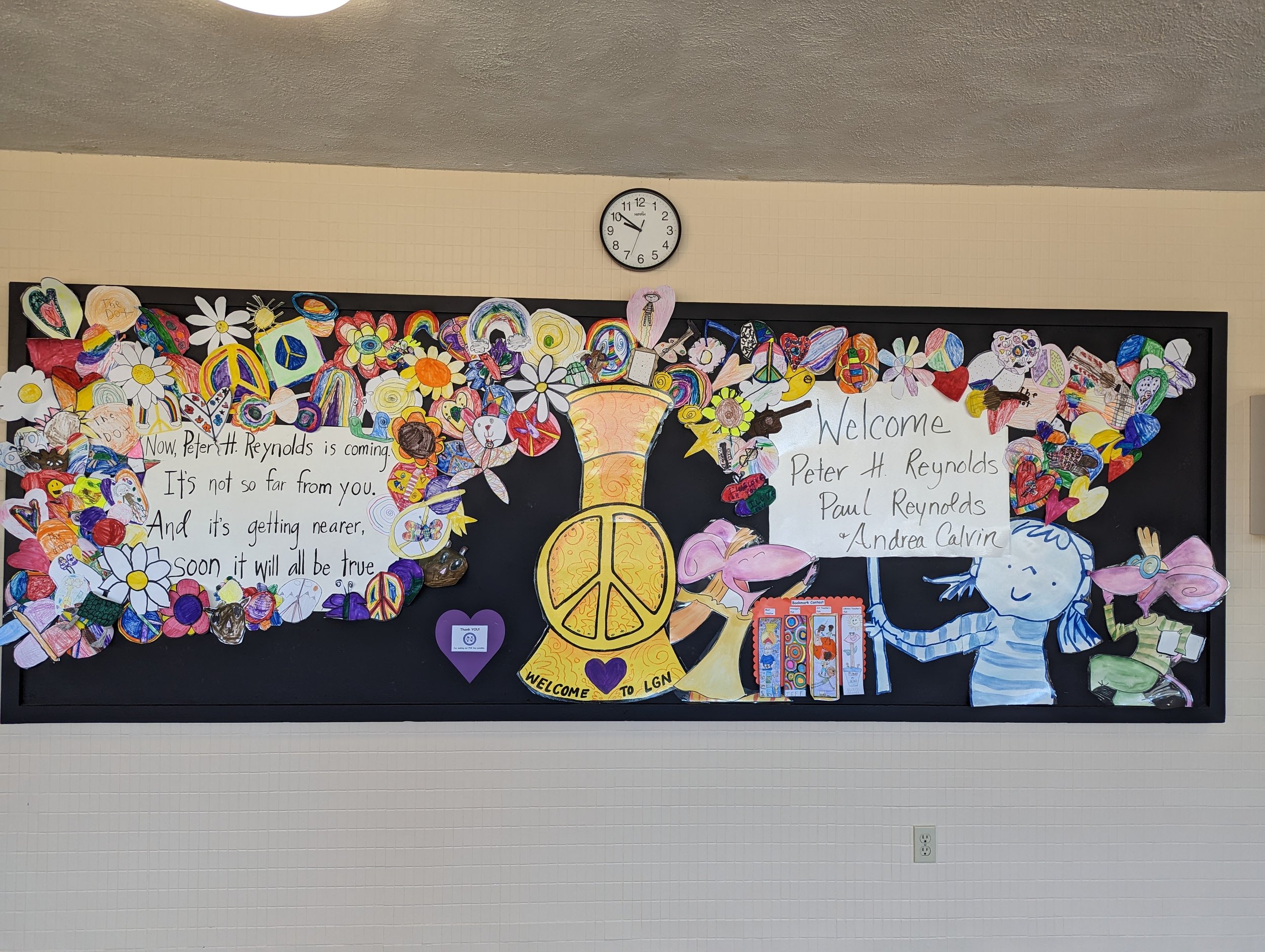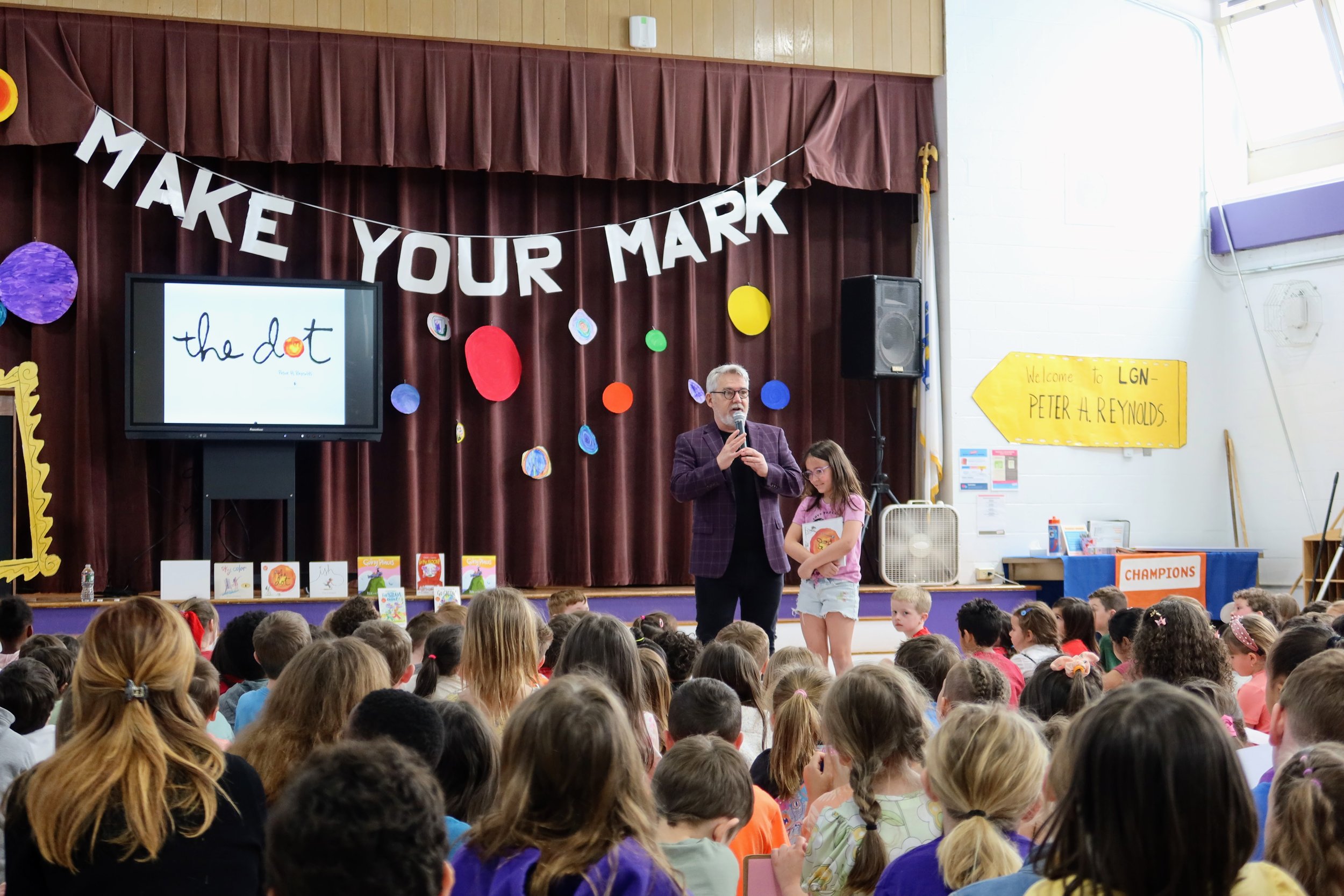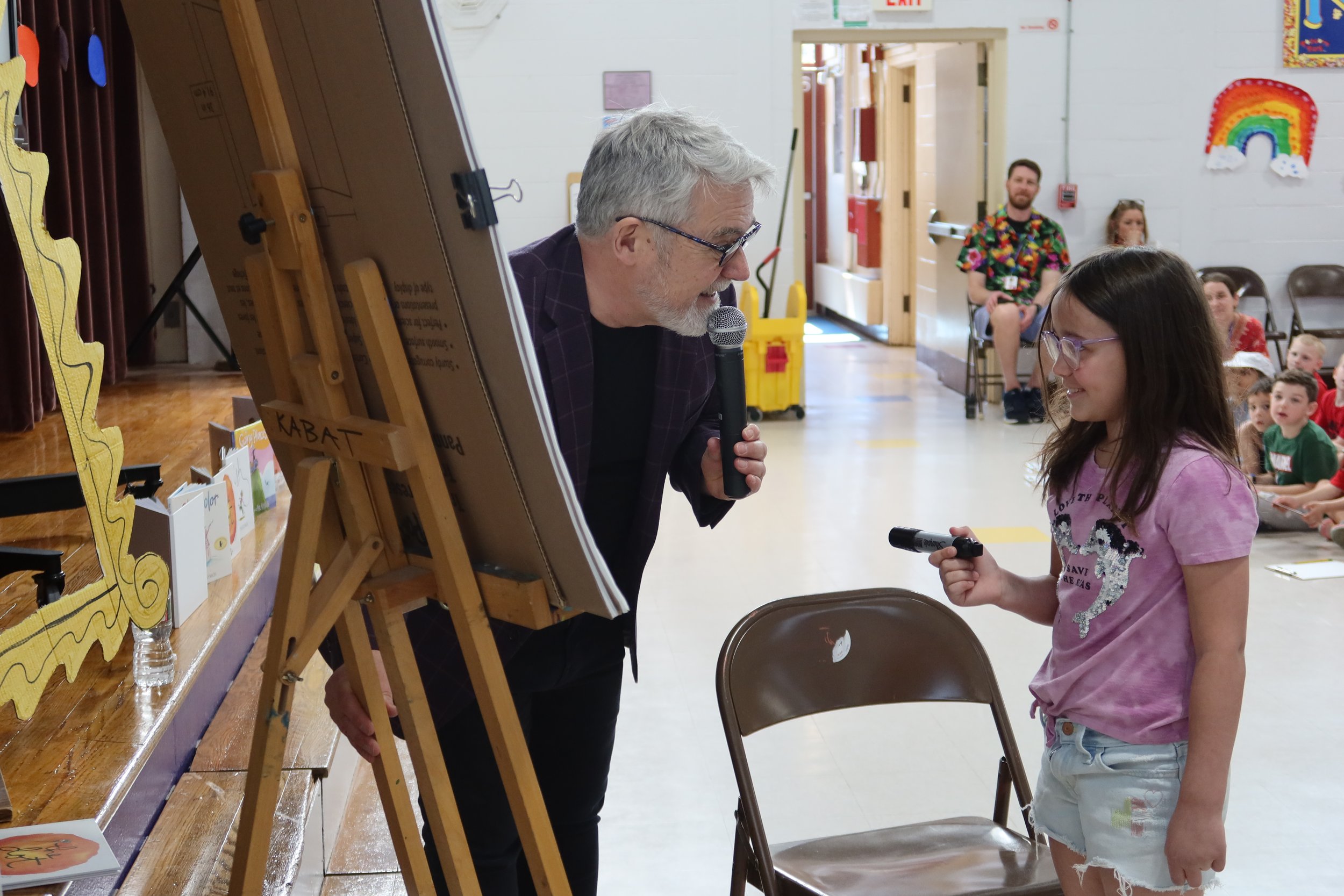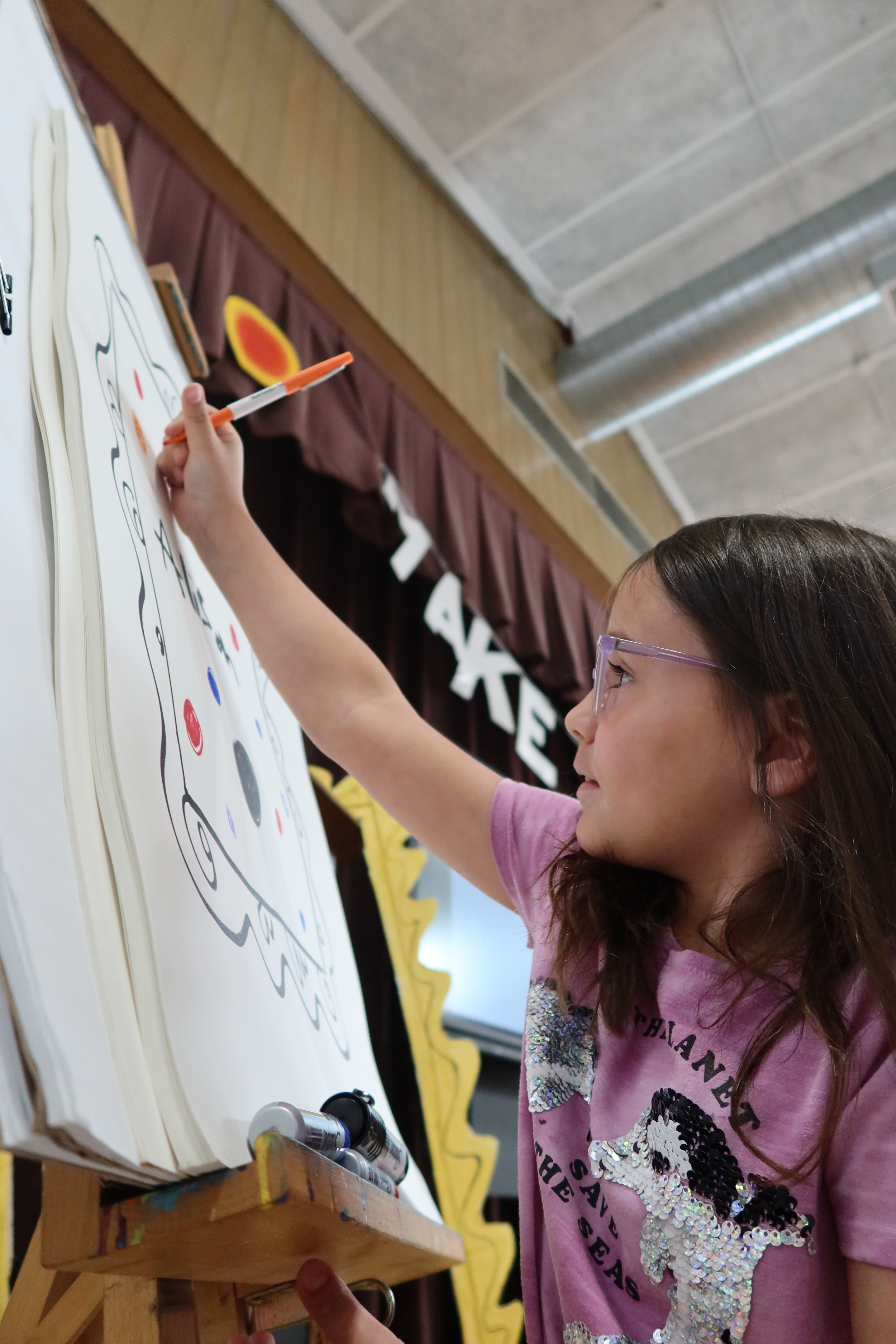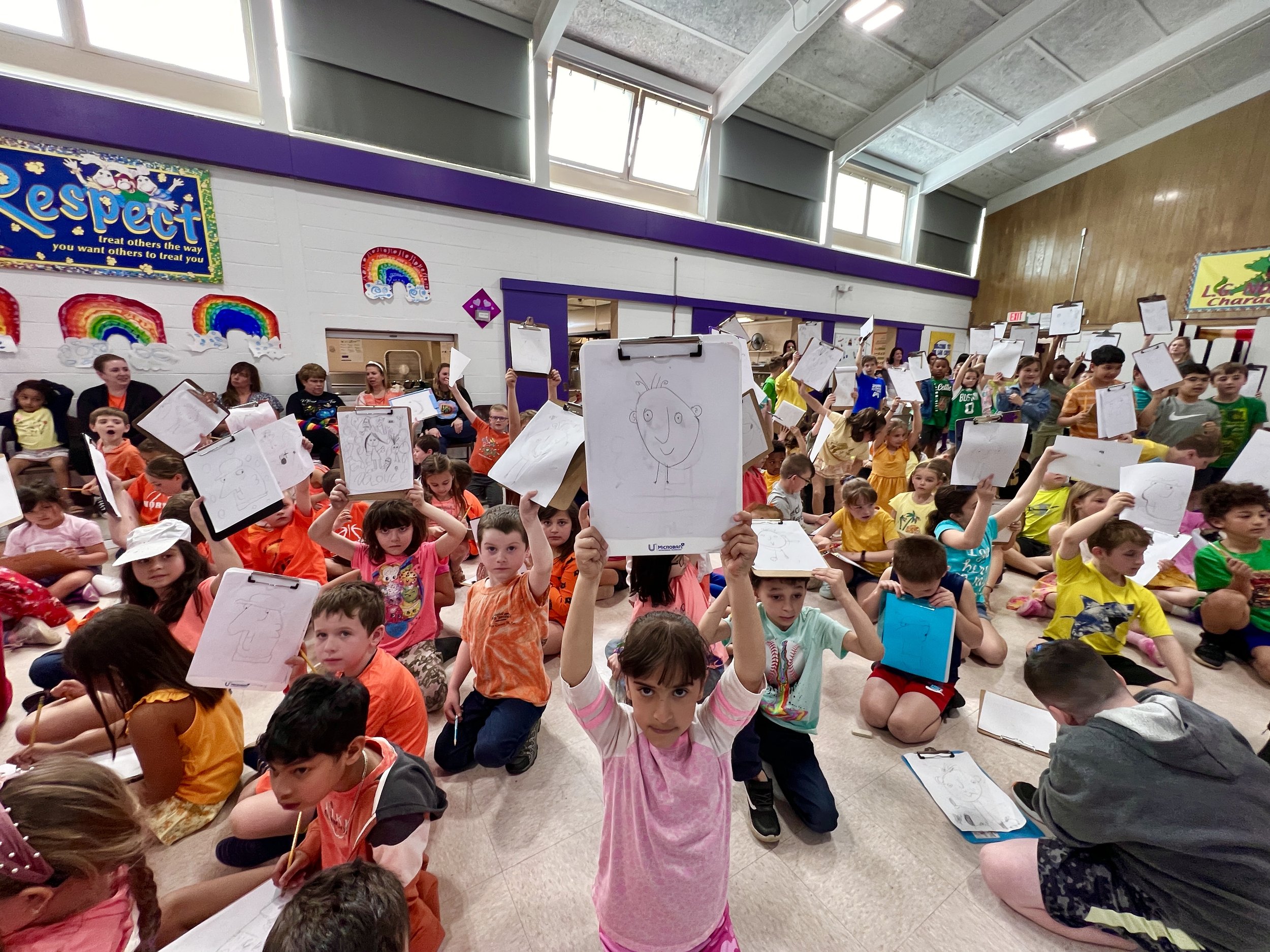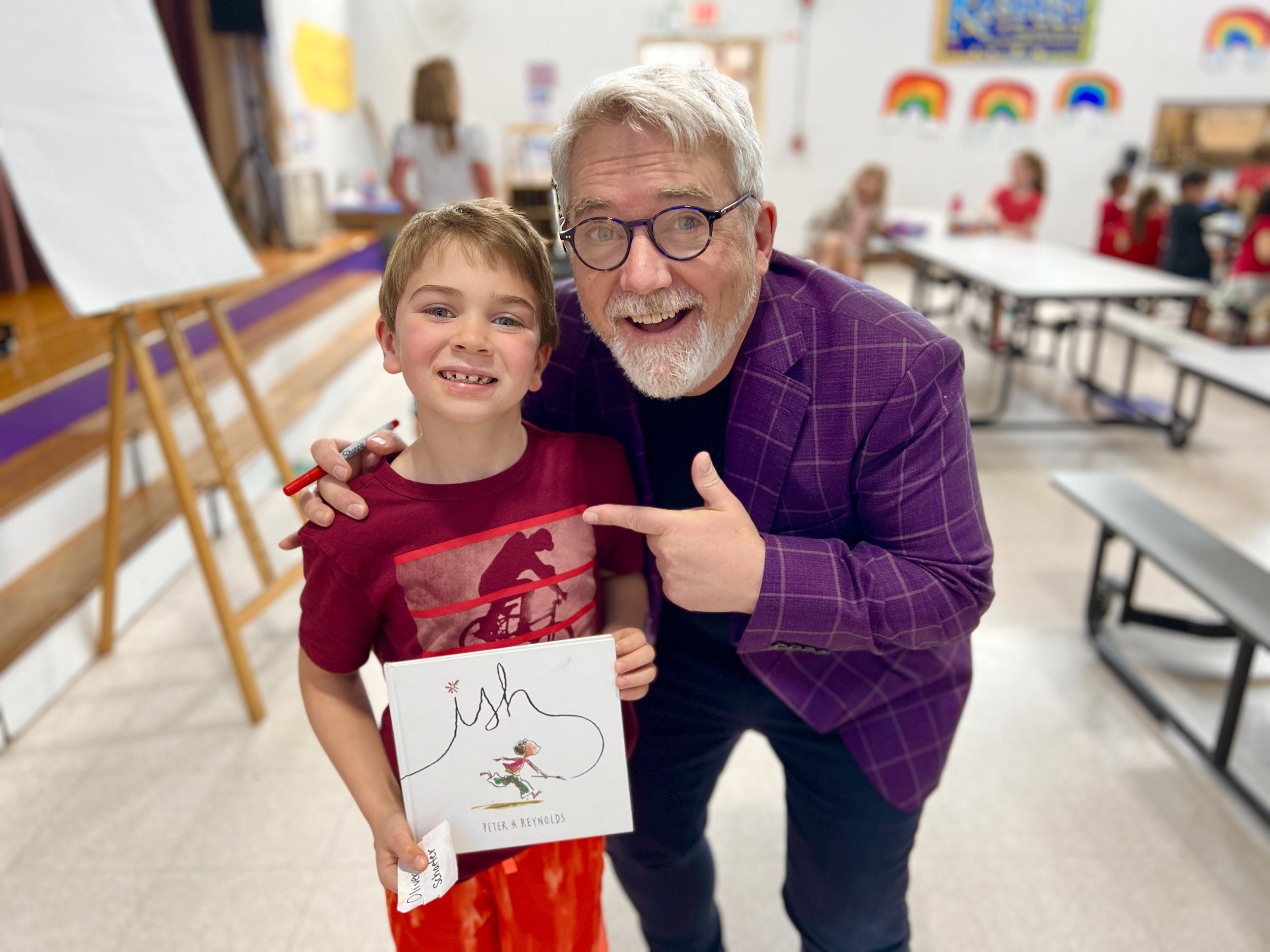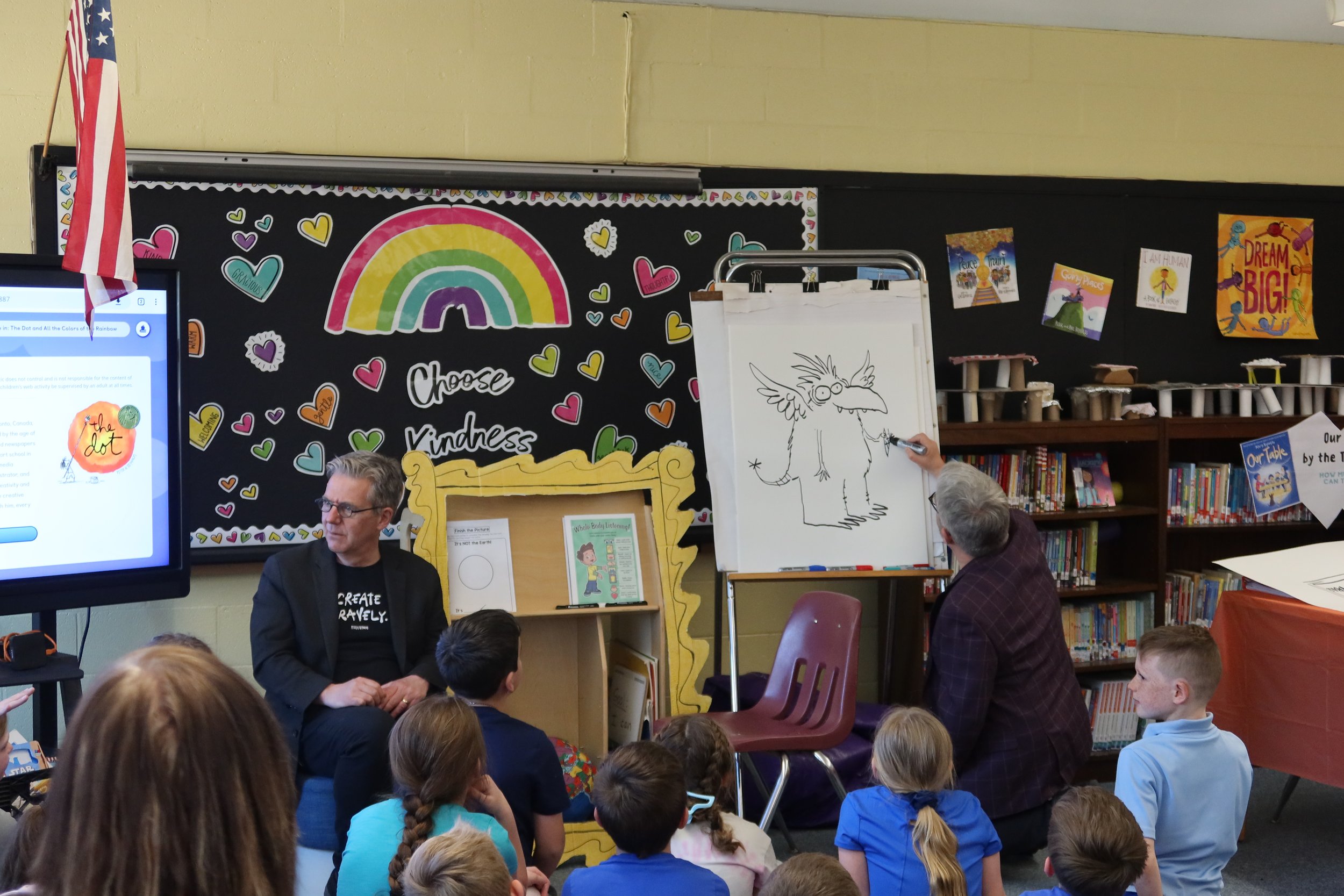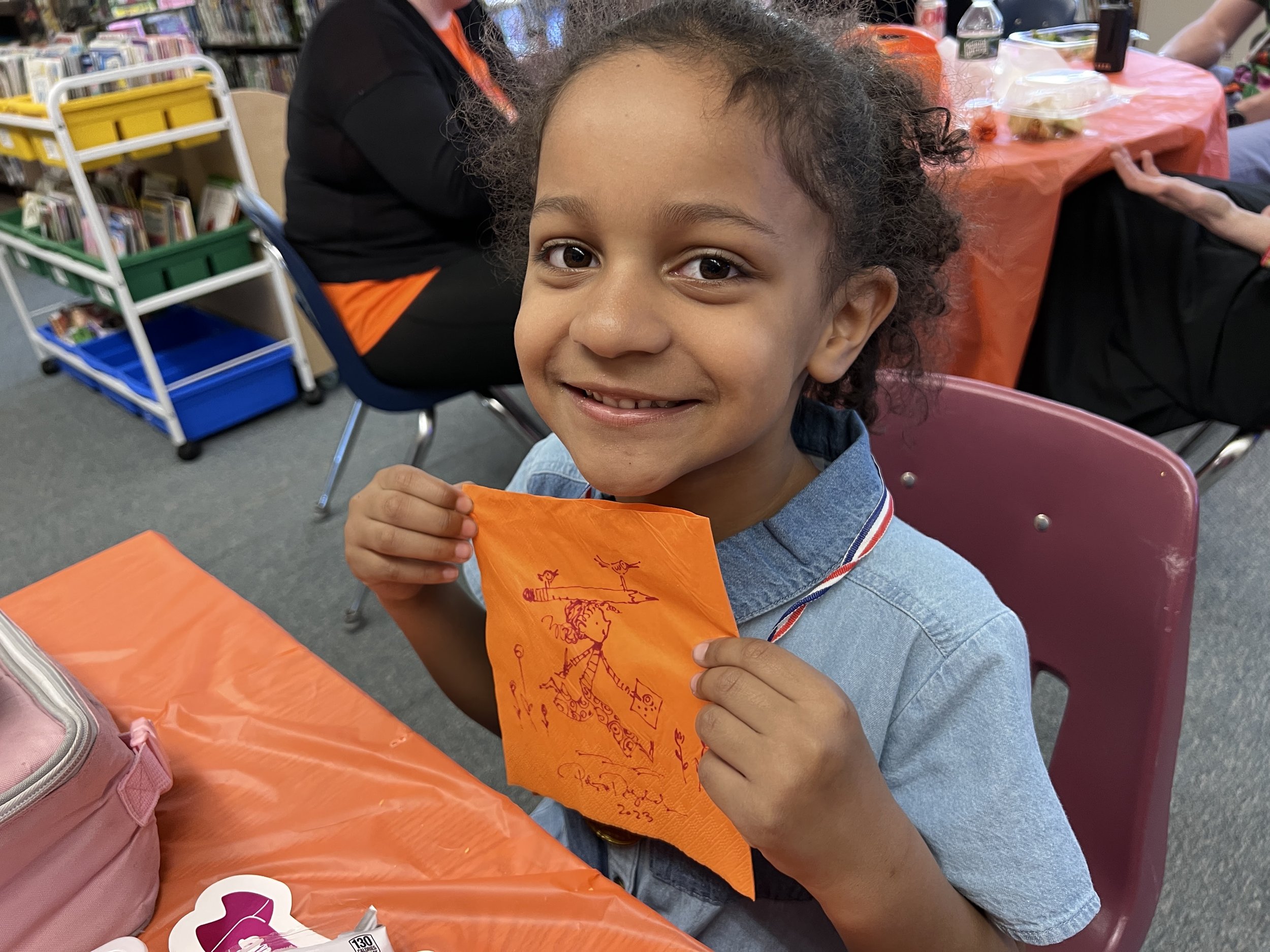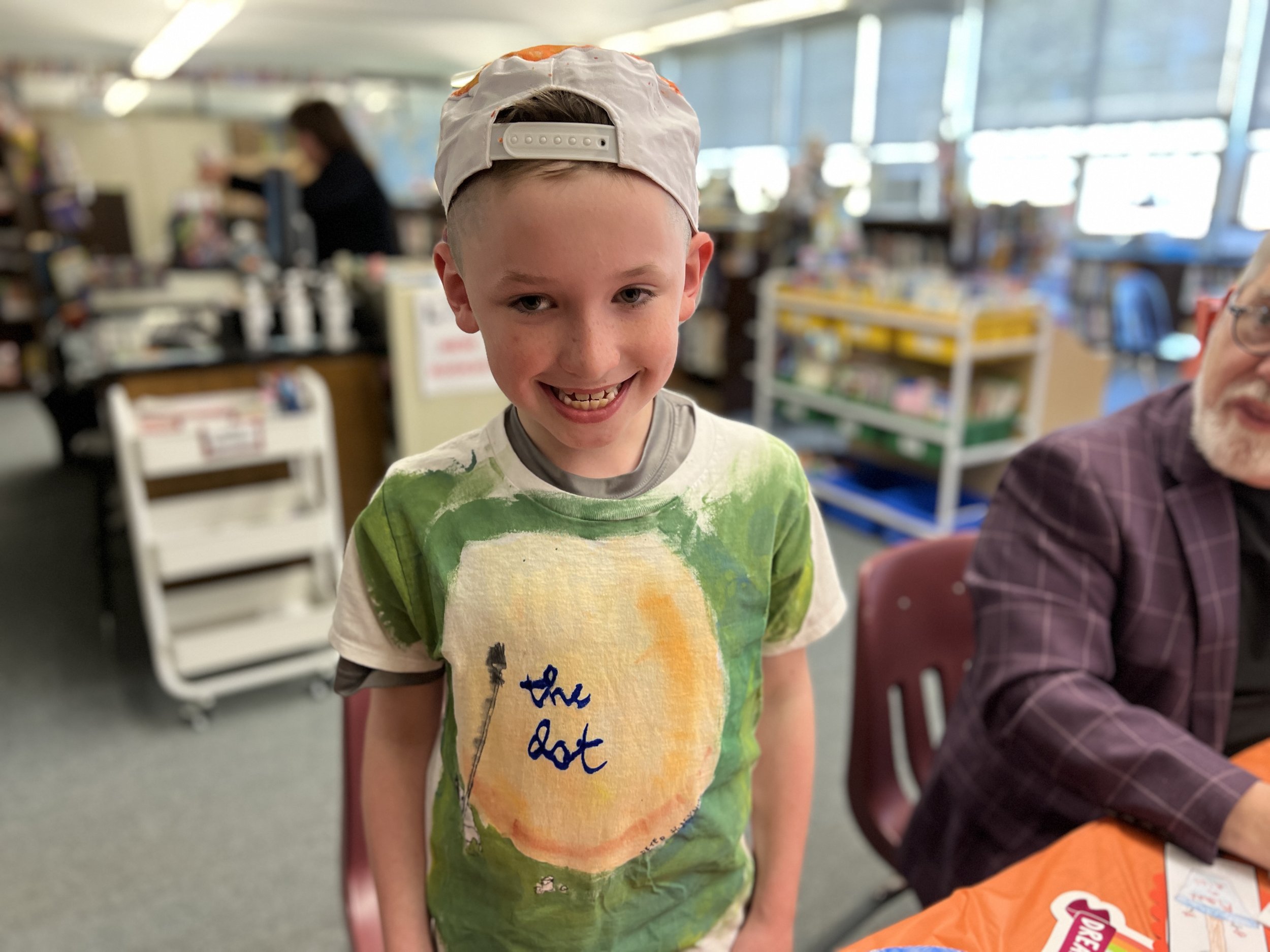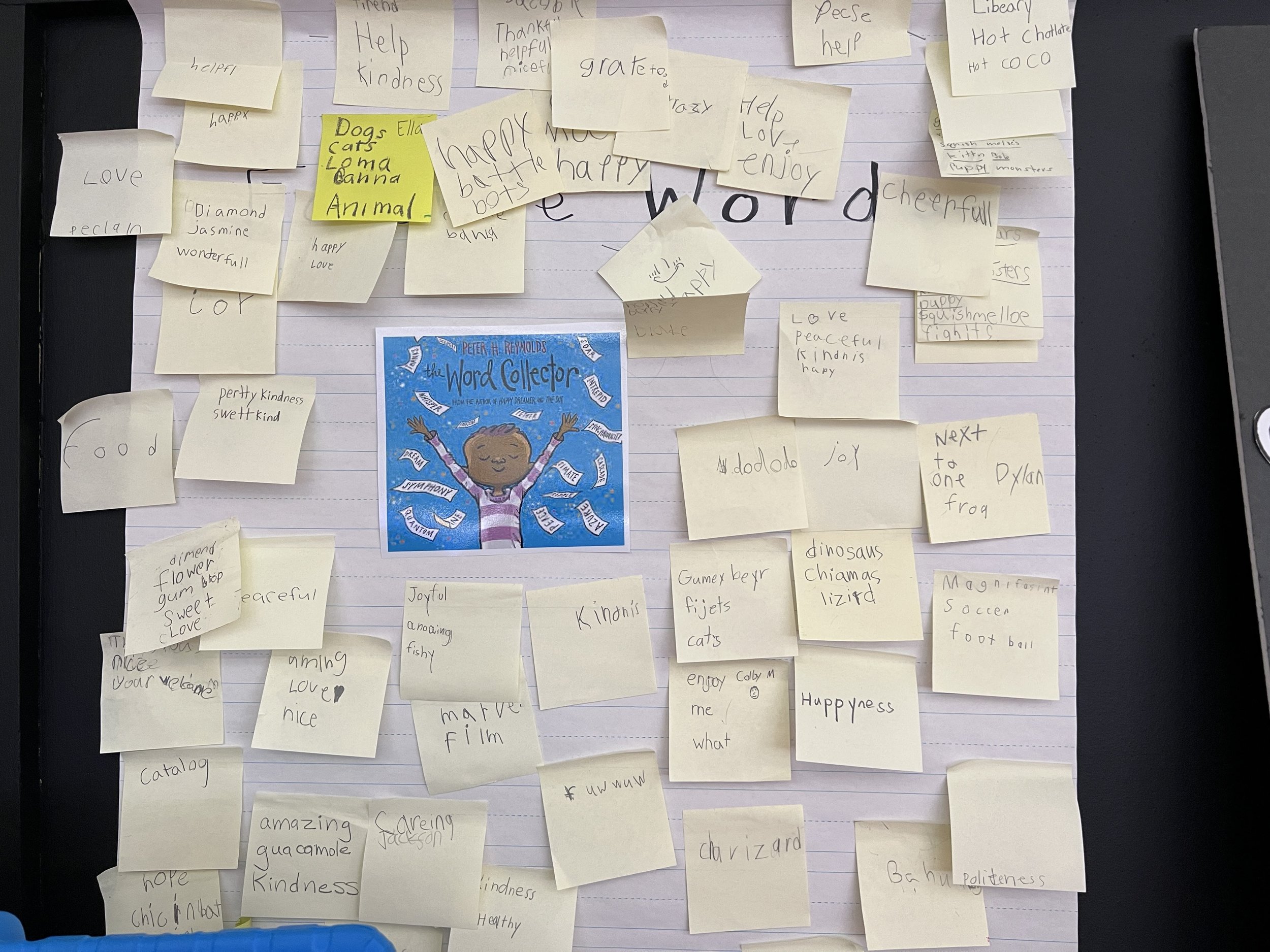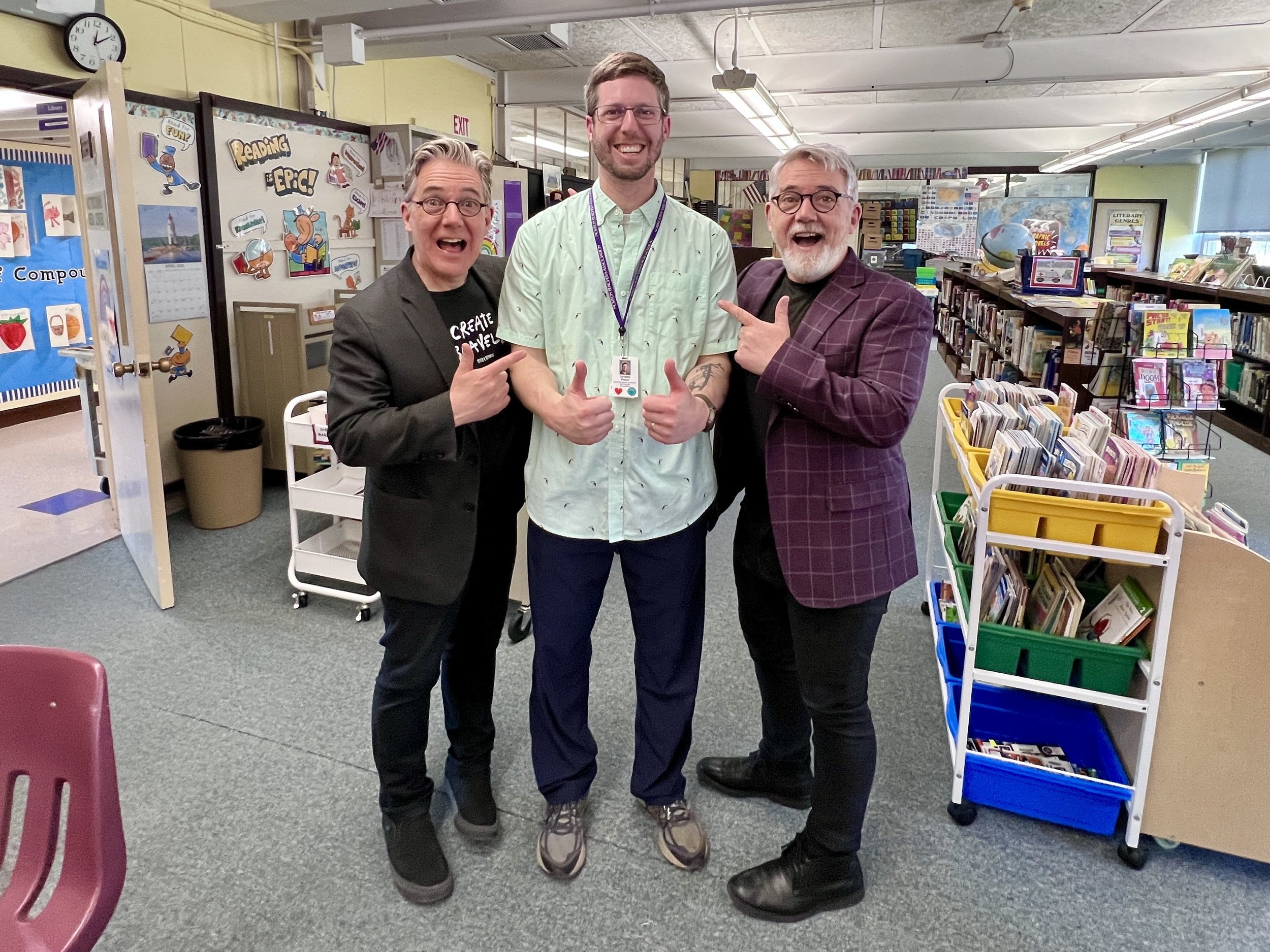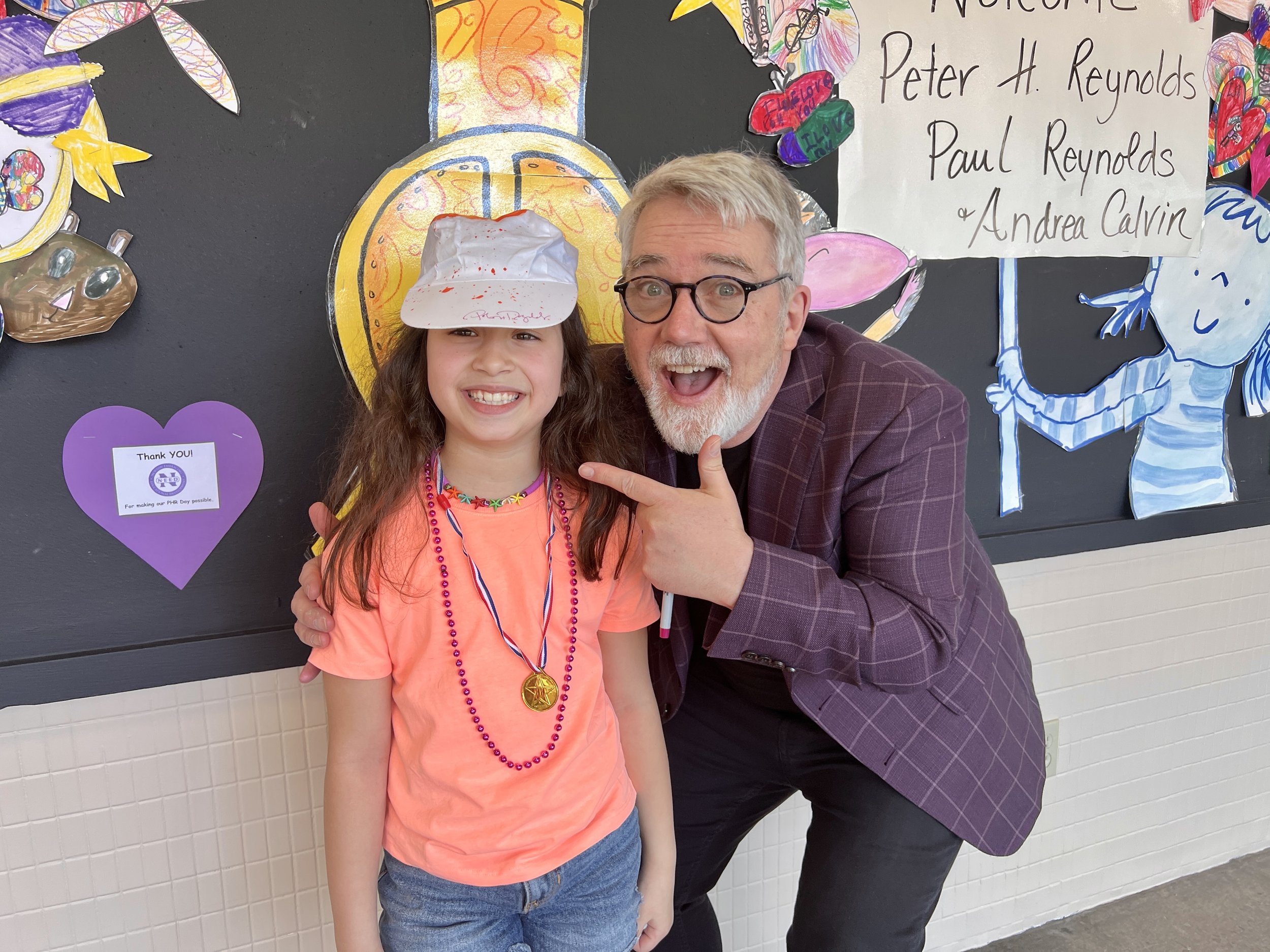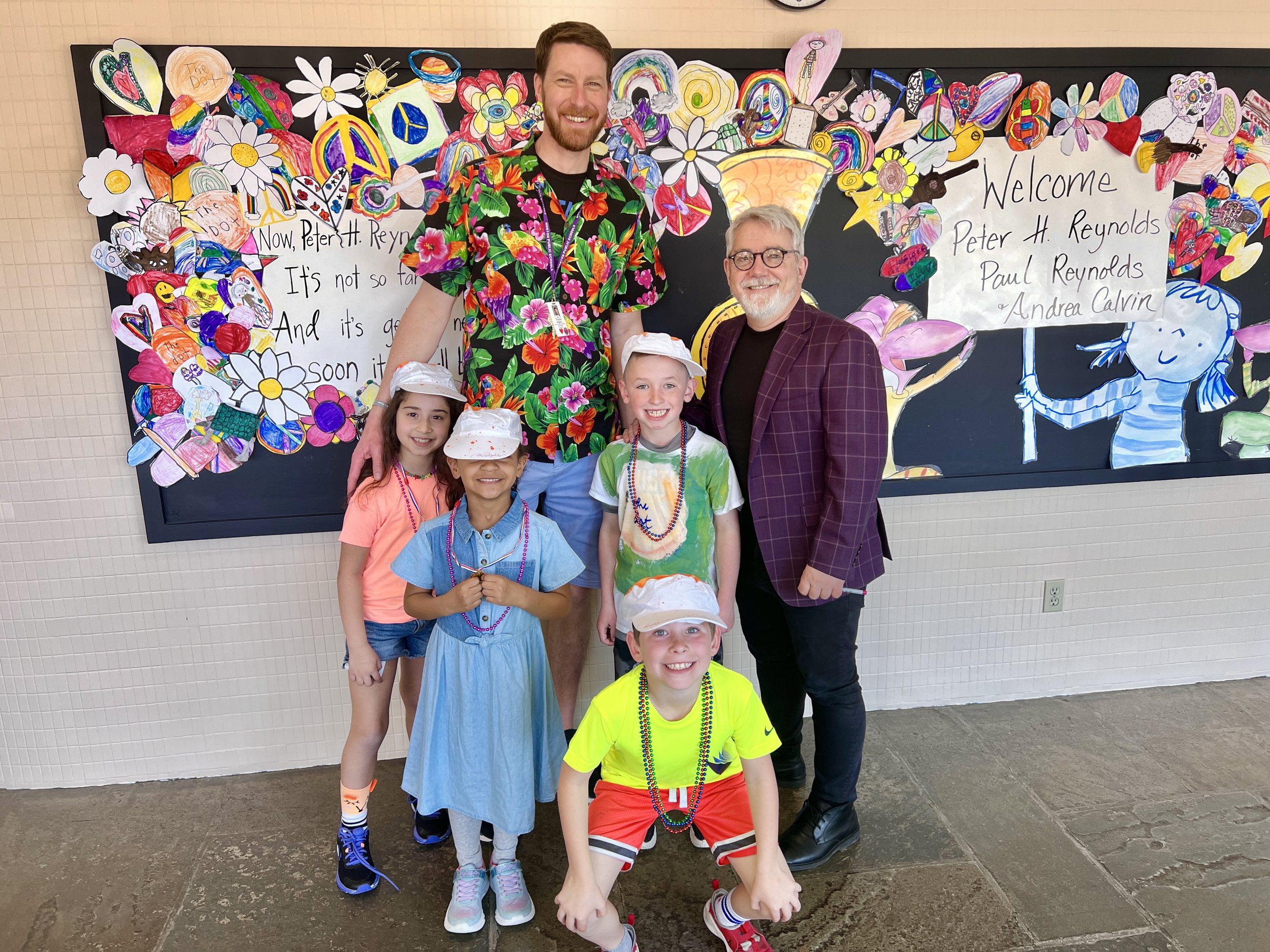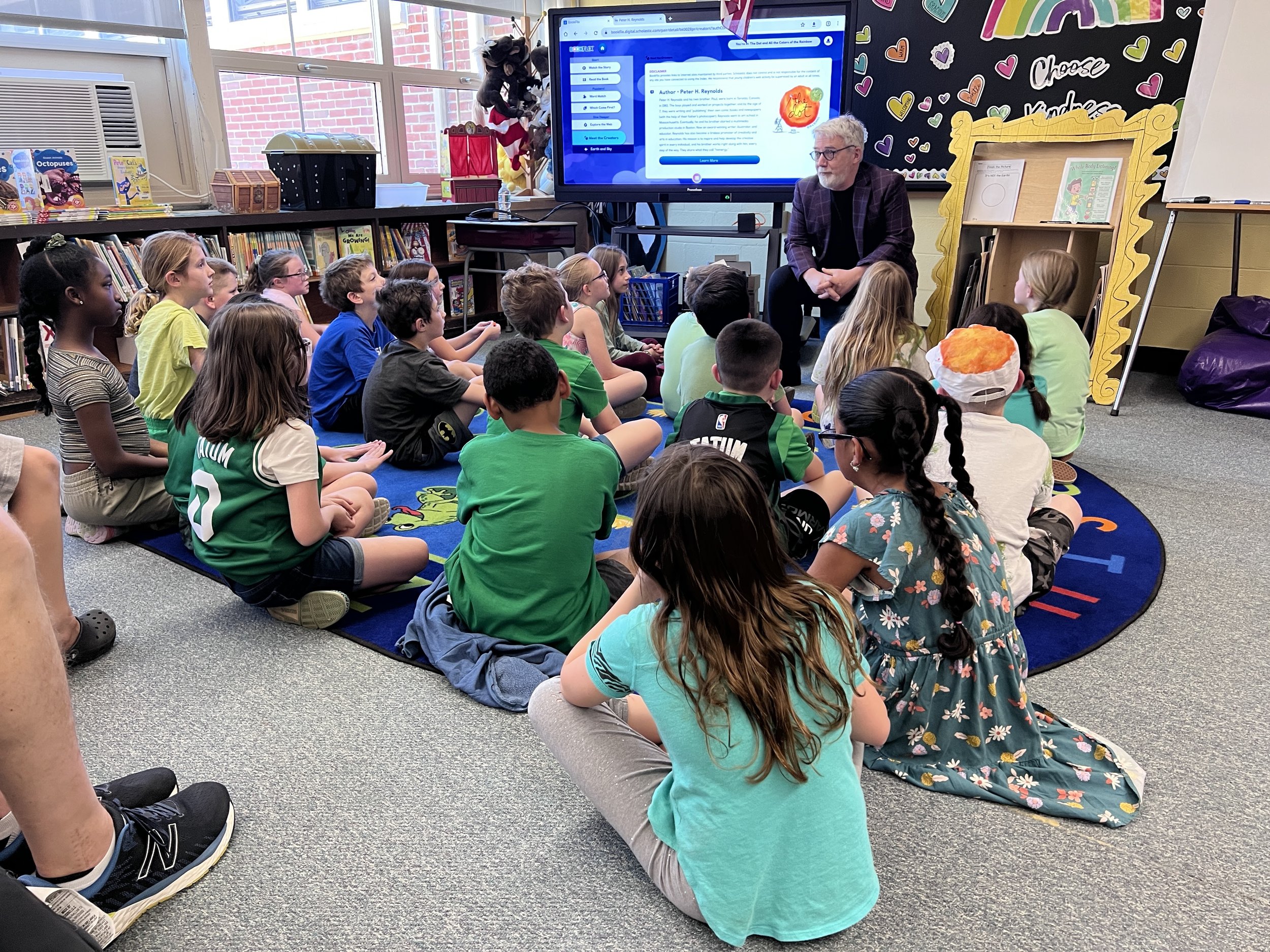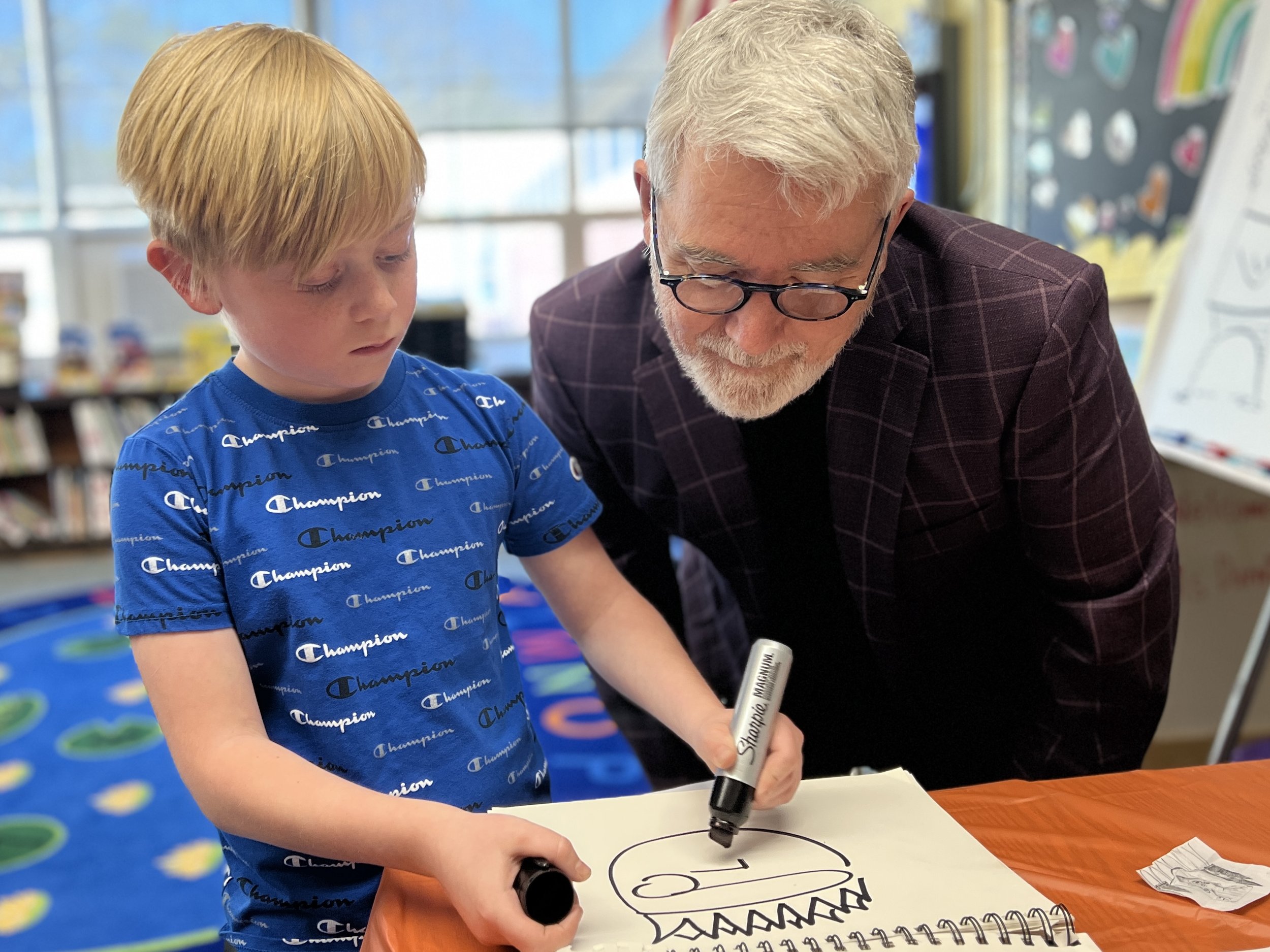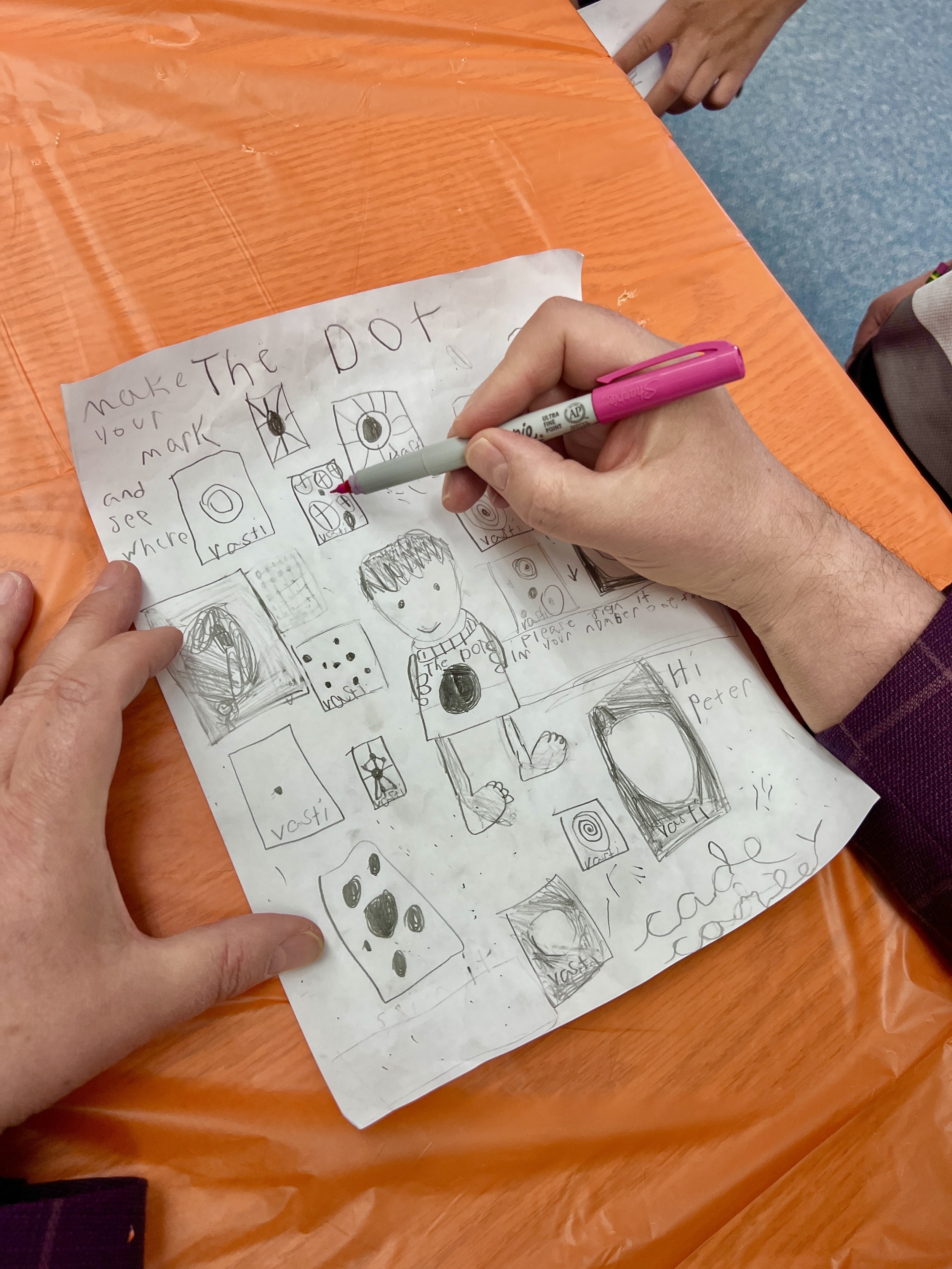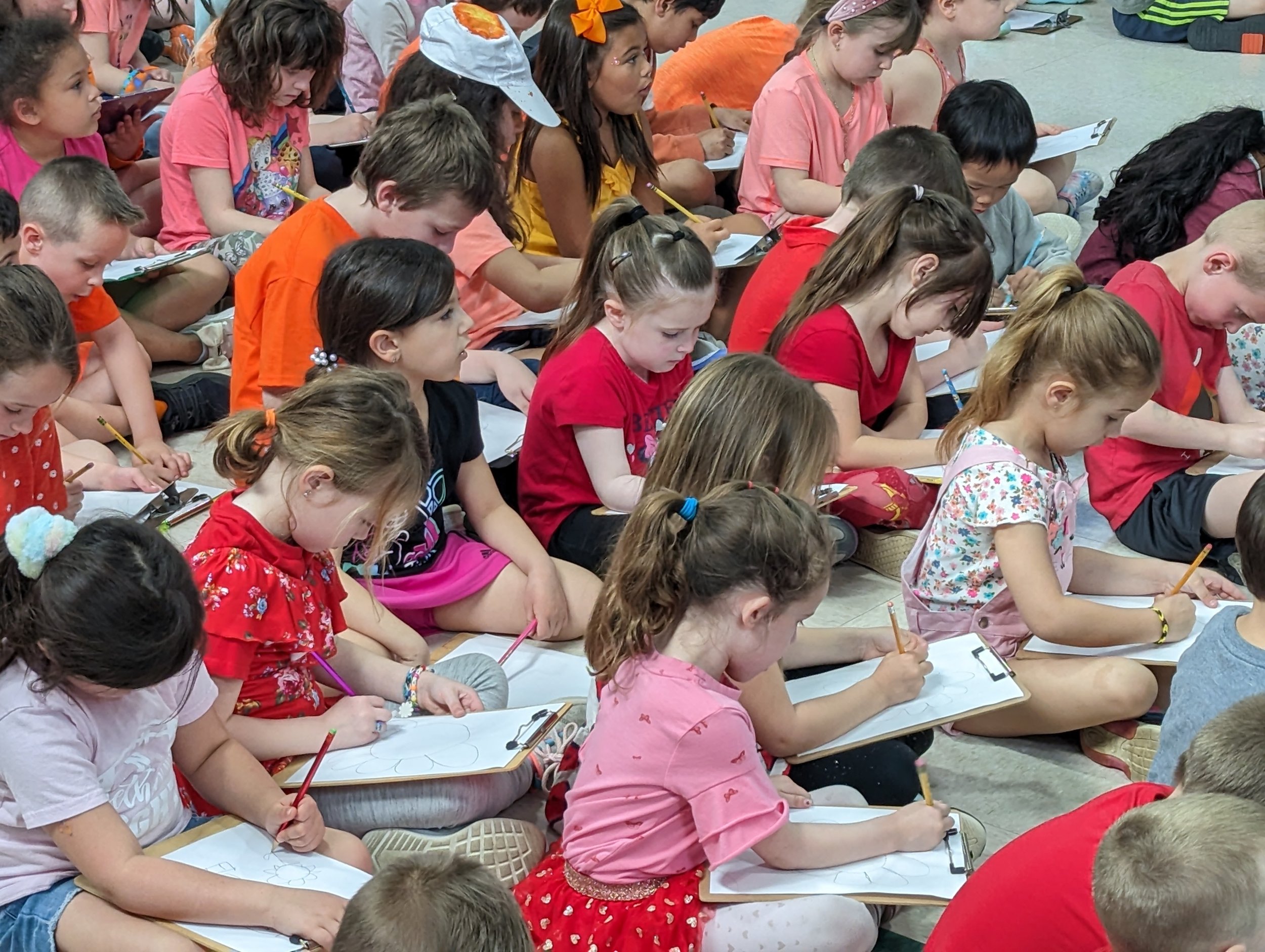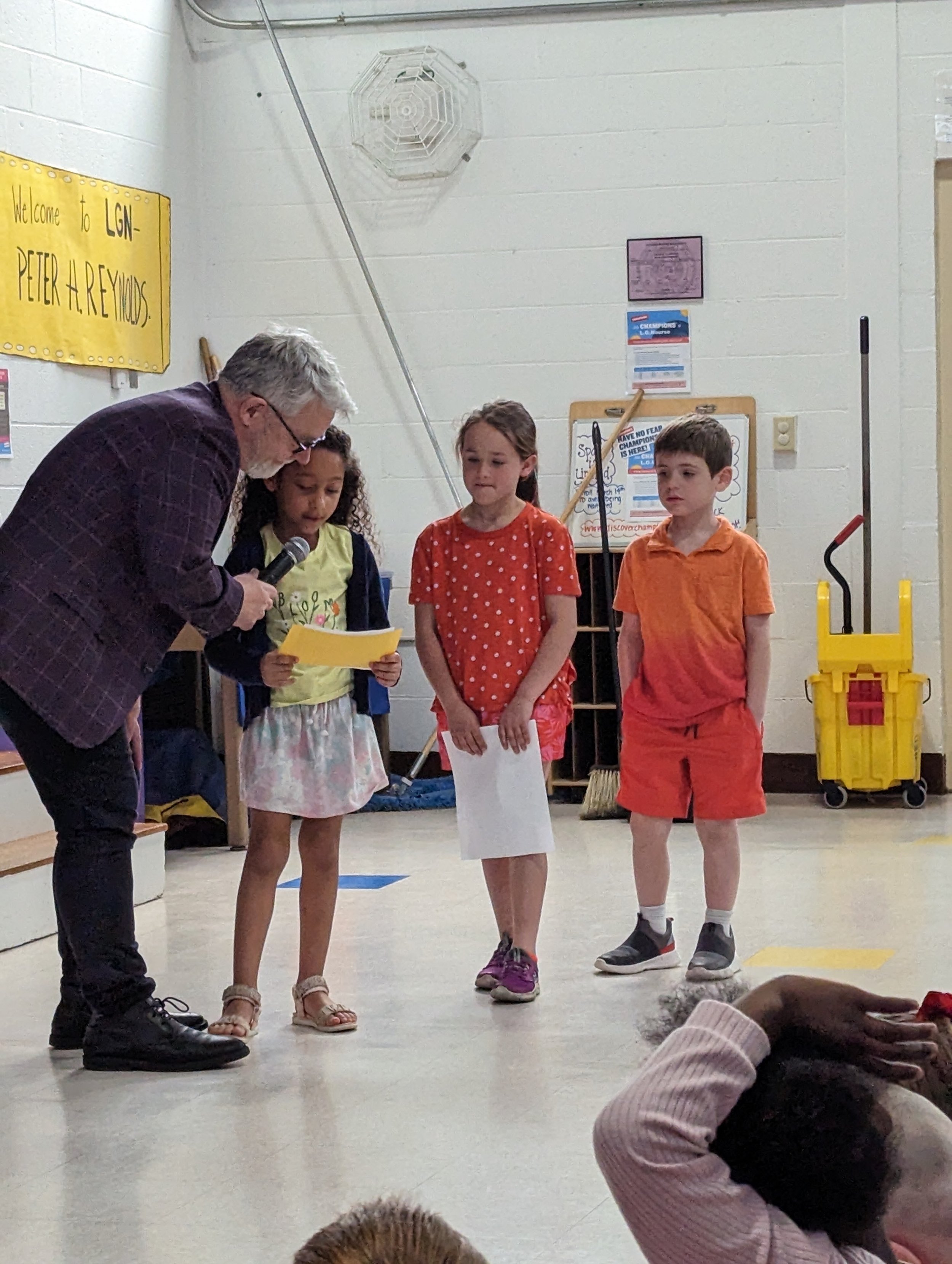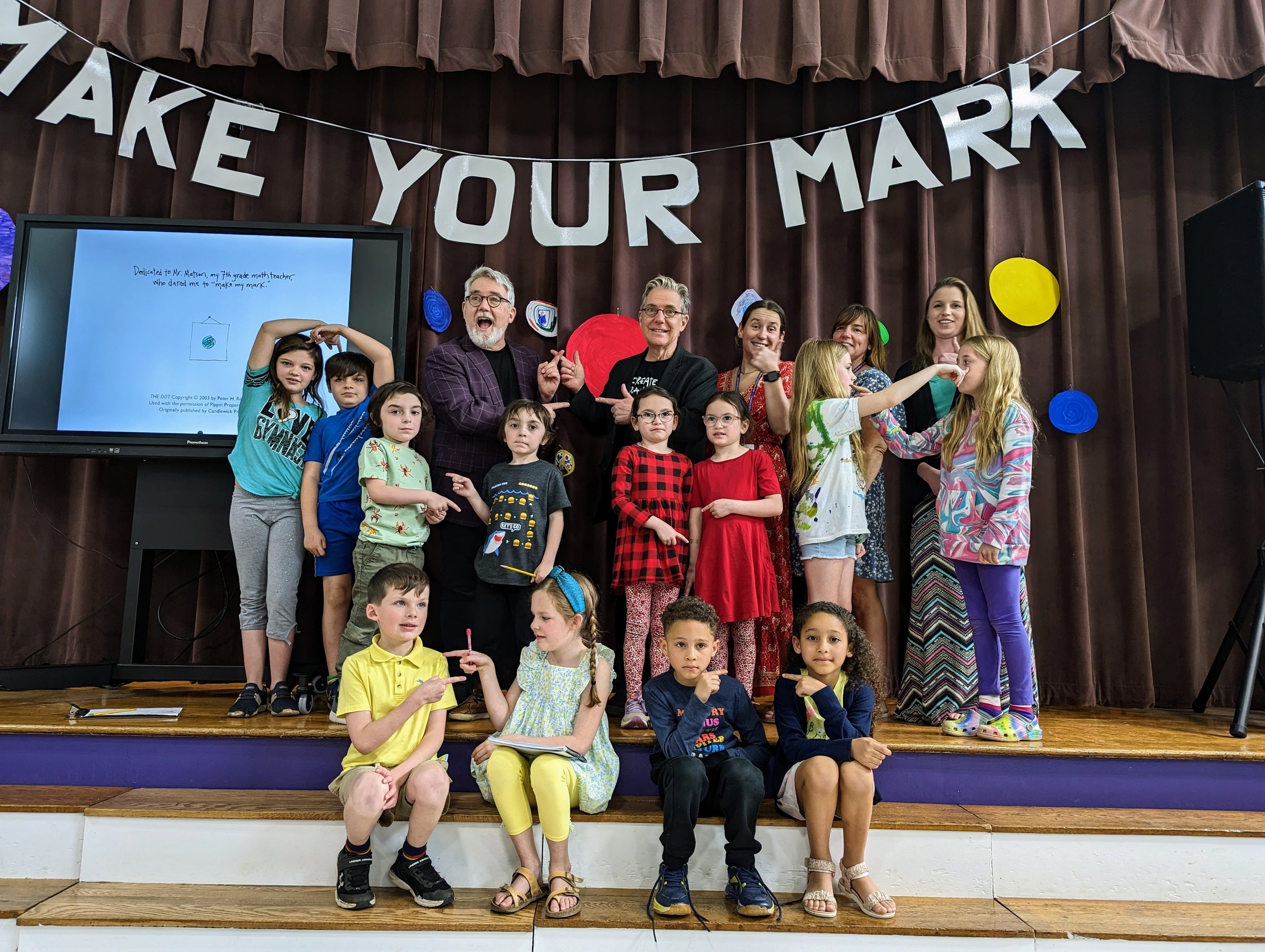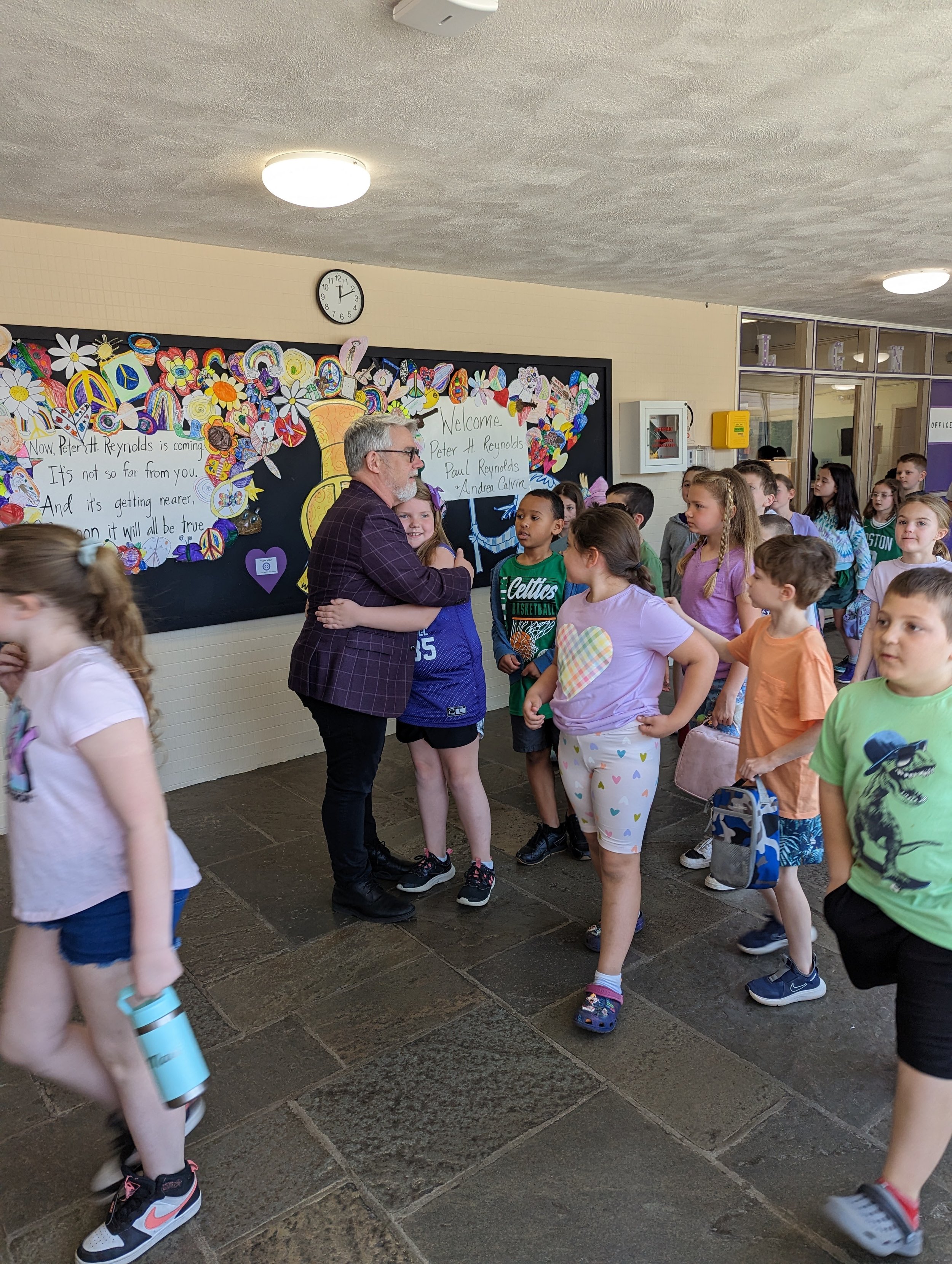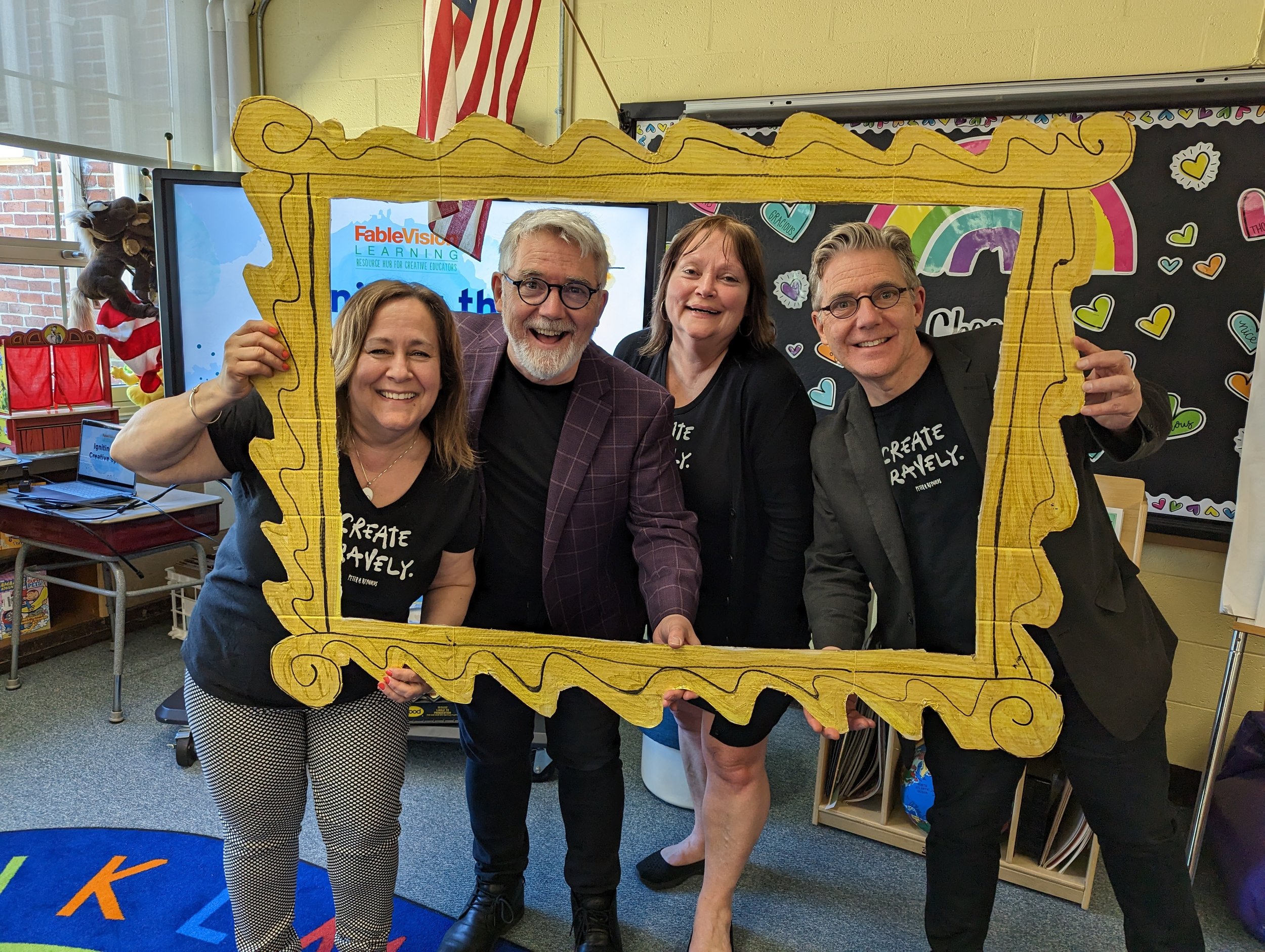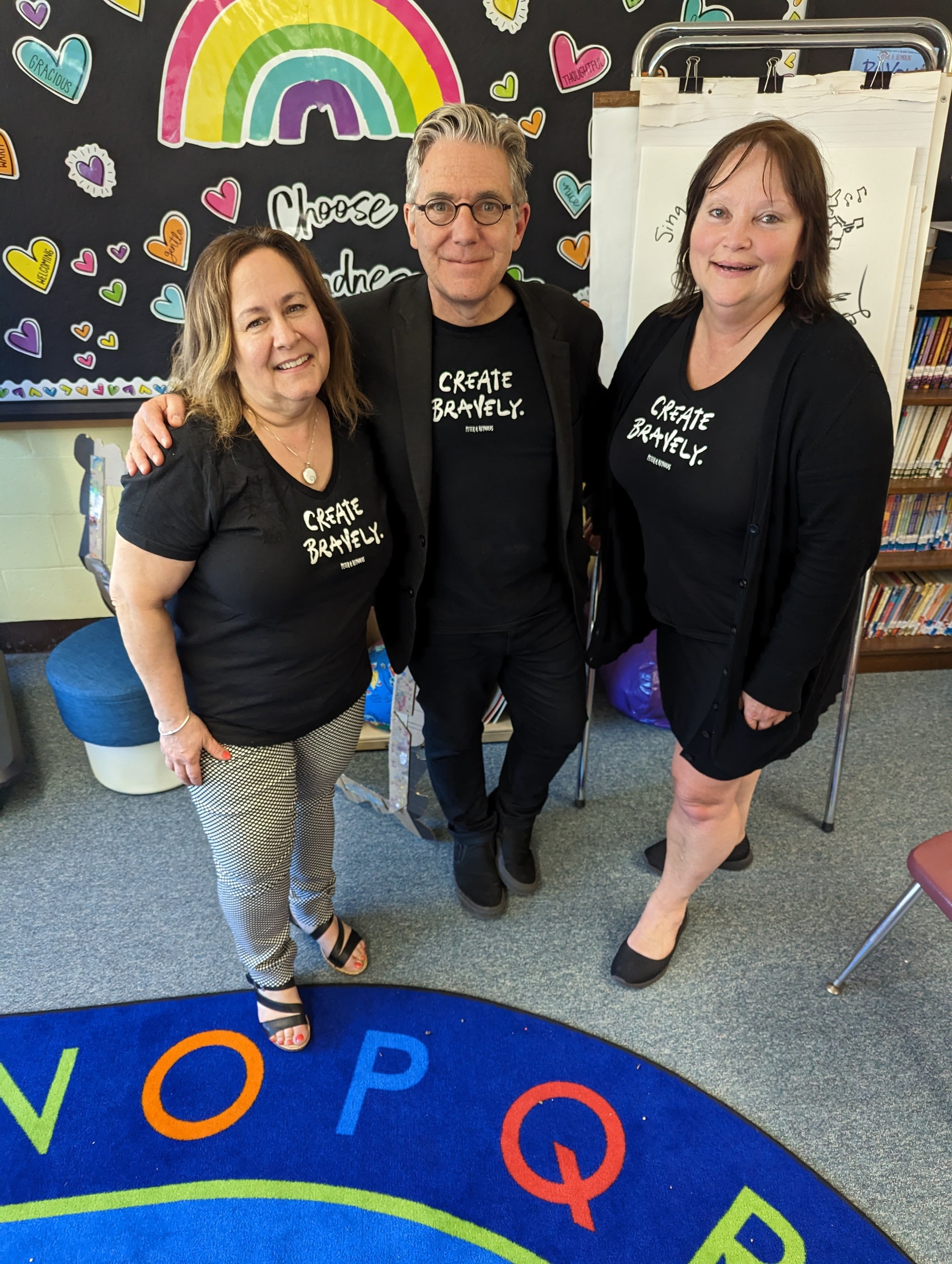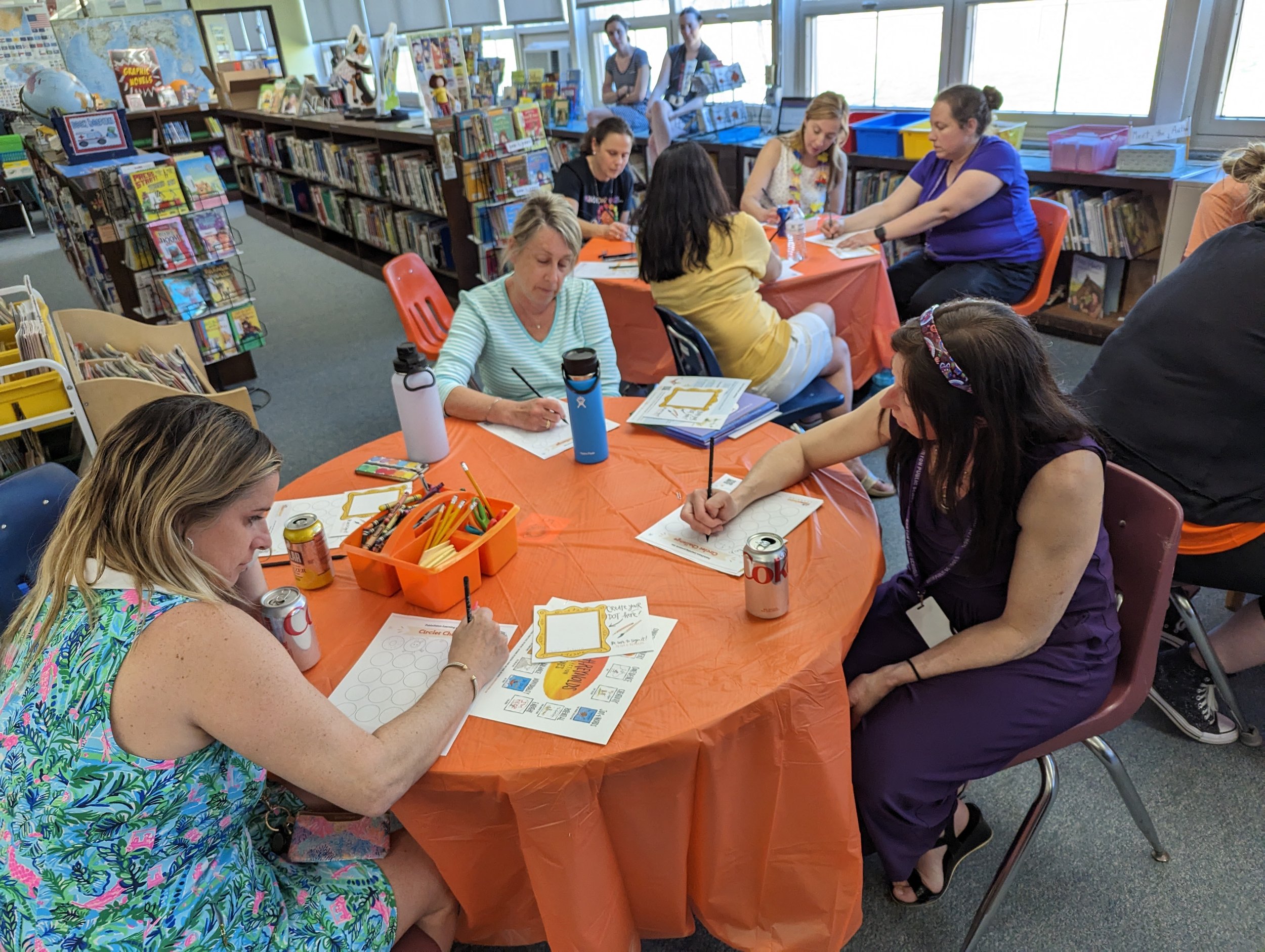FableVision Learning Spotlight Blog
Categories
- Animation-ish 42
- Books 21
- Civics! 2
- Classroom Spotlight 17
- Conferences and Events 20
- Creative Educator 3
- Creativity 25
- Distance Learning 13
- Dot Day 22
- FabClassroom 28
- FabFriday 19
- FabMaker Studio 66
- FabMaker Studio Classroom 13
- FableFive 7
- FableVision Games 3
- Free Educator Resources 36
- HUTCH 1
- Home Activities 5
- In the Classroom 34
- In the News 11
- International Dot Day 23
- Ish 1
- Library 1
- Mapping the World by Heart 7
- Paul Reynolds 10
- Peter H. Reynolds 54
- Professional Development 9
- STEM/STEAM 20
- Storybook Academy 2
- Teacher Spotlight 14
- The Dot 17
- The North Star 2
- Words and Their Stories 1
- Zoombinis 3
Embedding Creativity in the Classroom
Is This YOUR Year of Creativity?
It is our hope that classrooms are places brimming with creativity - with new and interesting ideas that spark students' motivation, love of learning, and ability to uniquely express who they are and what they know.
While sometimes it seems like creativity and the work of school are separate matters, the truth is that students learn best, and more deeply when information is presented creatively. In fact, there is a researched based method for incorporating creative thinking skills into the classroom.
Being able to see things in different ways and from different perspectives, imagining possibilities, making connections between unexpected concepts, and breaking through the “usual” way to discover alternatives are all creative skills that strengthen students’ understanding and set them up for creating a better future.
The Torrance Incubation Model, developed by psychologist E. Paul Torrance, incorporates these creativity skills into any lesson in any subject to enliven lessons and develop creative thinking in students (and teachers!). We have begun using this model to help teachers ignite creativity in their classrooms and make meaningful lessons that lead to deep learning.
In this model, a teacher weaves a creative skill into three parts of a lesson. The first part is heightening anticipation to get the students curious and excited. Perhaps in introducing the skill “Look at it Another Way” the students are presented with this image. What is it? How does it make you feel? Can you look at it another way and see something else? This creativity skill is then incorporated into the content, for example, of learning the elements of a story.
We do this in the next part, deepening expectations, by working with the content in a more thorough way while still practicing the creativity skill. This is when we dig into what the elements of a story are and what purpose they serve. While we do this, we can look at the story another way, like through the perspective of the villain. From this perspective, do the story elements change? There is a lot to explore this way, and the teacher can guide the class through analysis.
Finally, we must give the students the opportunity to use what they know outside of the context of the lesson. This is called extending the learning. The teacher may give the students the opportunity to retell, rewrite, or continue their favorite story from the perspective of the villain, demonstrating their understanding of story elements and how they move a story along.
Once we’ve journeyed through these three levels of a lesson and incorporated a creative thinking skill, the students’ minds are primed for incubation, which means they’ll hold onto the information longer and will be more ready to use it in any context to which they can connect it. They’ll also be better able to envision new ways to use and express what they know. Can you imagine the possibilities?
We believe that everyone is creative and everyone has a spark inside them. Torrance’s model, along with the 18 creative skills he defines, brings learning to a whole new creative level. Teachers that want to learn more about fanning the spark in their students and making creativity part of their everyday lessons can join our cohort of teachers taking our Certified Creative Educator Course at www.thecreativitycircle.org.
Sara Smith is the Director of Creative Education at FableVision Learning. Sara is an experienced K-12 educator, creativity facilitator and curriculum designer. She is an amateur but enthusiastic ukulele player and improv actor. She earned her master's degree in creativity from SUNY College at Buffalo. Now she works with FableVision Learning to inspire creative thinking in teachers and students through professional development and joyful learning experiences. She lives in Charlotte, NC, where she can happily and unabashedly use the word y'all.
CITATIONS
The Torrance Incubation Model can be found detailed in Torrance, E. P., & Safter, H. T. (1990). The incubation model of teaching: Getting beyond the Aha! Buffalo: Bearly Limited.
3 Ways to Make Your Classroom More Creative and Why
Creativity is one of the most powerful actions our brains can carry out. Some people think that being creative is something extra, like the seasoning on a meal, but in truth it is the meal. Without creativity, it’s as though you’ve just got raw ingredients (like knowledge, ideas, and know-how); however, when you use creativity to combine those ingredients in a meaningful way, you’ll find that you’ve turned individual components into something substantial, useful, and unique.
That’s why in Bloom’s Taxonomy, “creating” is at the top!
Creating something new and useful is the work of progress. Both the Partnership for 21st Century Skills and the World Economic Forum’s Future of Jobs report list creativity as a vital skill that’s only growing in importance. Both also include complex problem-solving in their lists, which requires creative thinking because known solutions don’t exist for complex problems.
You know we love drawing and painting, but we also know that creativity is much more than that. Creativity is where new inventions, medical breakthroughs, musical masterpieces, scientific discoveries, great novels, philosophical theories, and so much more are born. For students, the creativity that leads to those amazing things starts as practice in solving everyday problems with a creative mindset, in trying again and a little differently when something doesn’t work, in thinking up lots of ideas before choosing the one to go with, in dreaming up outlandish possibilities, in taking time to wonder about the things around them, in coming up with unusual ways to put things together, in being brave enough to test out their thinking.
We are here to help teachers understand and value these creative skills so they can provide students the opportunity to practice them and become confident creators. Many of these students will go on to change history, but equally important are those who learn to create meaning in their lives and the lives of those around them through their creativity.
Here are three ways to make your classroom more creative today.
Respond in an open way. When a student provides a wrong answer, instead of saying, “No” or “Not quite” or even “Try again,” try staying open and saying something like, “Interesting, can you explain your thinking?” or “Walk us through how you got there.” Mistakes can be the most valuable learning tools, but not if the response to them shuts down further thinking. Also try these same phrases for correct answers! Just saying “Yes!” to a correct answer puts an end to the thought process as well.
Surprise your students. The science of surprise is fascinating and tells us that surprising moments pique curiosity and create the desire to share with others. Not to mention that playfulness is a creative skill. Students will remember and talk about novel moments in class. So, wear a crown when teaching about monarchies, have the students work UNDER their desks for a while, play rainforest sounds over speakers when studying the rainforest, or have a puppet give a mini-lesson. The limit is only in your imagination.
Provide opportunities for divergent (possibility) thinking. This means giving the students time to think of a lot of ideas around something they are working on. Perhaps have them write 5 different ways to open a story or other piece of writing before they choose which one to use, or see if they can come up with 5 different ways to solve the same math question, or give them the answer to a question (igneous rock!) and have THEM come up with possible questions for which that is the answer.
Good luck!
Sara Smith is the Director of Creative Education at FableVision Learning. Sara is an experienced K-12 educator, creativity facilitator and curriculum designer. She is an amateur but enthusiastic ukulele player and improv actor. She earned her master's degree in creativity from SUNY College at Buffalo. Now she works with FableVision Learning to inspire creative thinking in teachers and students through professional development and joyful learning experiences. She lives in Charlotte, NC, where she can happily and unabashedly use the word y'all.
CITATIONS:
3 Ways Creativity Principles Can Fuel Self-Acceptance
By Sara Smith, Director of Creative Education at FableVision Learning
As educators and caregivers, we want to help children develop a strong sense of self. We know fostering a healthy self-image is vital for a child's overall well-being. Fortunately, the science of creativity offers us three valuable principles that not only promote creative thinking but also help build confidence, resilience, and self-worth.
1. Embracing Divergent Thinking: Quieting the Inner Critic
At the heart of creativity lies divergent thinking – the ability to generate many, varied ideas. Part of divergent thinking is deferring judgment, or waiting to evaluate our ideas until we have fully explored the possibilities and allowed ourselves to freely express our imagination without fear of criticism or limitation.
Teaching children how to defer judgment means encouraging them to quiet that inner voice that tells them their ideas aren't good enough. It means not being dismissive when they express ideas that may be silly or impossible. It looks like asking for their thoughts and ideas and being willing to try out new ways of doing things based on their contributions. It sounds like responding to them with genuine curiosity and interest. Modeling openness and acceptance is the best way to instill it in our young ones.
Not only does this principle create a climate of openness and acceptance, but it can also teach children to love and accept themselves. As students learn to silence their inner critic and embrace their originality, they begin to cultivate an appreciation for their own ideas and capabilities. As they remain open to the beauty of new ideas when ideating, they learn to be open to the beauty of who they are and the uniqueness they bring to the world.
2. Affirmative Judgment: Focusing on the Positives
In the creative process, we do need to eventually evaluate and converge on our ideas. Here, affirmative judgment plays a crucial role. When we engage in affirmative judgment, we focus on what’s right, what’s good, and what’s positive about ideas rather than immediately jumping to all that is wrong or impossible. This keeps us focused on how to move forward rather than feeling defeated.
Encouraging children to look at their ideas and their work with an affirmative perspective builds their self-worth and self-acceptance. When students become practiced in seeking out the positives, they are more able to see their own strengths and best qualities.
Children hear the way we talk about ideas, about others, and about ourselves. To stock their self-management toolbox, they need to witness affirmative judgment from us. They need to hear us tell others what we appreciate about them; they need to hear us talk about what we care about and then watch us seek it out; they need to hear us express our own strengths with pride. They also need to hear us say good things about them, because the way we talk about them becomes their self-talk, and positive self-talk is one of the most powerful tools for improving our self-image.
3. Embracing the Iterative Process: Reframing Mistakes
Creativity is a journey that can be messy and full of obstacles and setbacks. Fumbles and failures inevitably require us to go back and try again a little differently, over and over. Accepting that as part of the process allows us to be resilient when we run into issues or things don’t go as we hoped or expected.
Our lives are also creative projects. When we can view ourselves from a creative perspective, we see that, of course, mistakes and missteps are going to be part of the process of being a person. Knowing this gives us permission to forgive ourselves, recognize our potential, and pick back up and continue trying.
Apply this principle by reminding the children in your life of the times they were resilient and persevered. Tell them about times you made mistakes and learned from them. Reassure them that they are wonderful and loved, even when they’ve messed up.
Creativity serves as a powerful tool in nurturing self-acceptance in children, providing them with the skills and mindset needed to navigate the hard parts of being human. By fostering a culture of creativity that celebrates uniqueness and expects iteration, we empower children to appreciate their imperfections, embrace their strengths, and to see themselves as the valuable humans they are.
Did you know that FableVision Learning offers an online Creative Educator Certification Program? At the end of this year-long certification program you will be prepared to teach creatively, nurture the creative spirit of your students, and practice the tools and skills of creativity in the classroom.
Sara Smith is the Director of Creative Education at FableVision Learning. Sara is an experienced K-12 educator, creativity facilitator and curriculum designer. She is an amateur but enthusiastic ukulele player and improv actor. She earned her master's degree in creativity from SUNY College at Buffalo. Now she works with FableVision Learning to inspire creative thinking in teachers and students through professional development and joyful learning experiences. She lives in Charlotte, NC, where she can happily and unabashedly use the word y'all.
Creativity Flows at Hartland Elementary in Vermont
Peter H. Reynolds is often asked for advice on how to start drawing. His answer – put a pencil on a piece of paper and move it around. The same tip can be applied to animation as young animators at Hartland Elementary School in Vermont discovered during a recent program with FableVision.
The school launched its Create Bravely extravaganza with a Family Night filled with animated films and activities for all ages.
The following day students met Peter H. Reynolds virtually, setting the stage for the animation workshops that filled the rest of the day. Using Animation-ish, Peter’s leveled online animation-tool, students discovered how three frames with slight movements can create movement.
Check out some of their work:
Would you like to host a Create Bravely Family Night or animation workshops?
Send an email to Andrea Calvin at andrea@fablevision.com.
Going Places Family Night with Portland Public Schools and The Portland Art Museum
Young creatives revved their engines at Maine’s Portland Museum of Art in October for the Portland Public Schools/FableVision Going Places Family Night featuring author Paul Reynolds.
Paul welcomed families to the museum and started the night with a reading of Going Places, the perfect picture book for any STEAM library, and then launched into a showing of the animated film version of Ish, written by Peter H. Reynolds and animated by FableVision Studios. As a bonus the museum purchased a copy of Going Places for every child. These stories set the stage for what was to come.
WIth books in hand, families journeyed to another part of the museum for dots and dots of activities that were centered on sparking creativity and collaboration. Every Family Night hosted by FableVision is customized for the schools and this one was no exception. The first-ever Going Places Build-Your-Own Go-Cart station was a hit with young engineers as they built a moving vehicle with recycled materials.
Check out the photos from the night.
Would you like to host a Create Bravely Family Night? Send an email to Andrea Calvin at andrea@fablevision.com
FableVision/Reynolds Center Celebrates Creativity at the ED Games Expo
FableVision/Reynolds Center Celebrates Creativity at the ED Games Exp0
From engineering a building that could withstand an alien invasion to rescuing Zoombinis to crafting a hit broadway musical about the national parks to exploring the culture of the Sugpiaq tribe in Alaska, the 9th annual ED Games Expo in DC was fueled by creativity and FableVision Games.
FableVisionaries Paul Reynolds, Andrea Calvin, Mary Johnston, Nadya Karpova, Snow Dong and Elizabeth Rowe from TERC worked with students from the DC area as they explored the different learning games on Wednesday, Sept. 20 at the John F. Kennedy Center for the Performing Arts REACH Center.
The ED Games Expo is a showcase of game-changing education technology innovations developed through programs at the Institute of Education Sciences, the U.S. Department of Education, and across government. FableVision/The Reynolds Center was invited to highlight several of their tools including: Zoombinis, FabMaker Studio, Civics: An American Musical and Nunaka.
At the event students got hands-on with the tools in the larger expo where specific classes were invited to join a one hour master class either using FabMaker Studio or Civics.
The following day, FableVision/Reynolds Center co-founder and CEO Paul Reynolds and vice president Andrea Calvin shared about FabMaker Studio at ScIC13: Science is Cool 13 UnConference. You can check out the replay here.
Nebraska Educators Preview Peter H. Reynolds SEL Program
When Nebraska educators joined together July 17-19, 2023 for the Nebraska State Education Association -University 2023 summer conference, they were joined by Peter H. Reynolds and his team to share his powerful message on resiliency and bravery. His team included his sister, Jane Reynolds, from England, Deanna Braunlin from Wyoming, and Sara Smith from North Carolina, who all enjoyed seeing Nebraska!
Earlier in the year, NSEA President Jenni Benson visited Nebraska elementary schools reading Peter’s book Be You! for Read Aloud America and was amazed at the impact of the book with students.
Jane Reynolds, President, FableVision Learning with Jenni Benson, President, NSEA
Peter joined virtually from Paris projected on two enormous screens in the ballroom. He reminisced about the time he was at NETA (2004) when he was asked to step in as keynote speaker. He had an advance copy of the newly created animation of his book The Dot which he shared with the audience. So they were the first to see the animation before it was released.
Just as Nebraskan teachers were the first to see The Dot animated film back in 2004, this time they were the very first to see Connect & Thrive: Story-Powered Circles, launching this week. Developed in conjunction with Partnerships in Education Resilience (PEAR), this new program provides off the shelf activities to use with elementary students in morning meetings or circles, using 4 of the books by Peter H. Reynolds to strengthen the students' sense of belonging.
This time Peter read his book Say Something and shared his inspirational story of being invited to think differently about math by his 7th grade math teacher, which opened his eyes to a career in animation. He emphasized that we often do not know the impact we make on students, even life changing impacts.
Following the keynote, Peter’s team delivered 3 sessions, each one with a different way to use storytelling to make a difference in student lives. Teachers who attended received copies of Peter’s books as well as the chance to use FableVision Learning programs for the next academic year. These included:
Start with a Story - storytelling, journaling, SEL and STEM cross-curricular activities linked to Peter’s books
The North Star Classroom - help students discover their potential and map their personal journey using Peter’s first book The North Star
Connect & Thrive: Story-Powered Circles - strengthen students’ sense of belonging within elementary school using Peter’s books, lessons and activities in morning circles
The FableVision Learning team enjoyed meeting the amazing teachers of Nebraska. We hope to soon be in a city near you!
RC-TLC Announces Plans for TLC Studios - Creativity Recharge Center
Creativity and Innovation Learning Center to Offer State-of-the Art Event & Presentation Space, Digital Video/Audio Studios & Maker Lab to Inspire Teachers and Students
The Reynolds Center for Teaching, Learning & Creativity is excited to announce the planned launch of TLC Studios - new multimedia learning center for all ages. The facility is being built out at 390 Washington Street in Dedham Square, and will provide educators with professional development programs focused on creativity, digital media, storytelling, and maker skills. TLC Studios will include digital audio/video/animation production and live-streaming studios, a podcasting studio, AR/VR resources, an engineering design and fabrication Maker Lab, as well as state-of-the-art presentation space and professional development workshop space.
“We’re thrilled to introduce TLC Studios as a space where educators can recharge their creative batteries and receive the support they need to nurture positive, purposeful creativity in their classrooms,” said Paul Reynolds, co-founder and Executive Director of RC-TLC. “Creativity and innovation are essential skills for empowering students to become creative problem solvers and agents of positive change.”
Peter H. Reynolds adds, “Thanks to the generosity of our supporters, we’ll soon have a place where we can give teachers even more of the TLC they deserve, as well as the hands-on creativity and technology skills and inspiration to bring back to their students.” RC-TLC has launched a fundraising campaign to help defray the considerable costs associated with the construction and launch of the center.
More information about the TLC Studios plan and launch can be found on the Reynolds Center TLC website.
To learn more, download our TLC Donor Level information one-sheet.
Peter H. Reynolds Creates Bravely with Students at The Conley School
The halls were filled with artwork and laughter could be heard from every room as Peter H. Reynolds walked the halls of the Conley School with the principal Karen Downey.
Organized by the school’s art teacher Cassie Horton, Peter H. Reynolds made a special trip to the elementary school in Whitman, MA. He was overwhelmed by the kindness that poured from every student and the creativity that sparked from the staff. During his two assemblies that included a reading, draw-along, and a Q&A session, Peter got to know the students of Conley.
If you are interested in learning more about custom programs, family nights, and author visits email the team at info@fablevisionlearning.com
Washington Elementary School, New Hampshire
There’s something special about the little New Hampshire school at the top of a steep dirt driveway. Inside the doors of Washington Elementary School kindness, creativity, and curiosity flows. Recently the school welcomed Paul and Peter H. Reynolds and the FableVision Team for a Family Night, school visits, Animation-ish workshops and teacher PD.
If you are interested in learning more about custom programs, family nights, and author visits email the team at info@fablevisionlearning.com
Deans Mill Elementary in Connecticut
Deans Mill Elementary School in Connecticut is overflowing with writers and animators following a visit from FableVision Learning team members, Andrea Calvin, Mary Johnston, and Avivia Schreiber. The elementary school welcomed the team for hands-on, in-person student workshops using Animation-ish and The Peter H. Reynolds Storybook Academy and cheered when Peter H. Reynolds joined virtually for a book reading and Q&A.
If you are interested in learning more about custom programs, family nights, and author visits email the team at info@fablevisionlearning.com
Peter H. Reynolds Inspires Young Writers at Nourse Elementary School
Julie Durmis, the Library Media Specialist at L.G. Nourse Elementary School might be Peter H. Reynolds’s number one fan. Having connected the dots with FableVision Learning in the spring of 2020, she had one goal - to bring the joy of Peter to the students in Norton, Ma. This school year her dream was realized.
Third-grade students explored storybook writing and character development through The Peter H. Reynolds Storybook Academy. As a special treat, FableVision Learning’s Andrea Calvin, a former newspaper journalist, hosted a One Minute Book workshop with the students. This set the stage for the special guests - Paul and Peter H. Reynolds.
On a sunny April morning, the Nourse School welcomed Peter H. and Paul Reynolds in song … The Dot Song, by Emily Arrow. The day was filled with stories, drawings, and laughter. Paul and Peter had a special lunch with bookmark contest winners and ended their visit by meeting with each third grade class.
Rounding out the day, Andrea Calvin hosted Nourse educators for a Creativity PD with tips on how to use Divergent Thinking in the elementary classroom.
If you are interested in learning more about custom programs, family nights, and author visits email the team at info@fablevisionlearning.com



